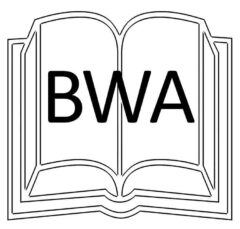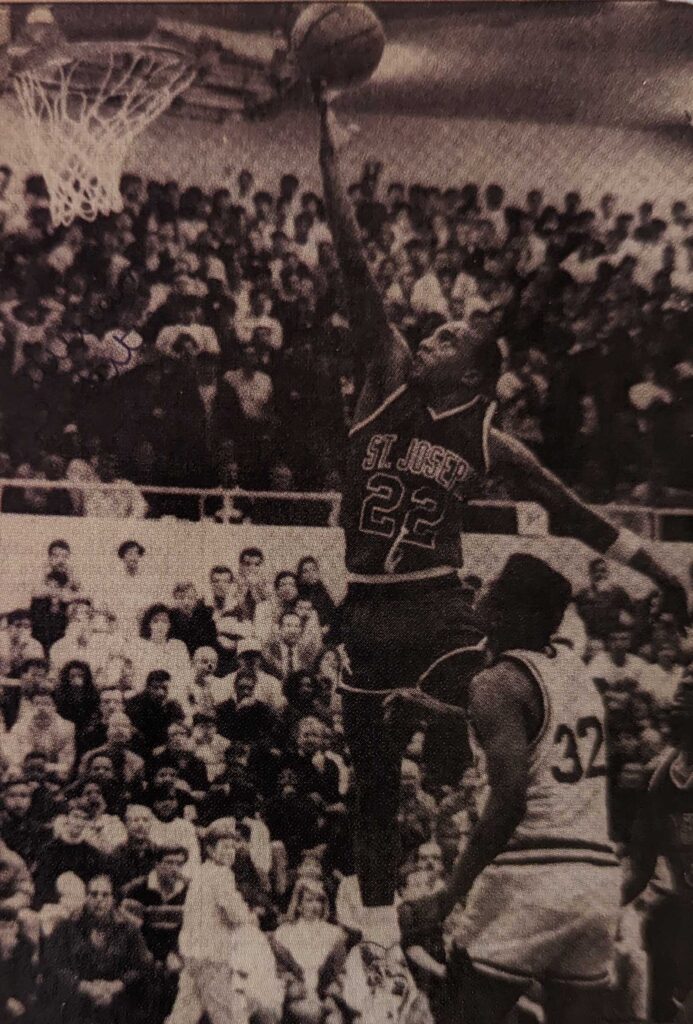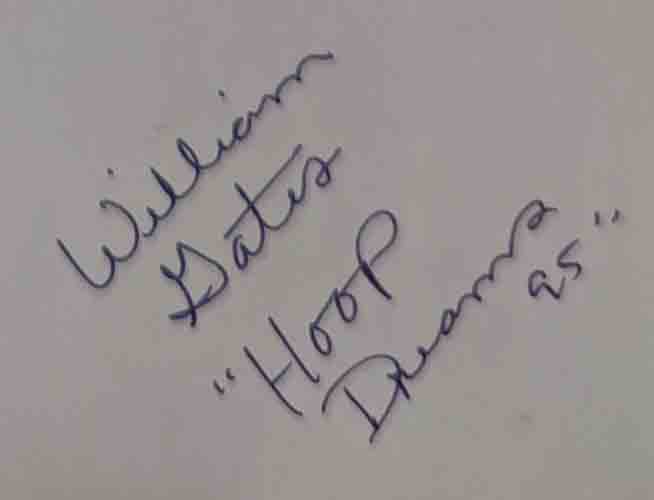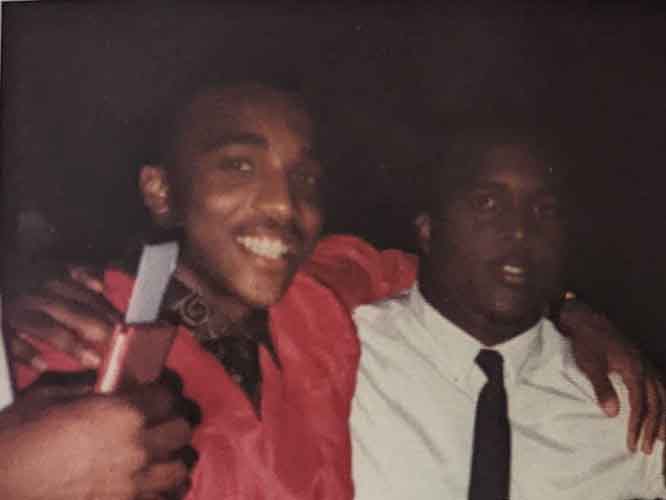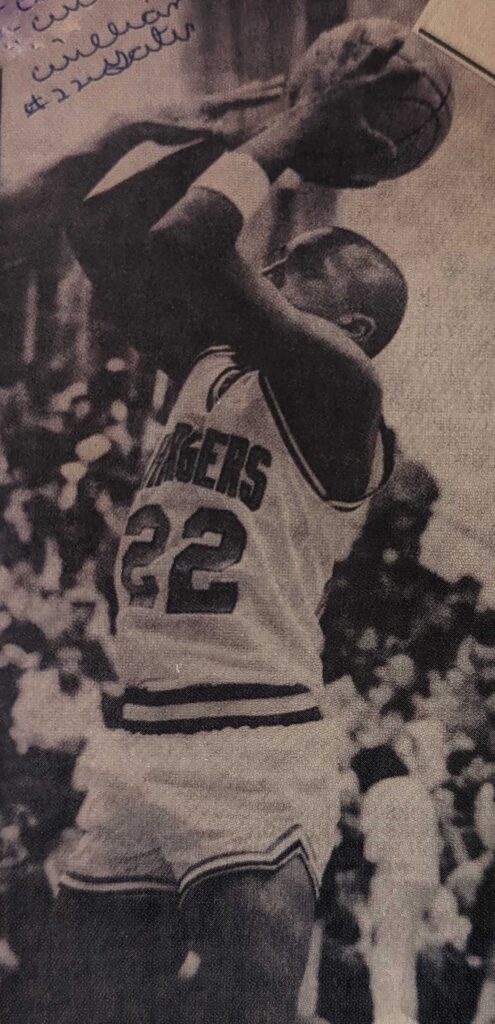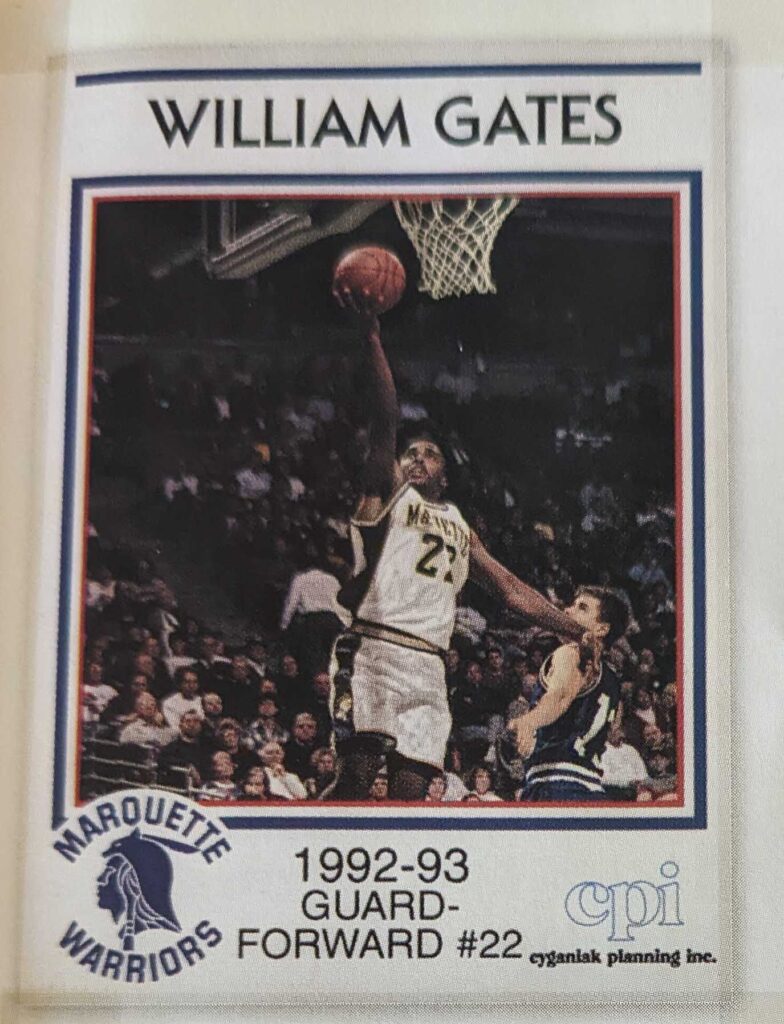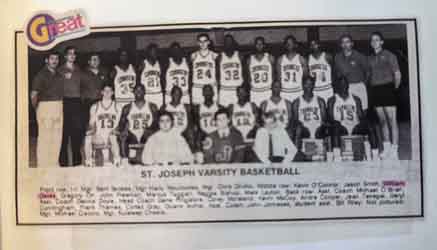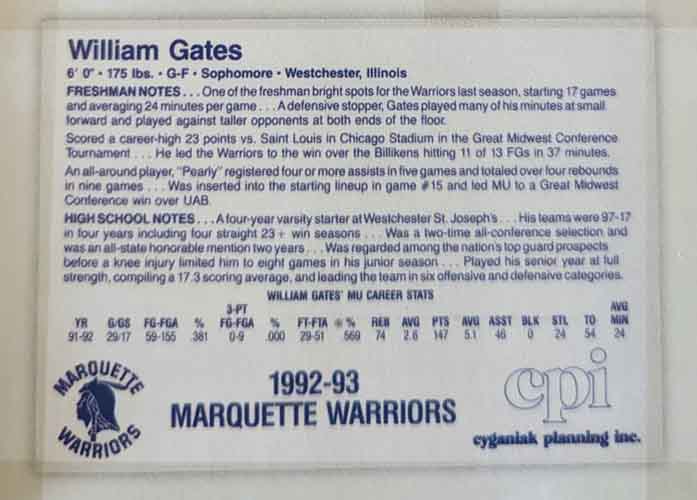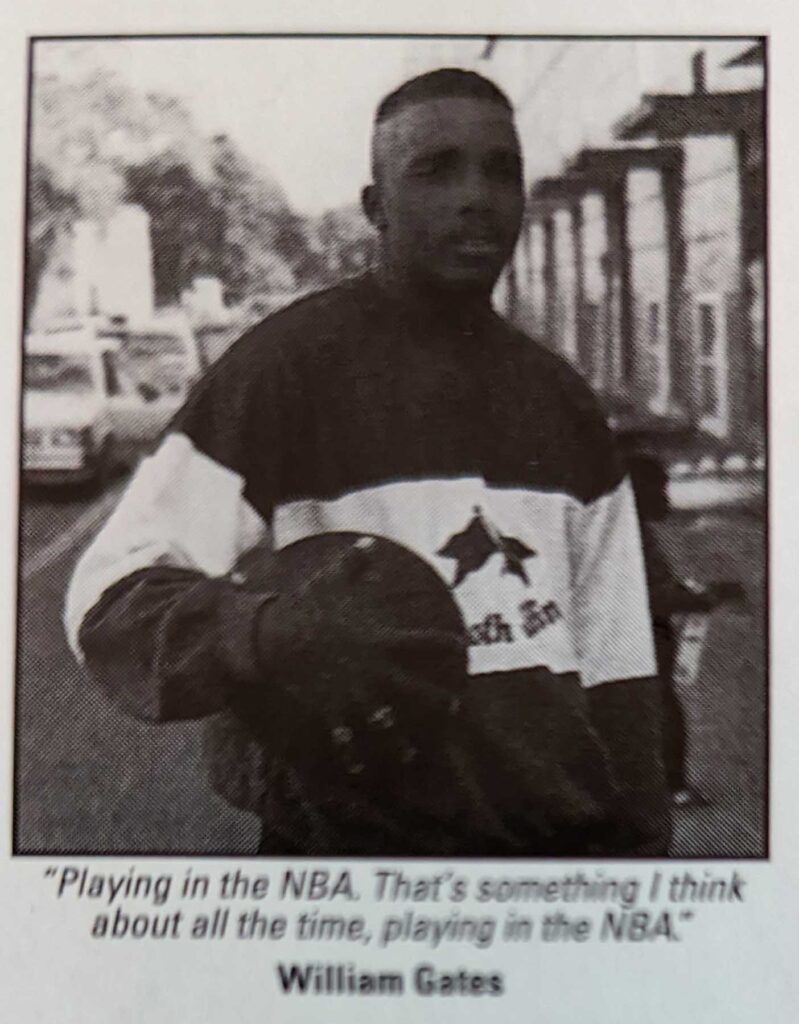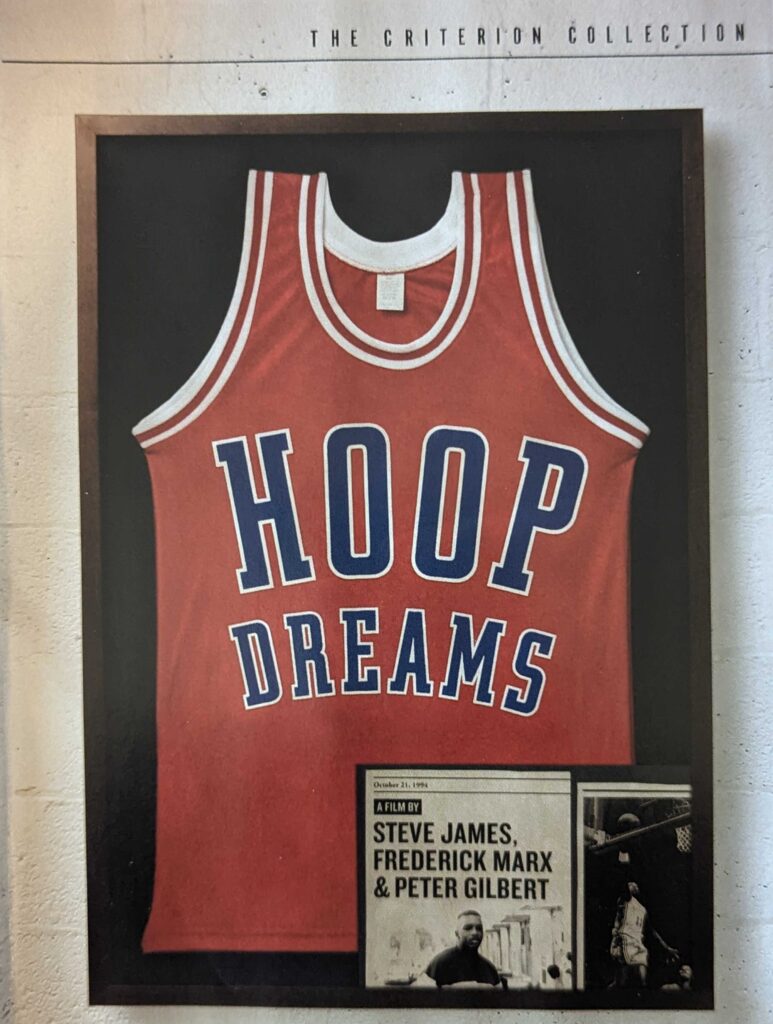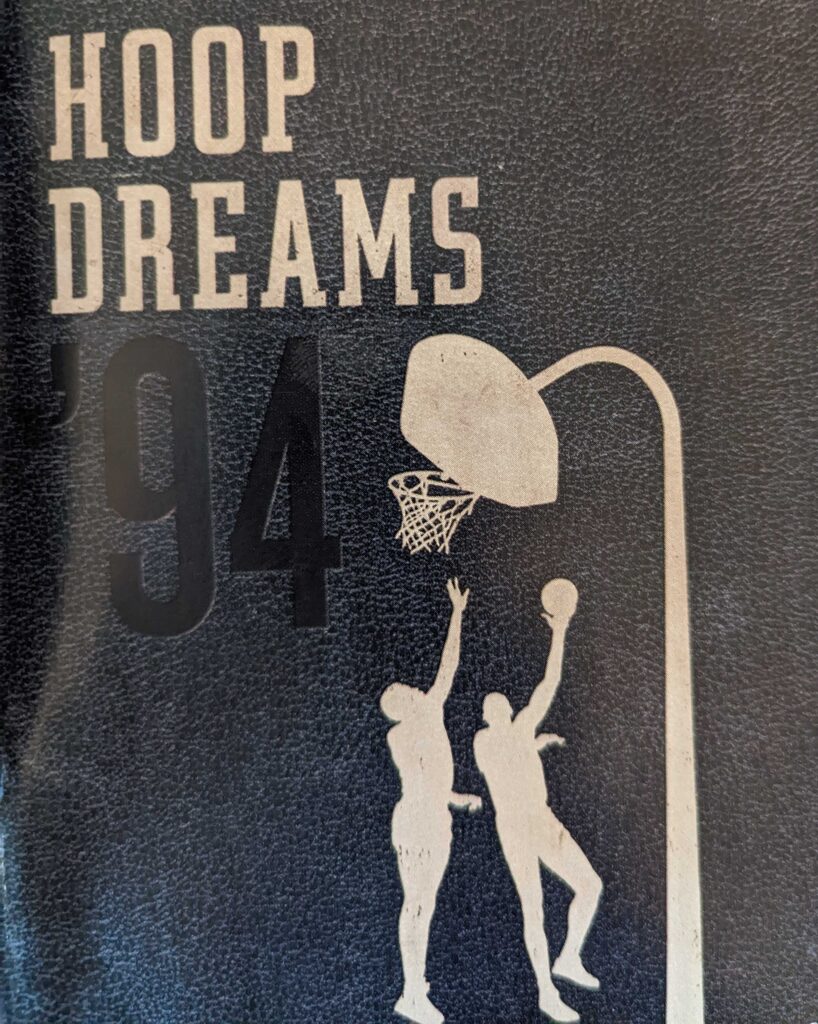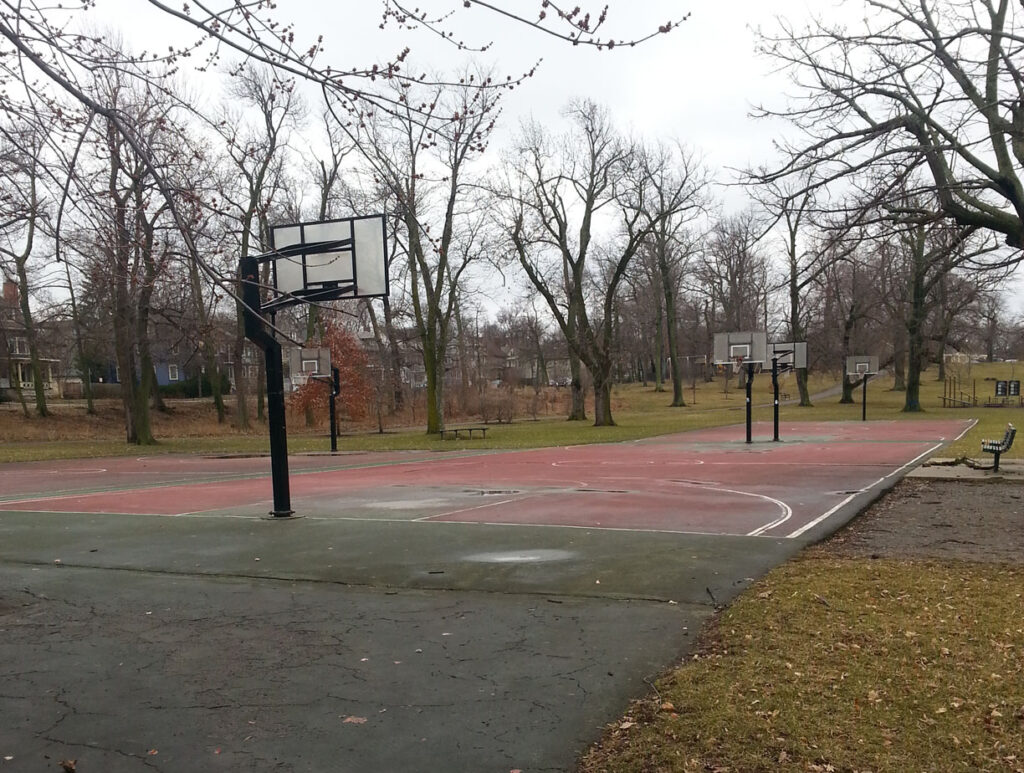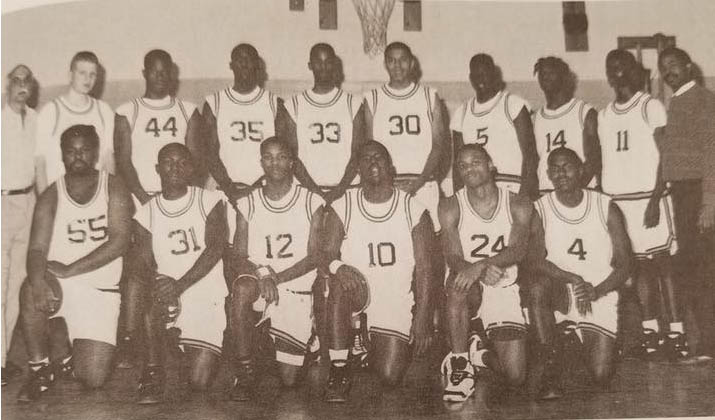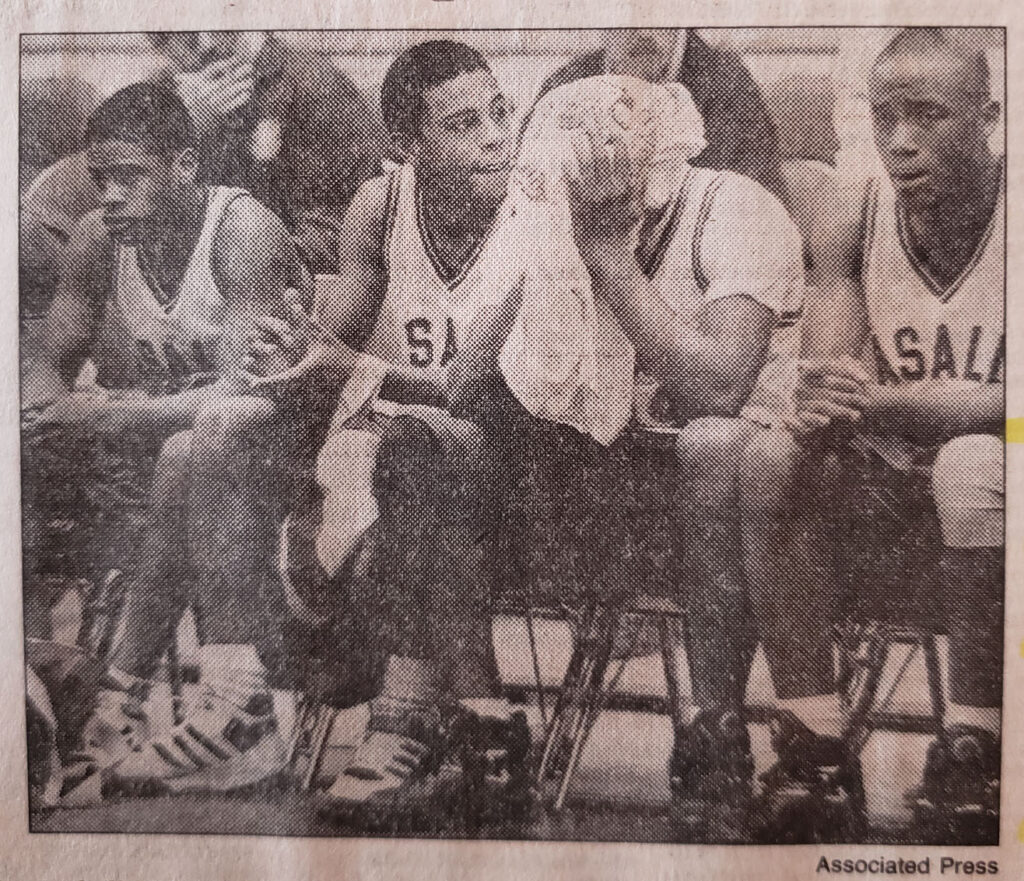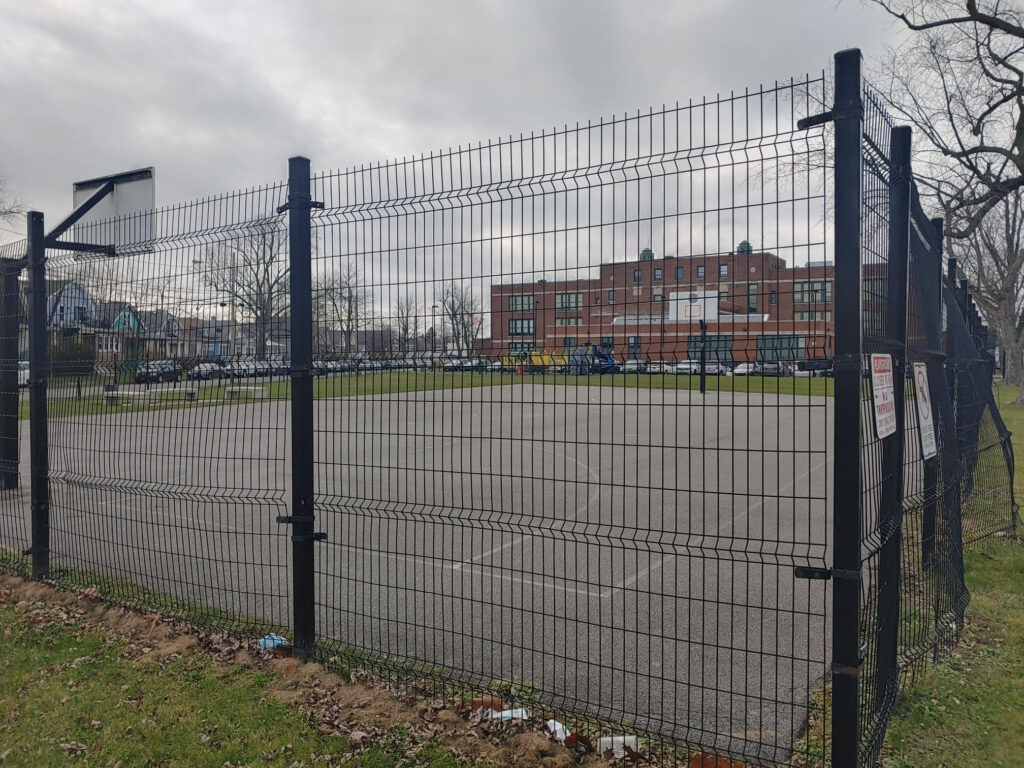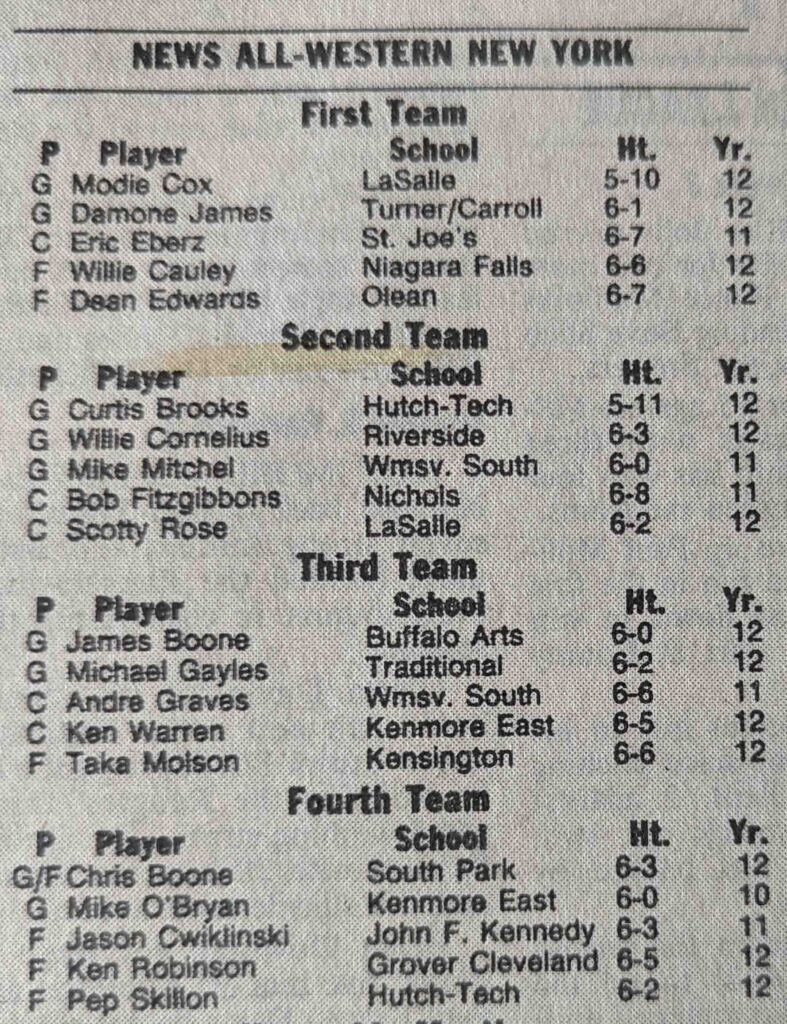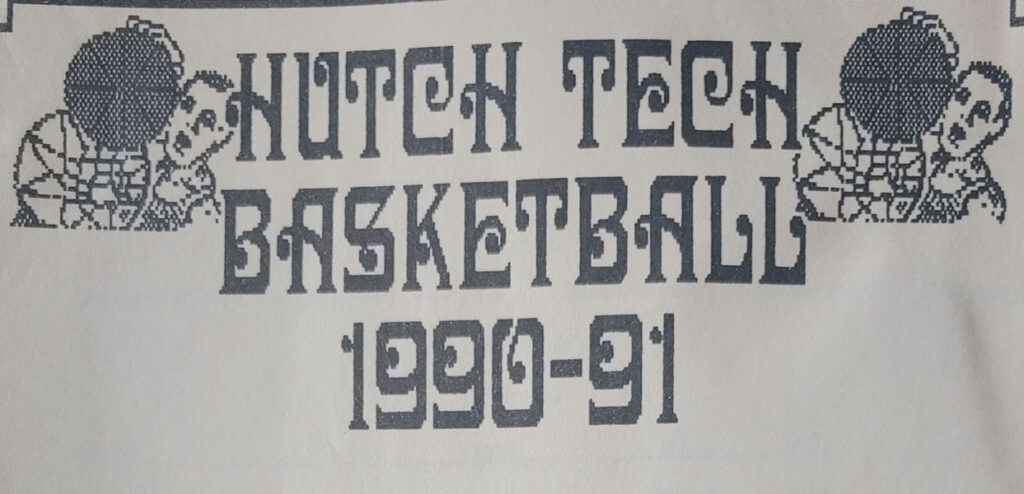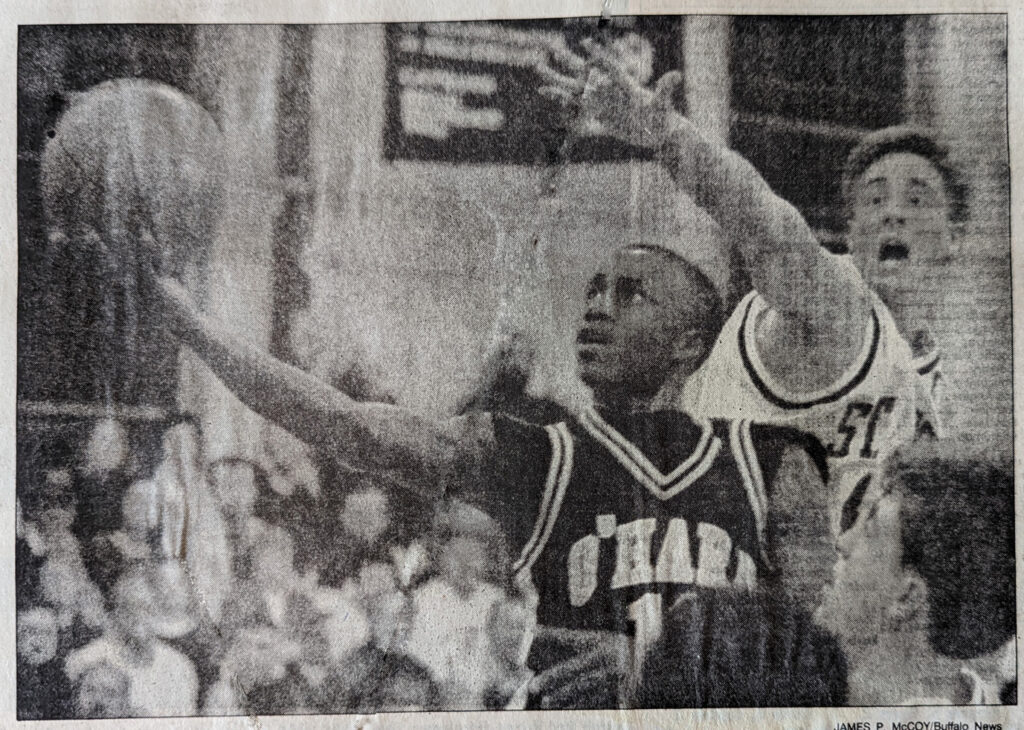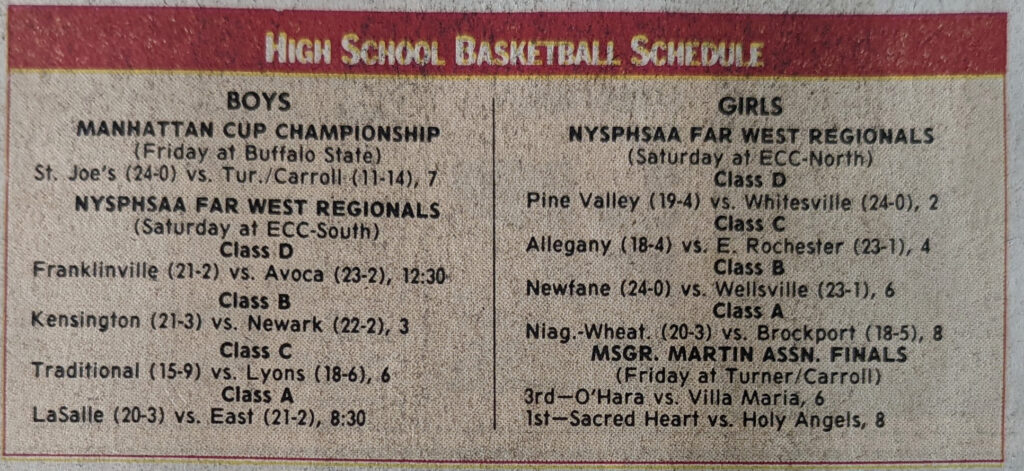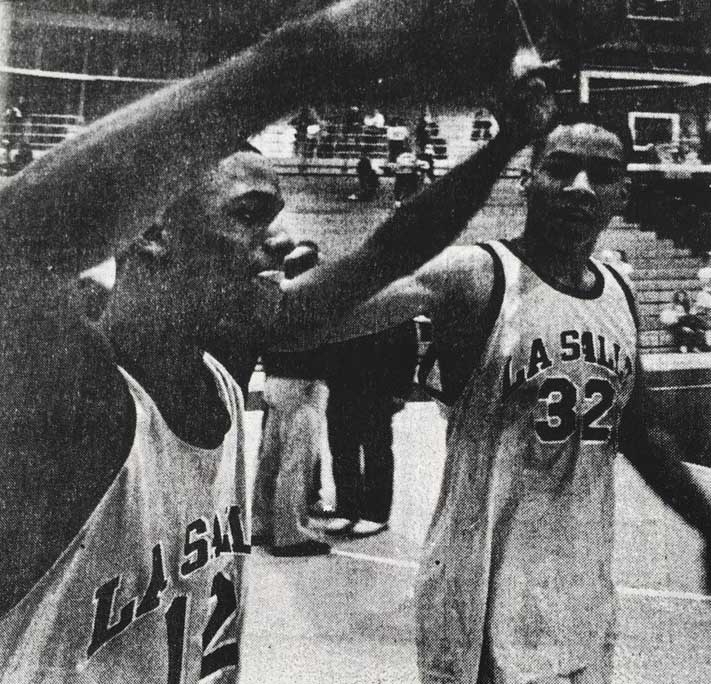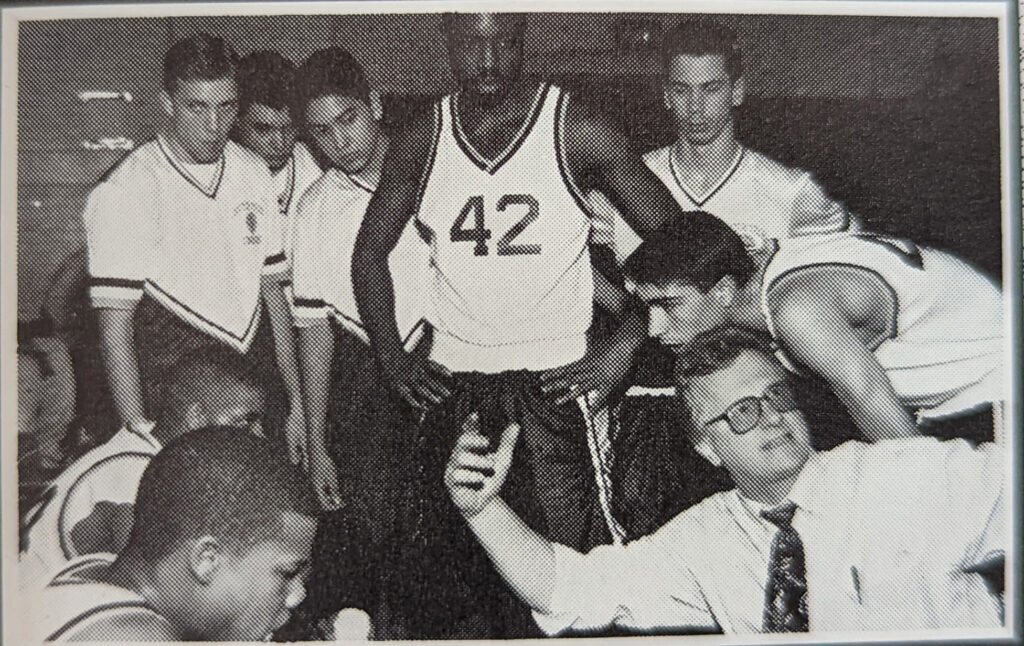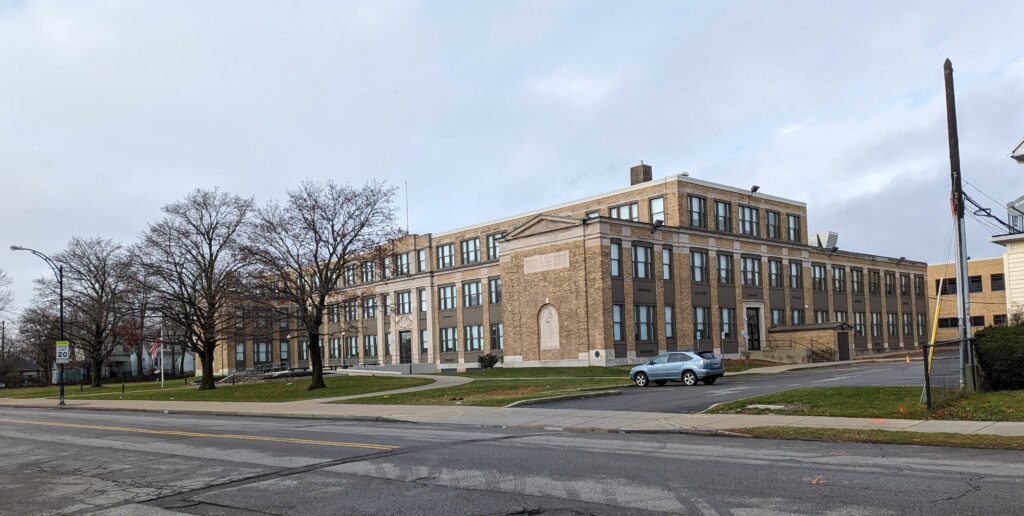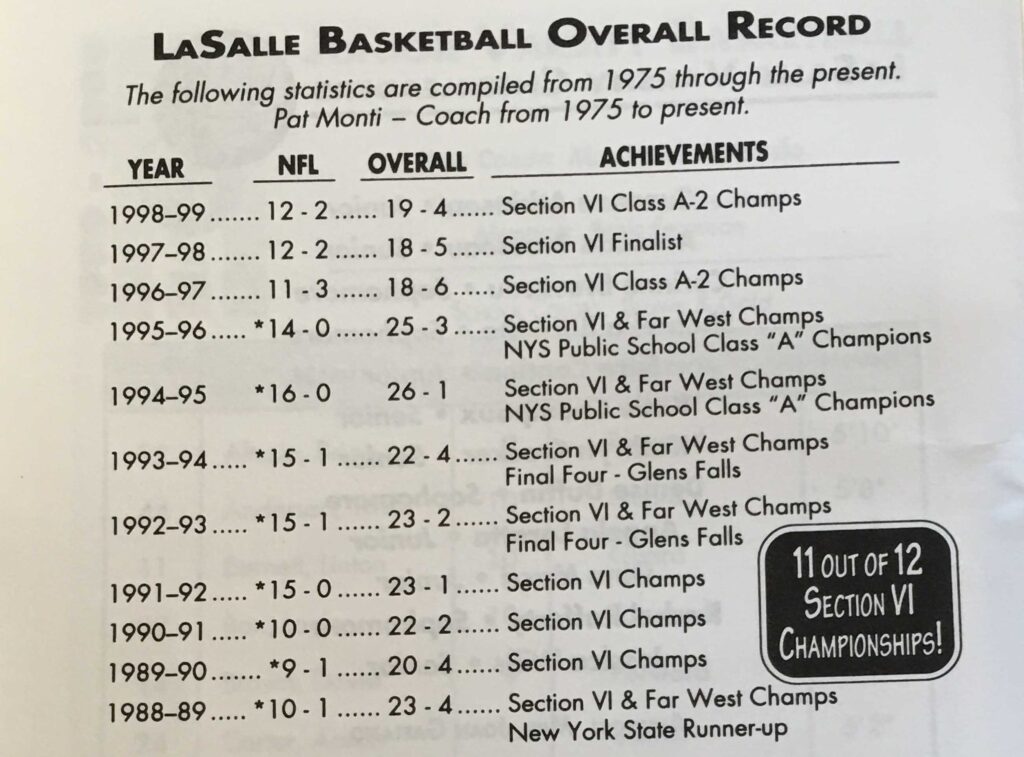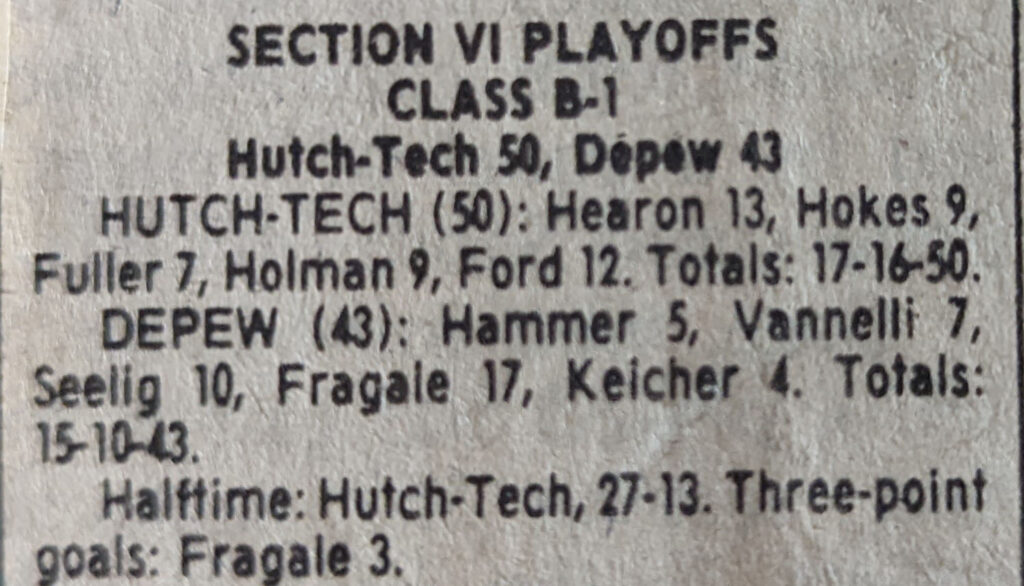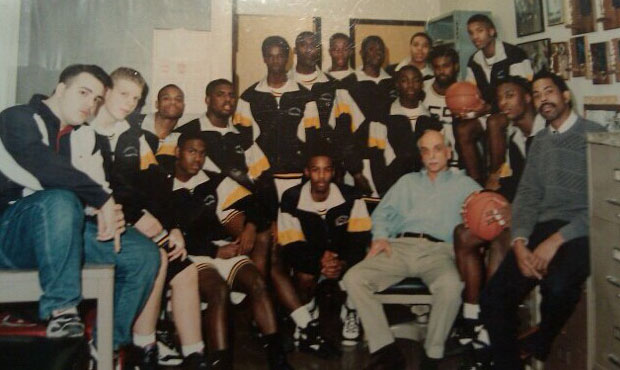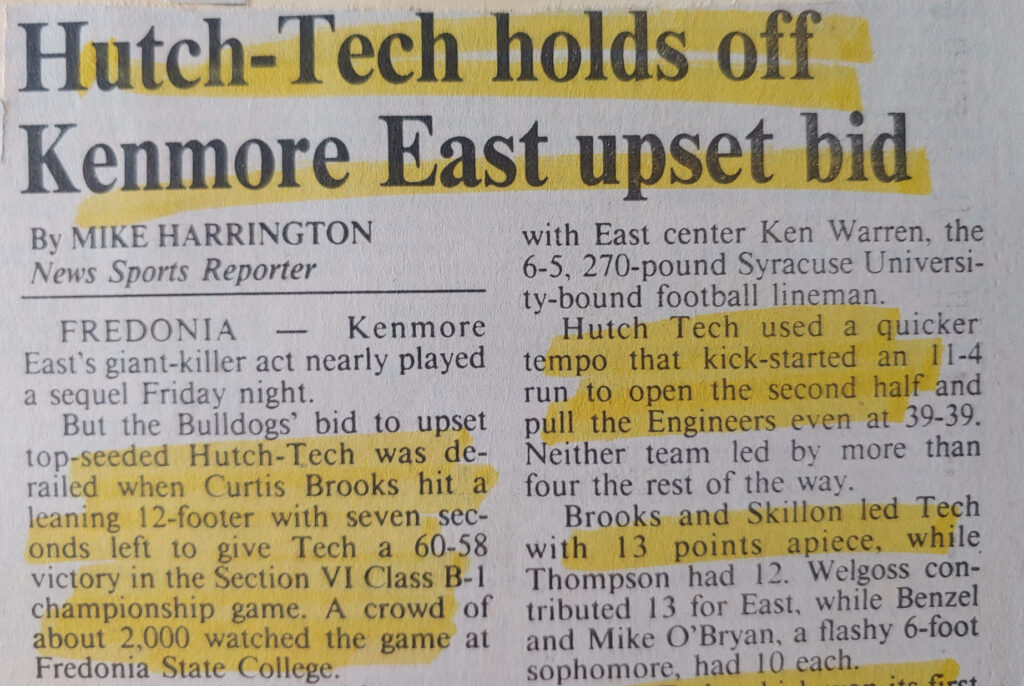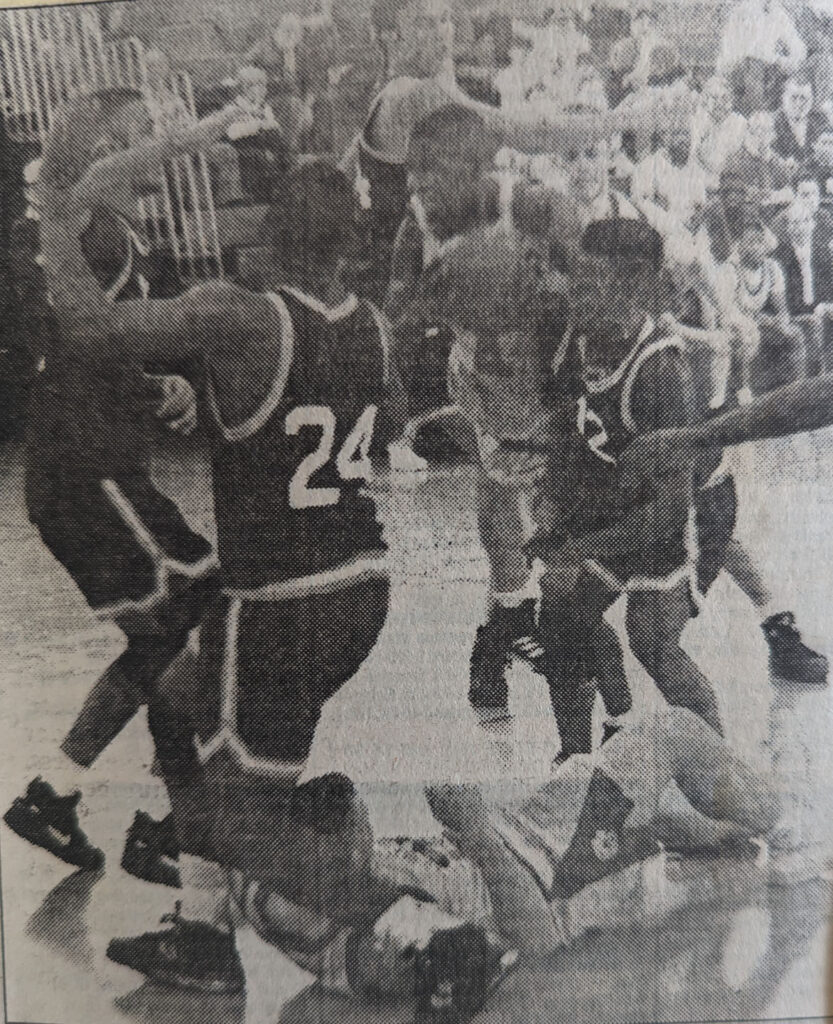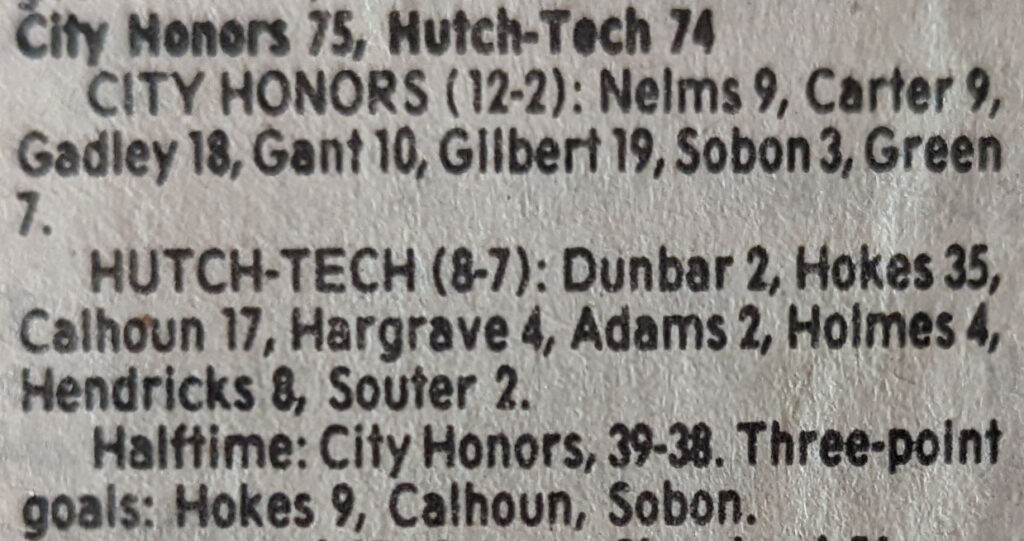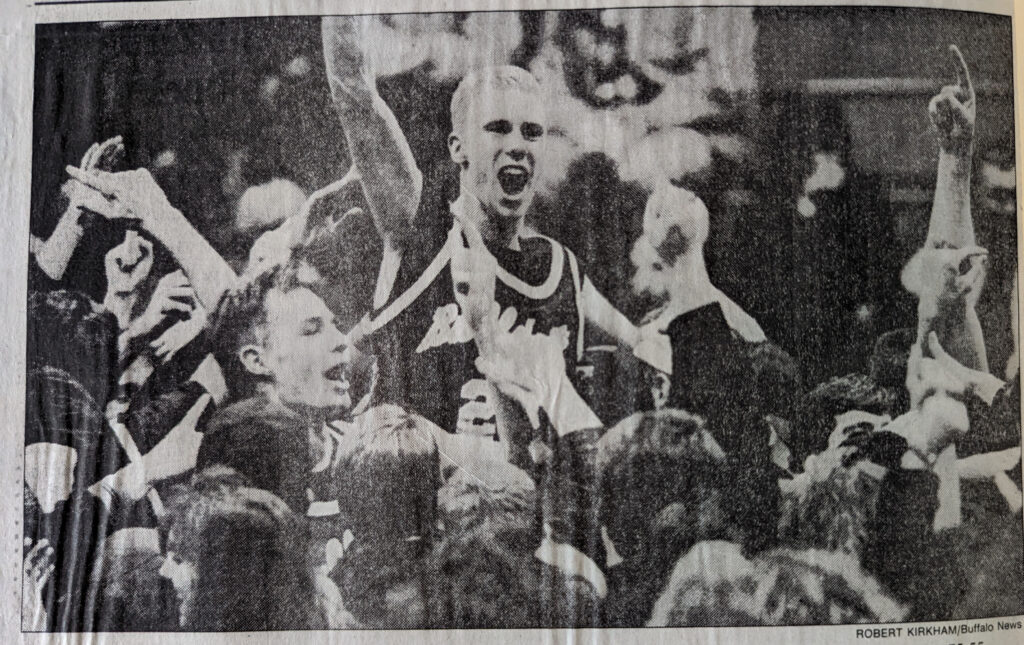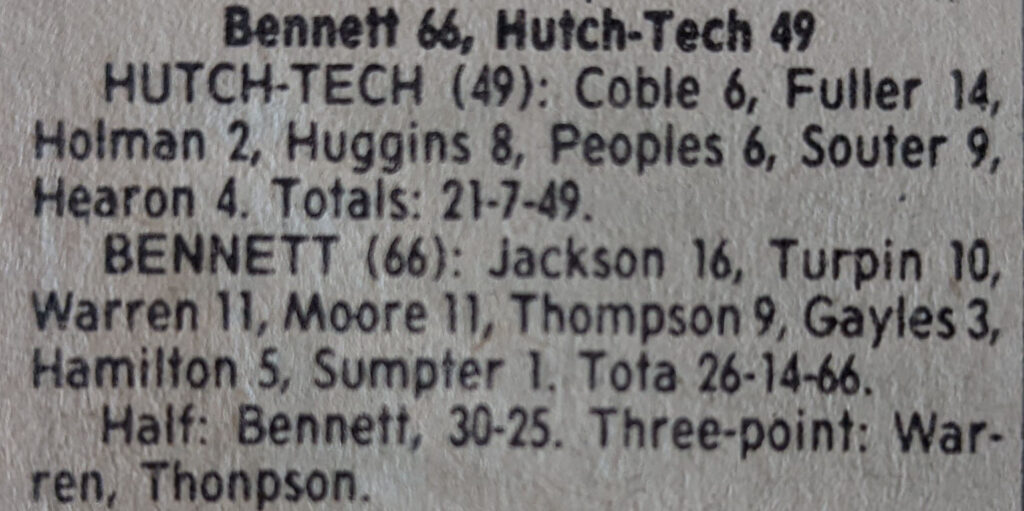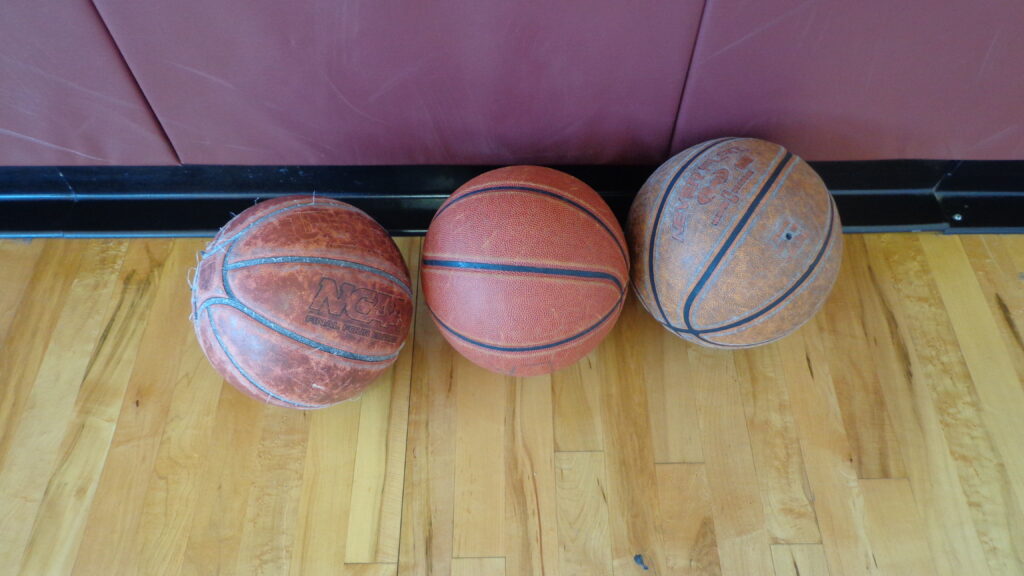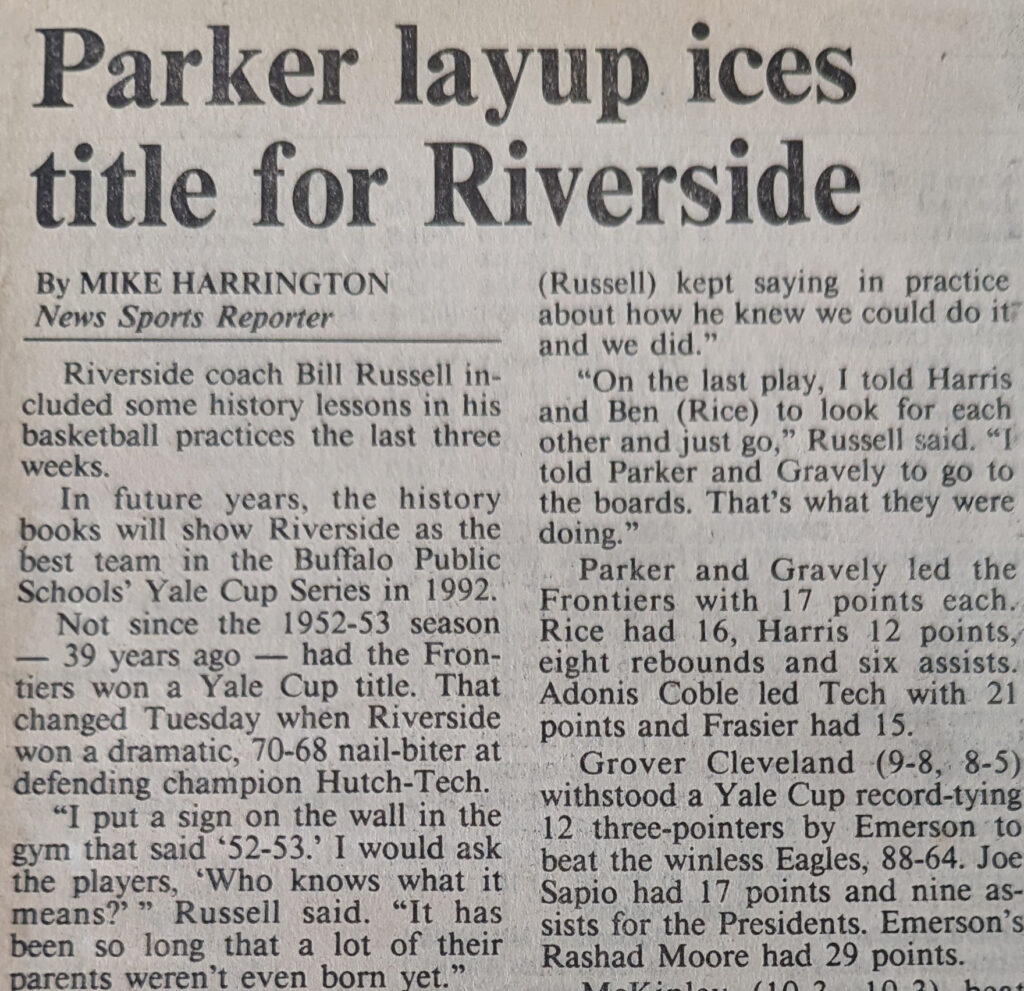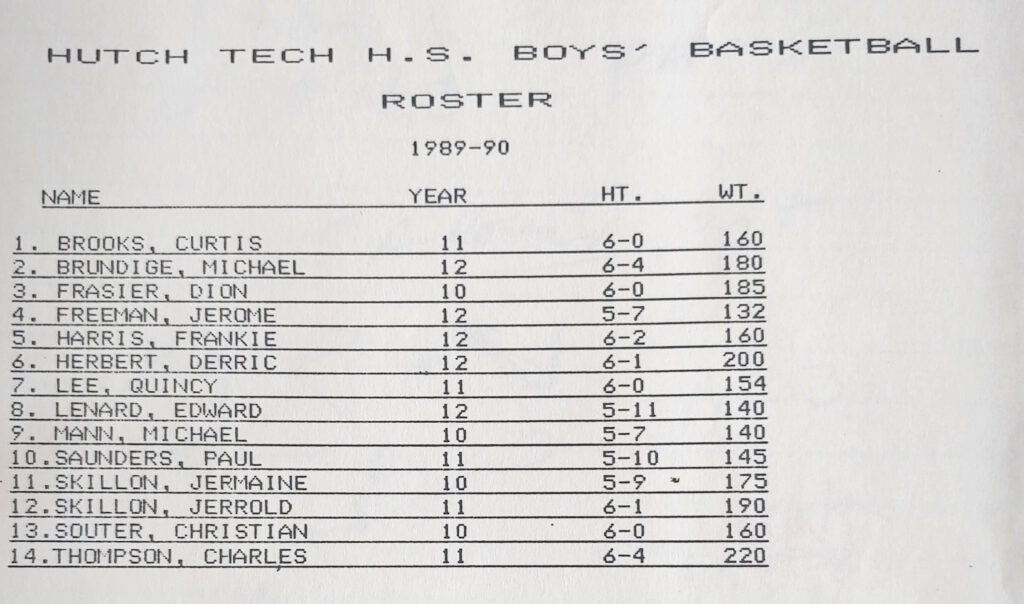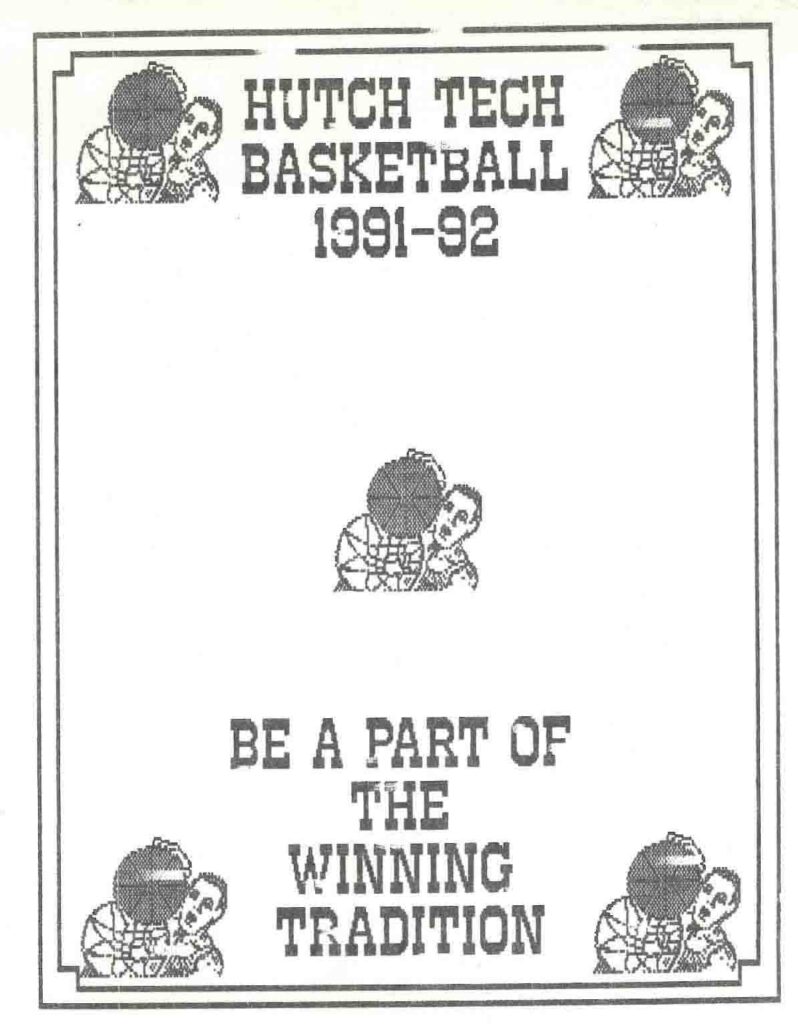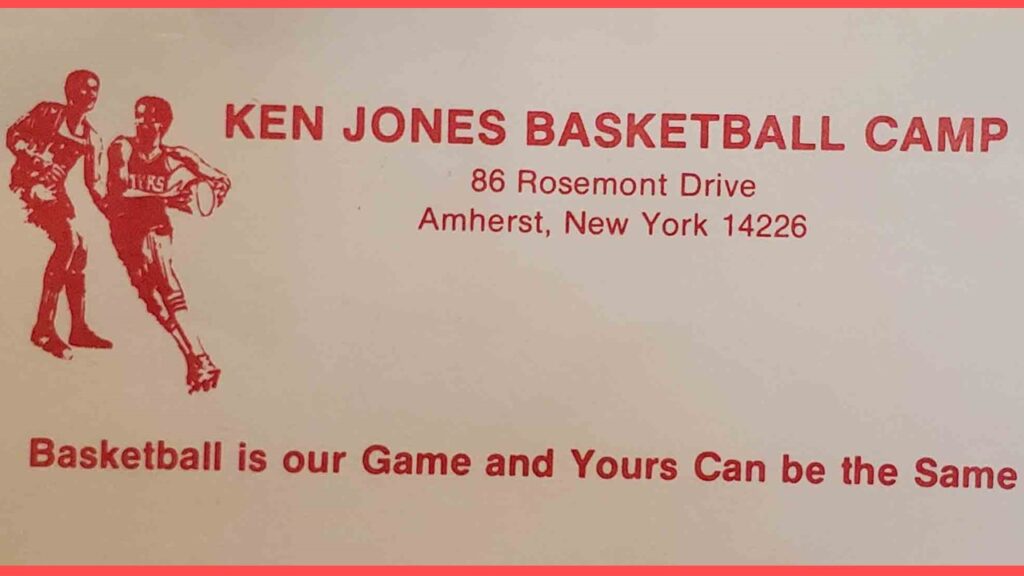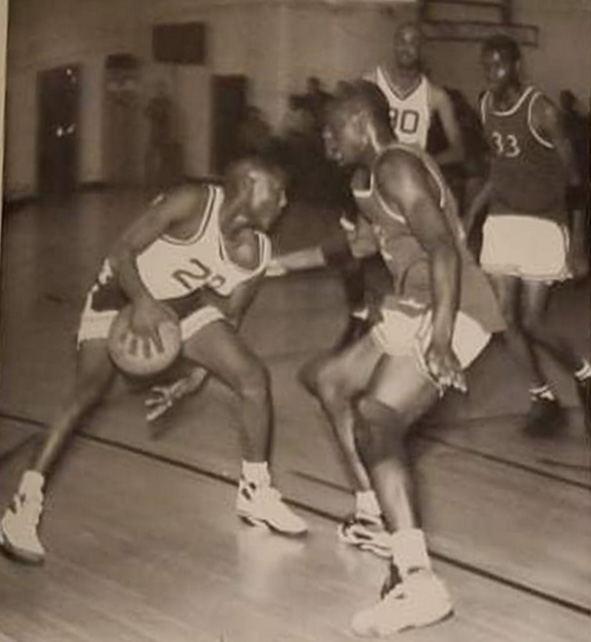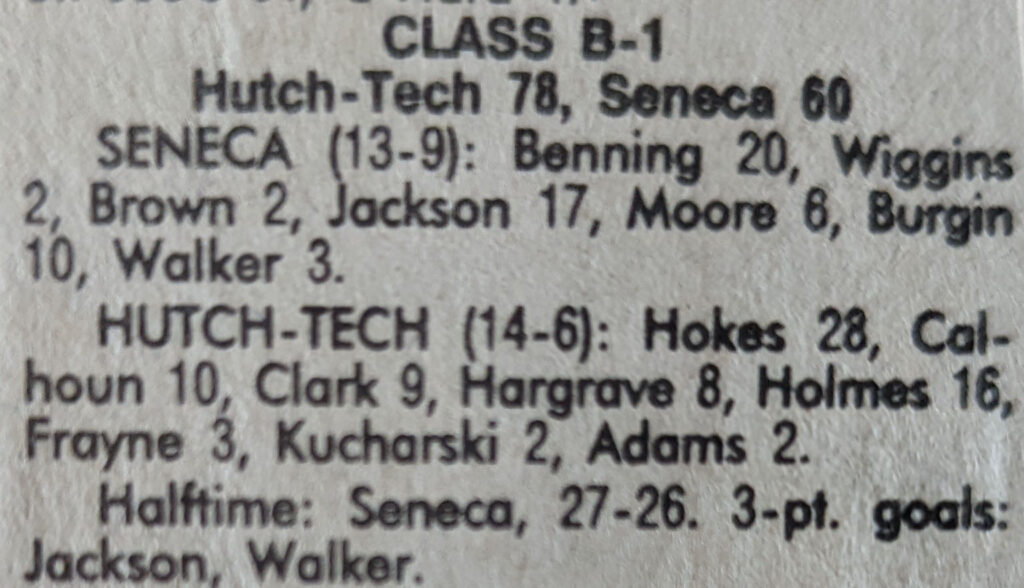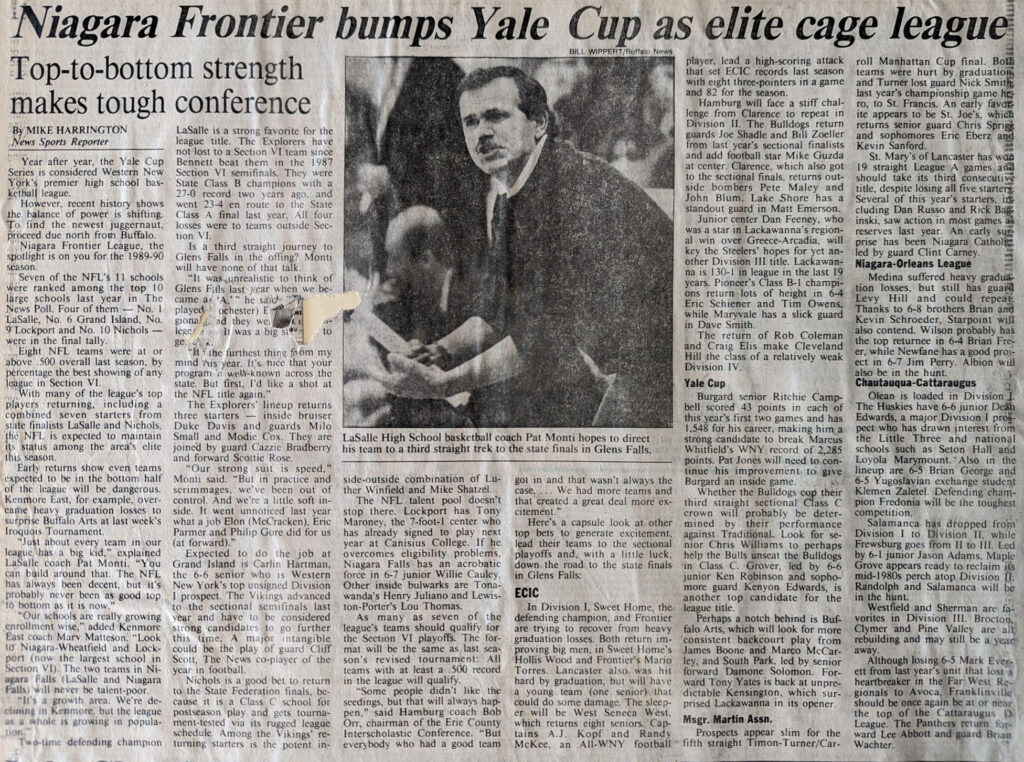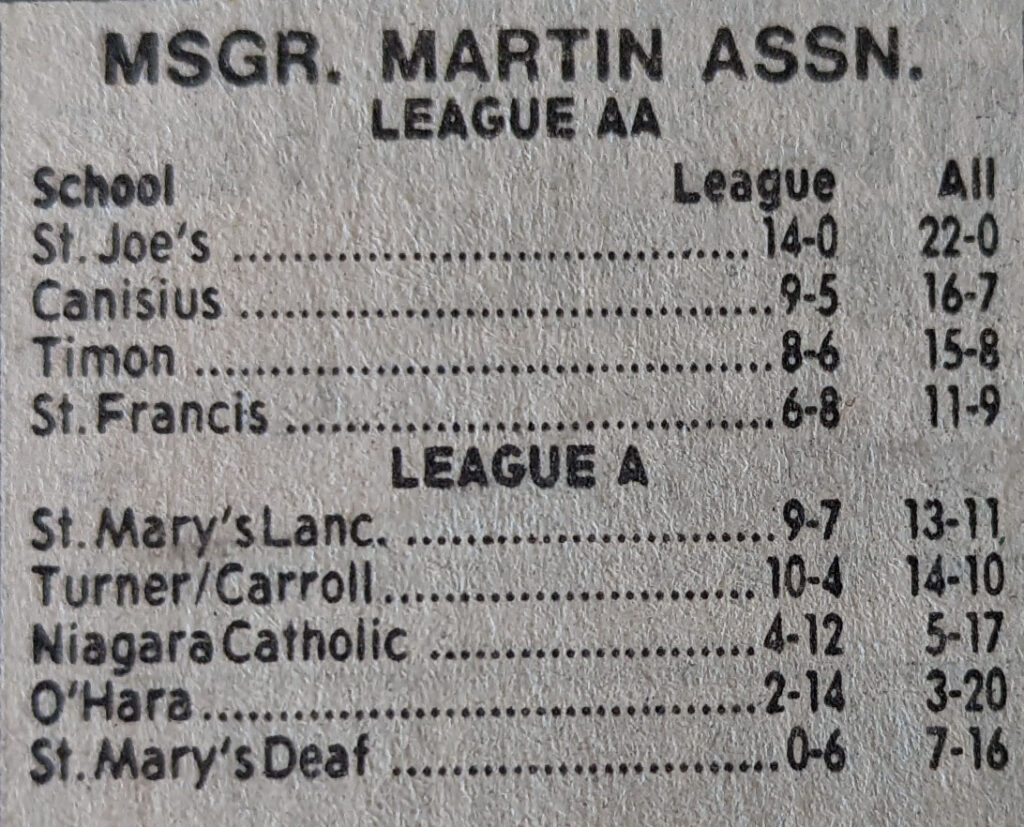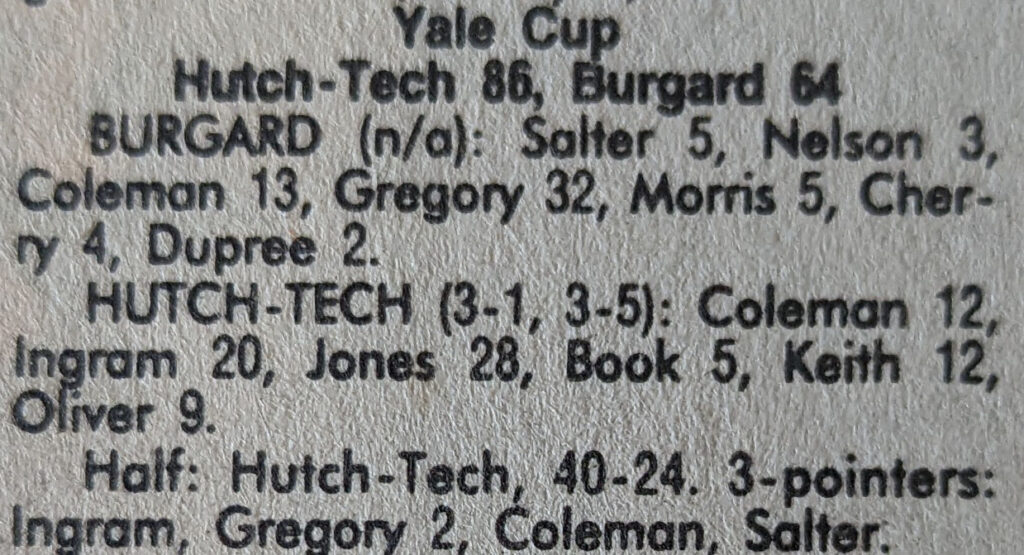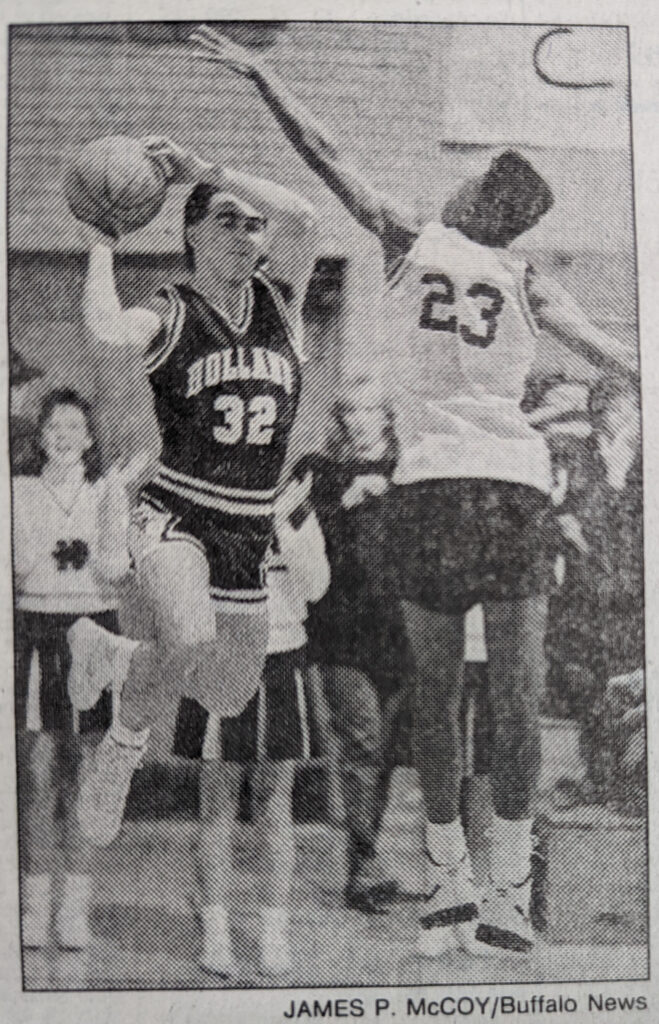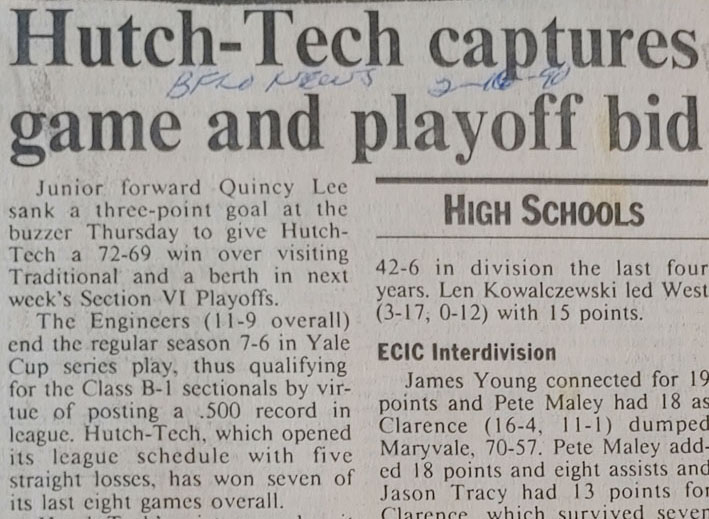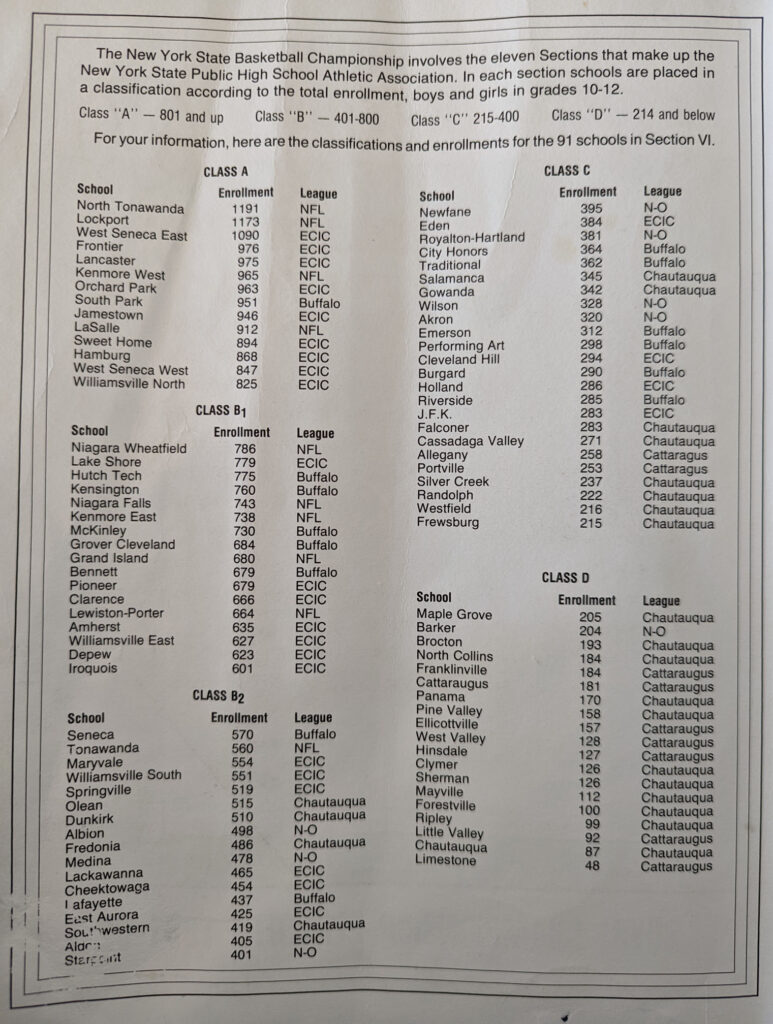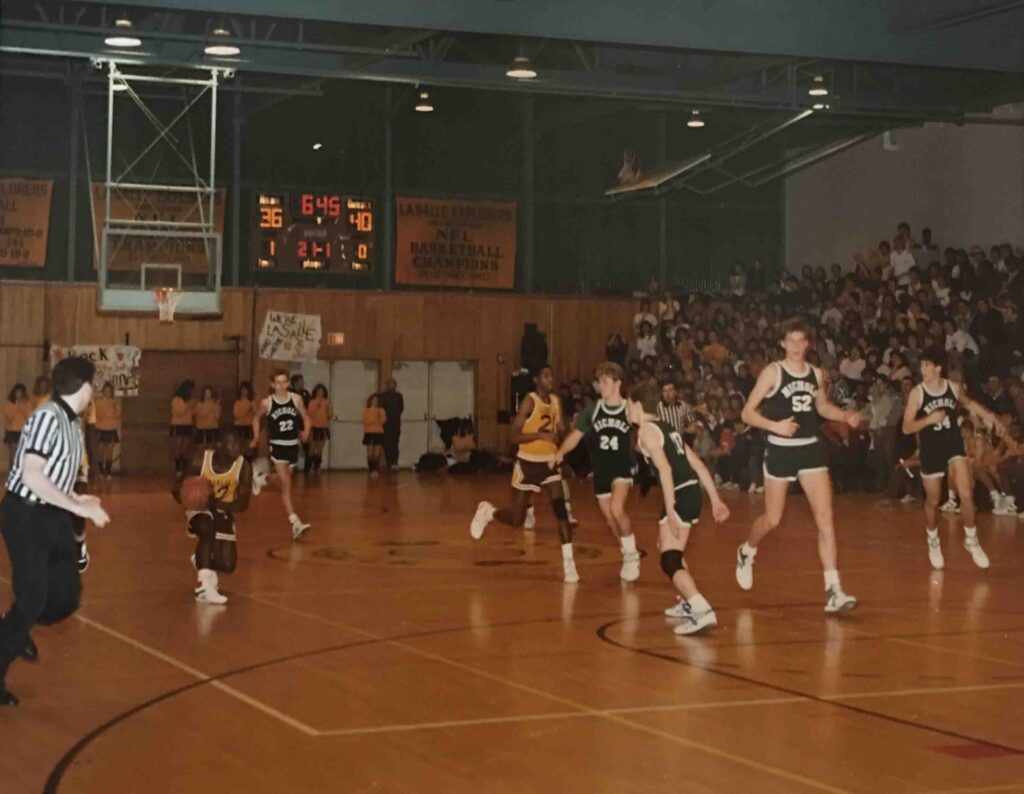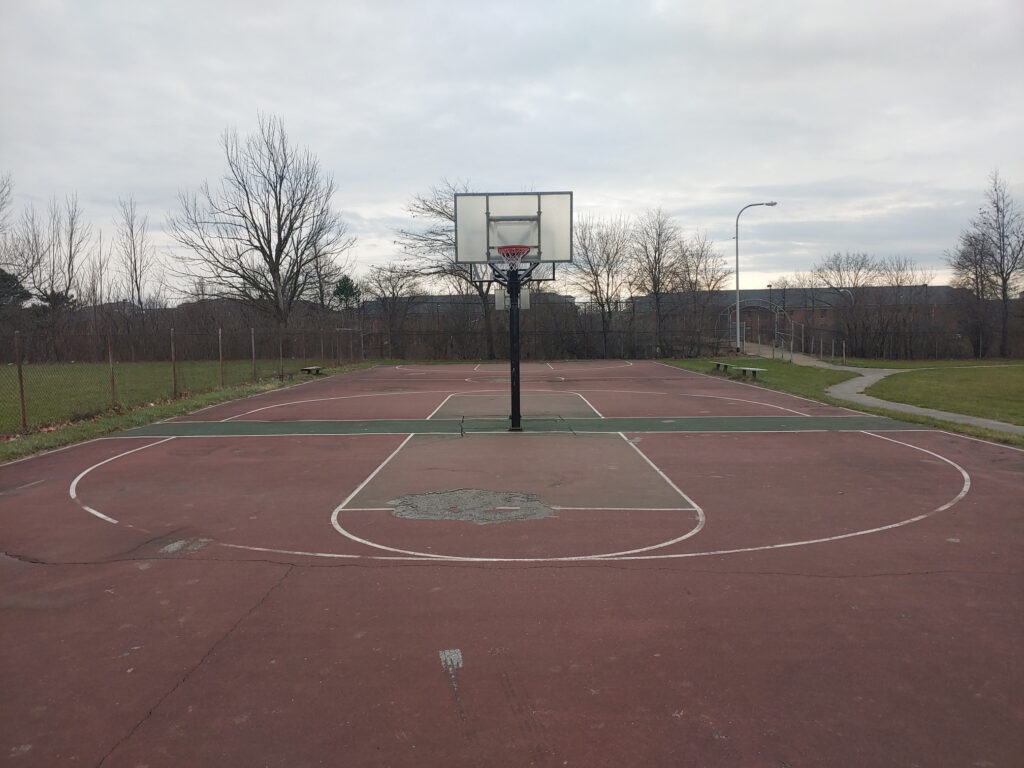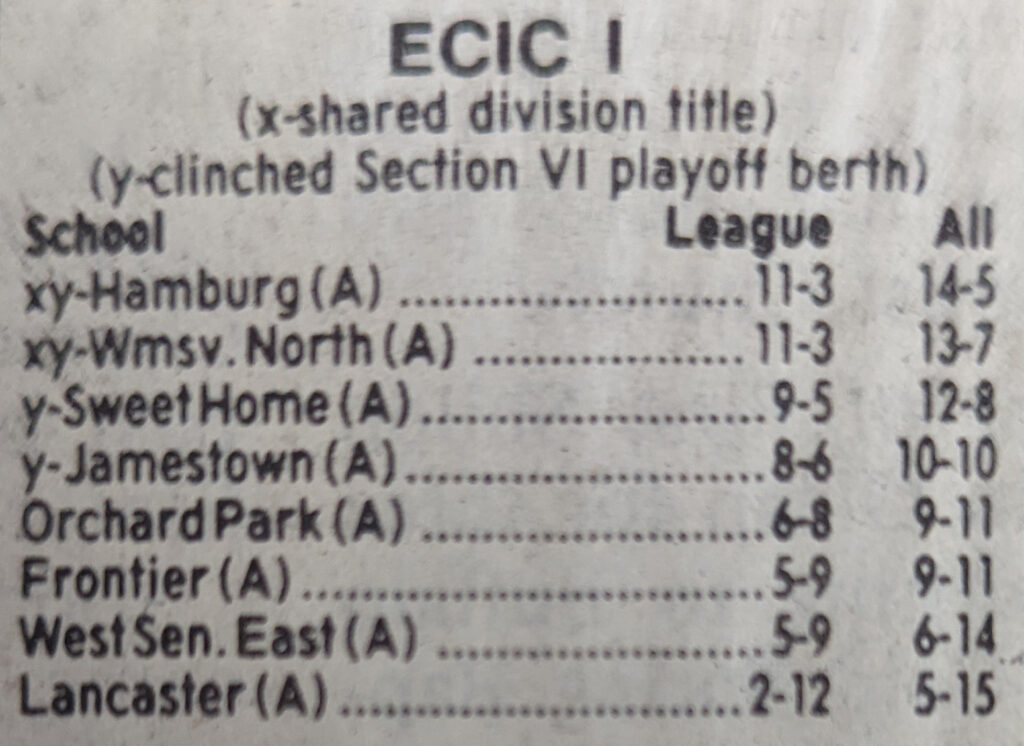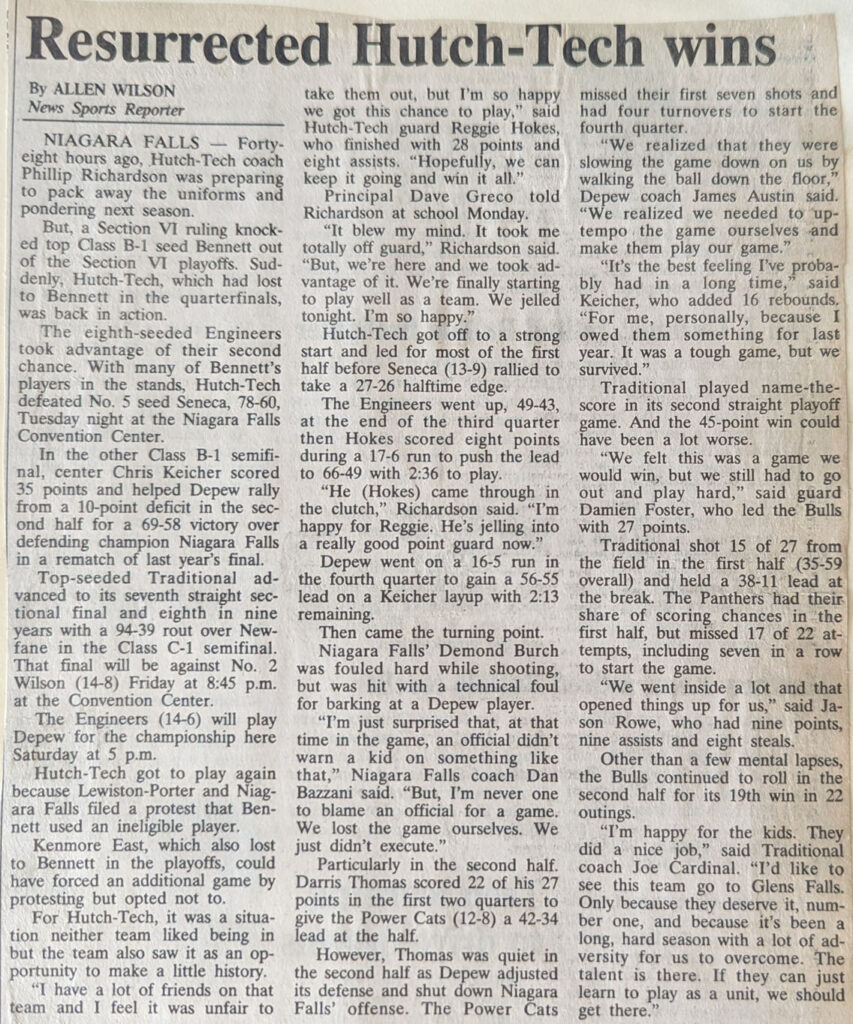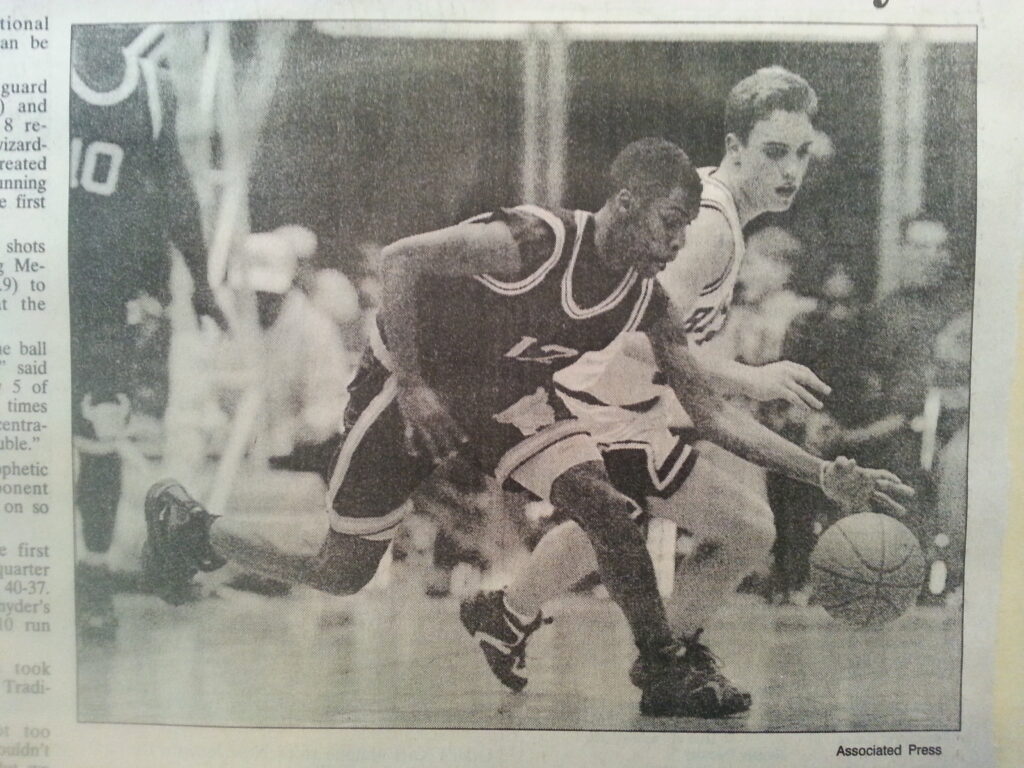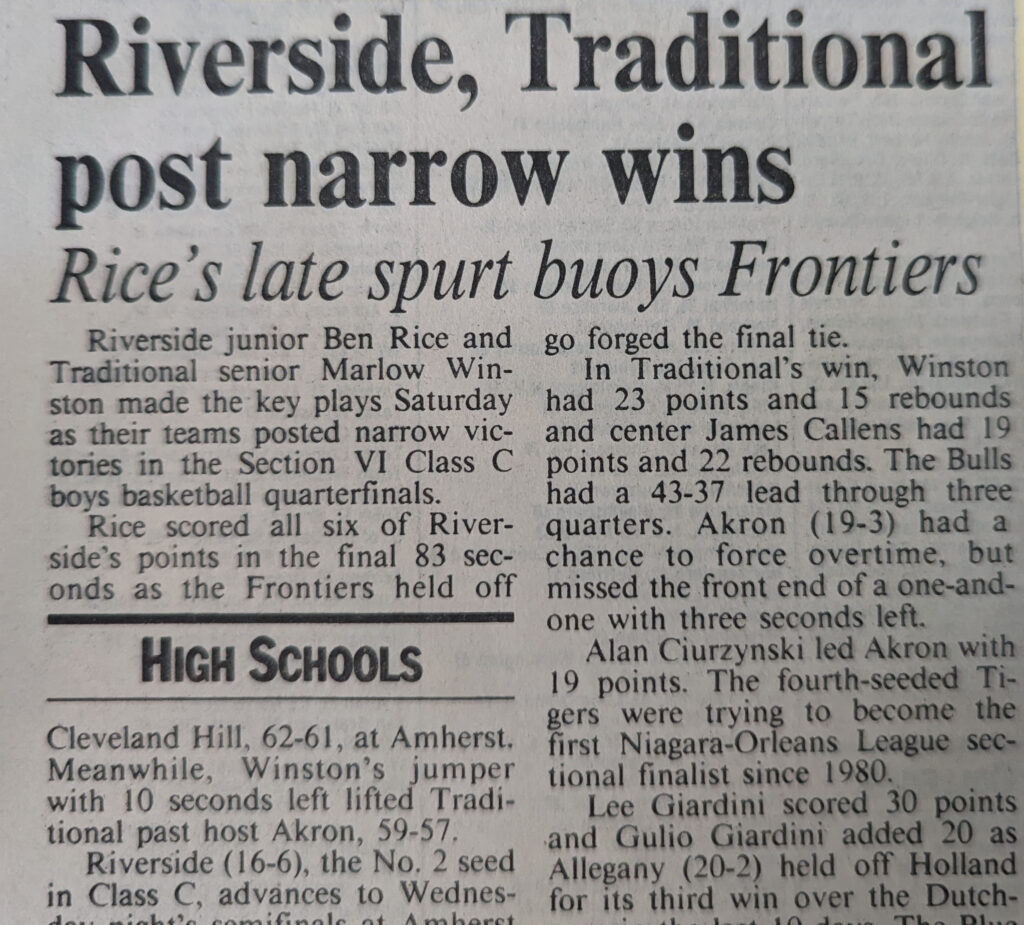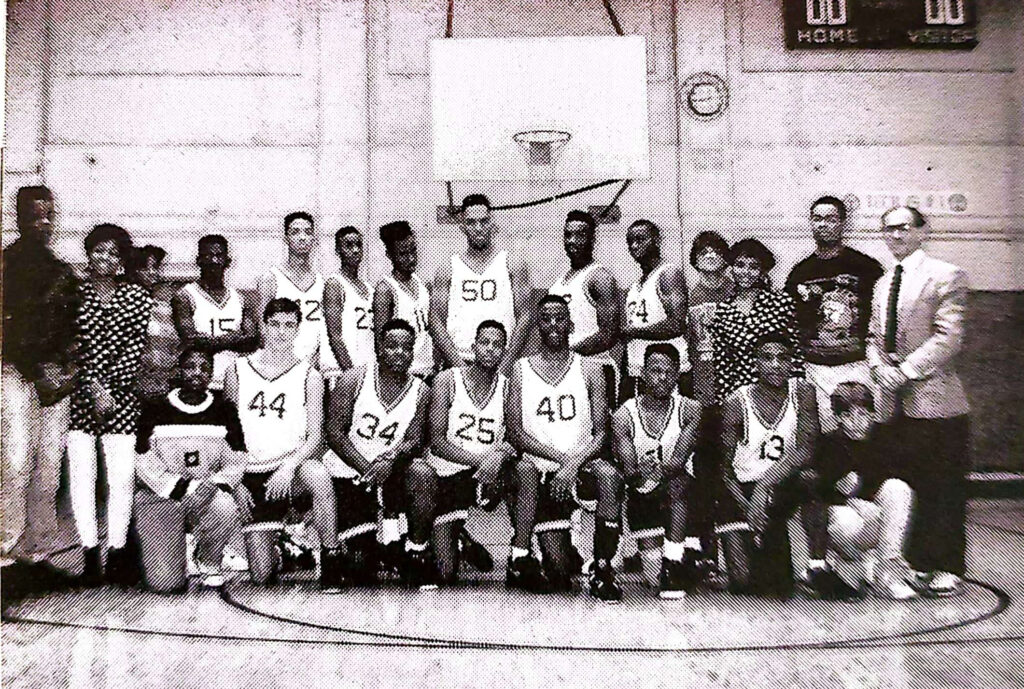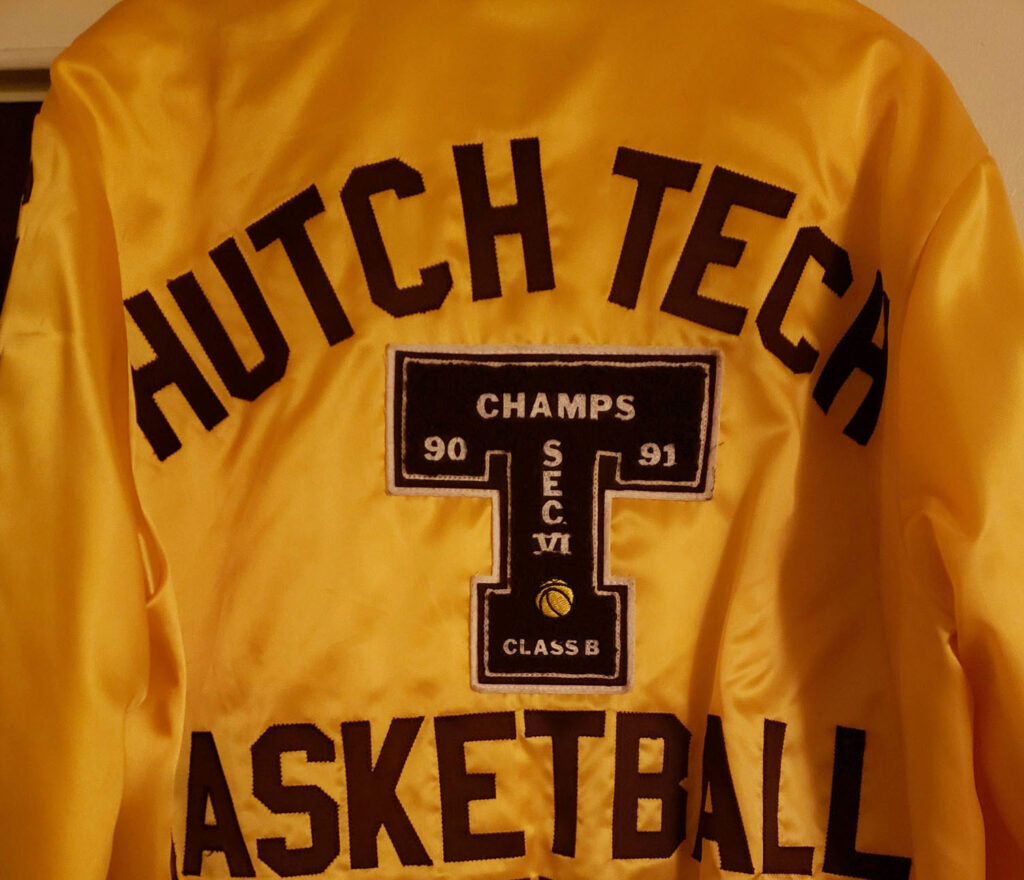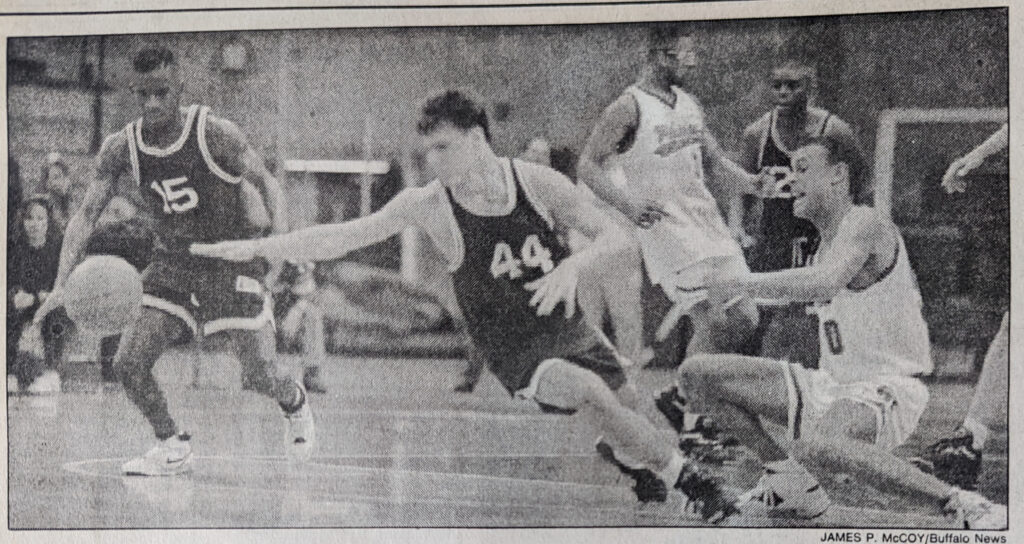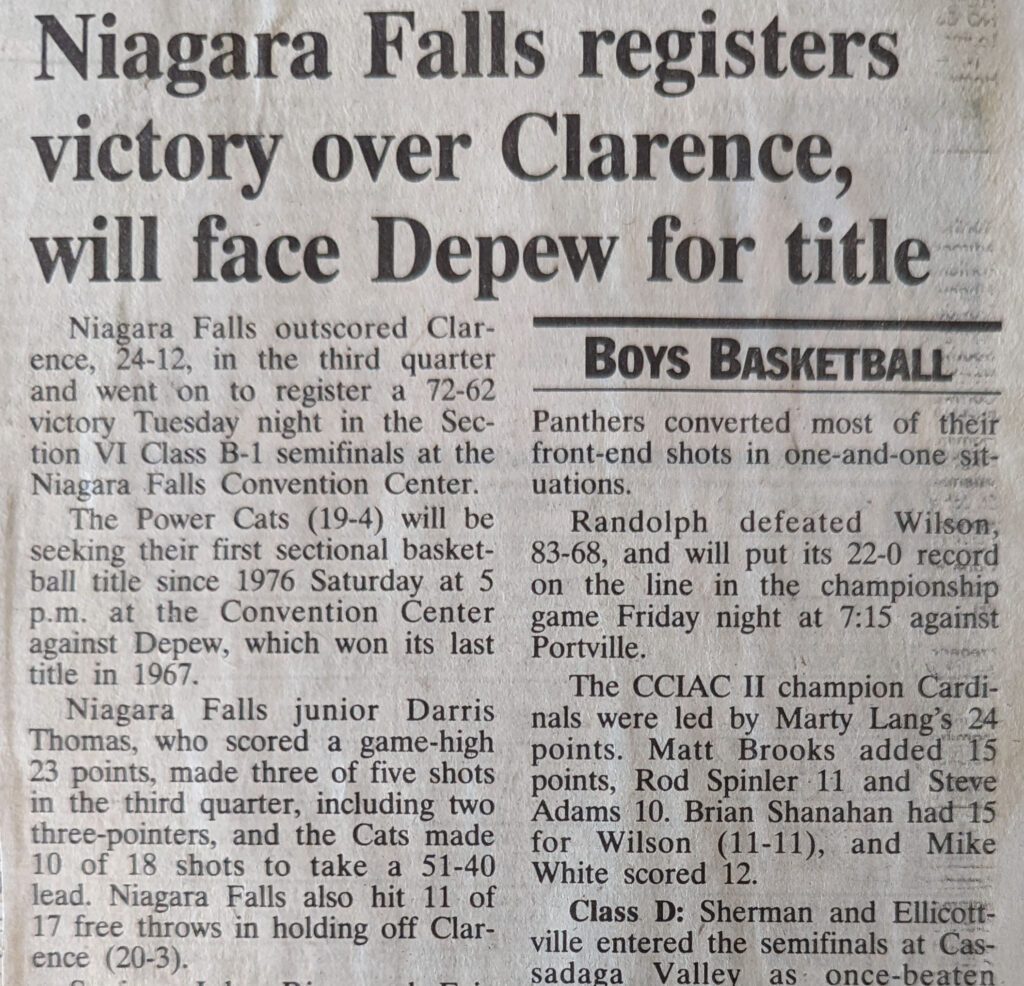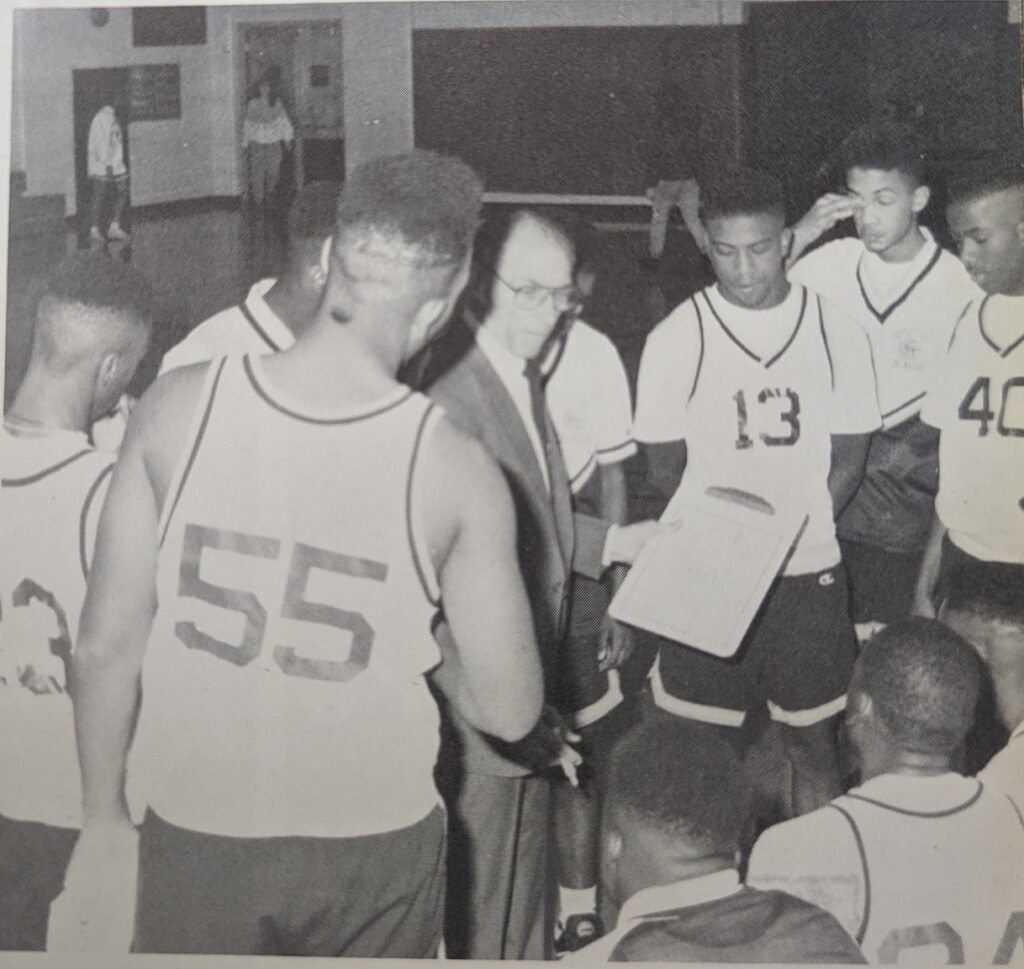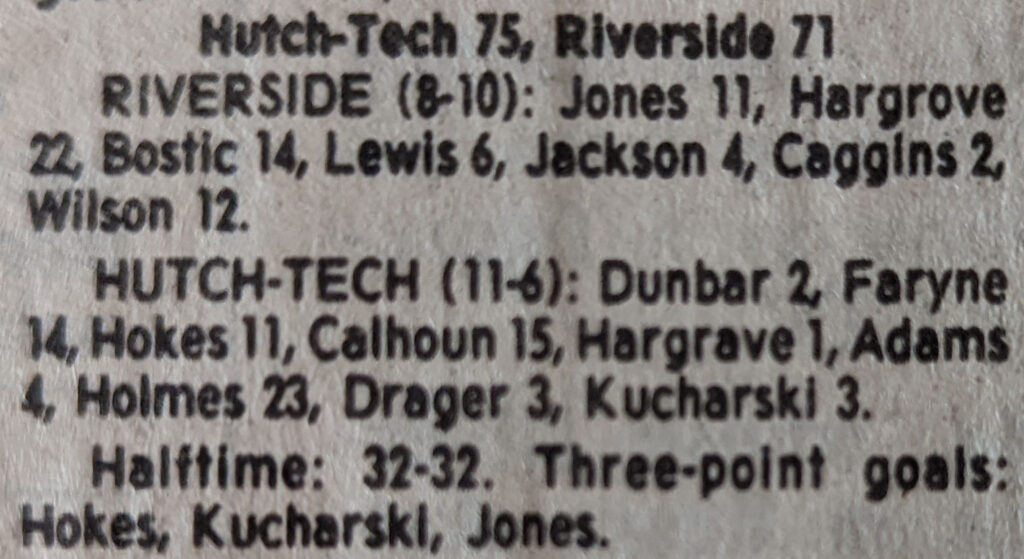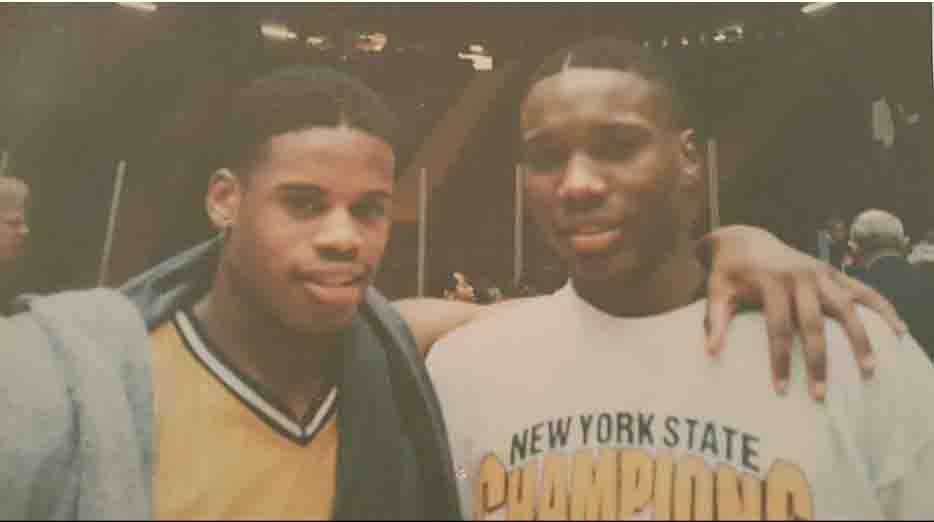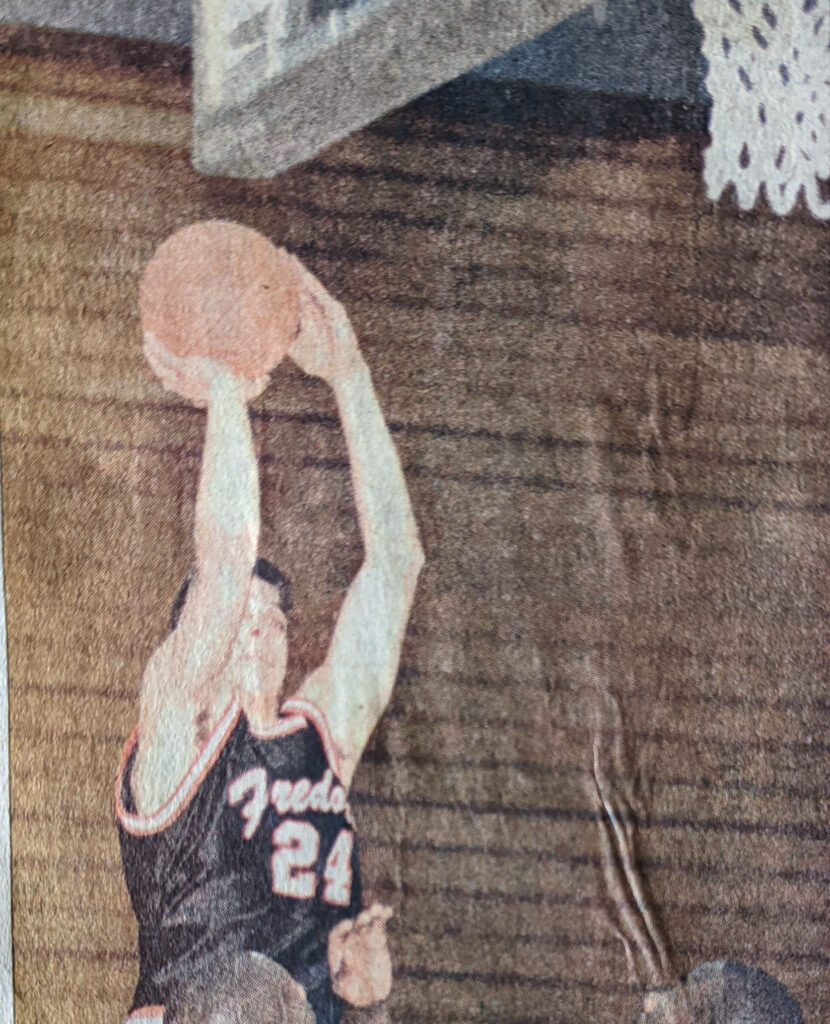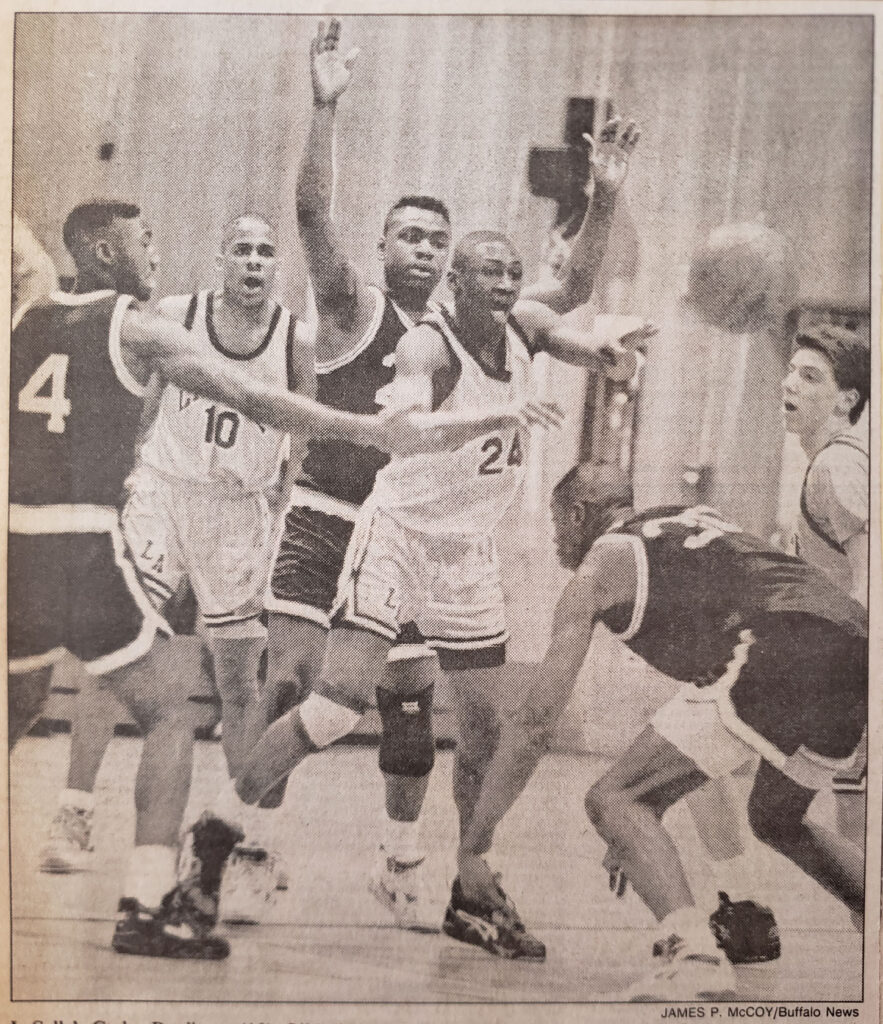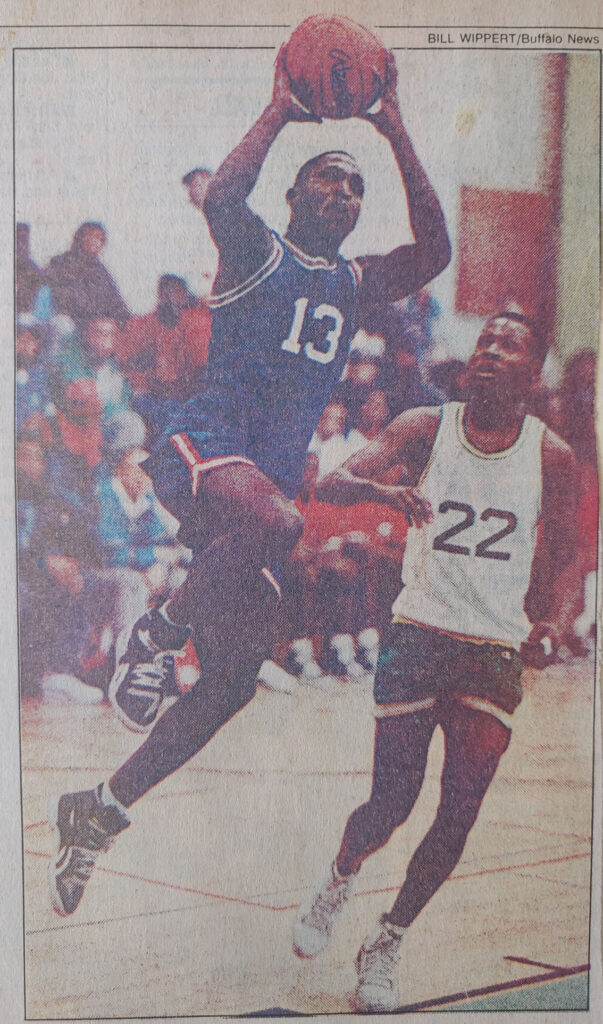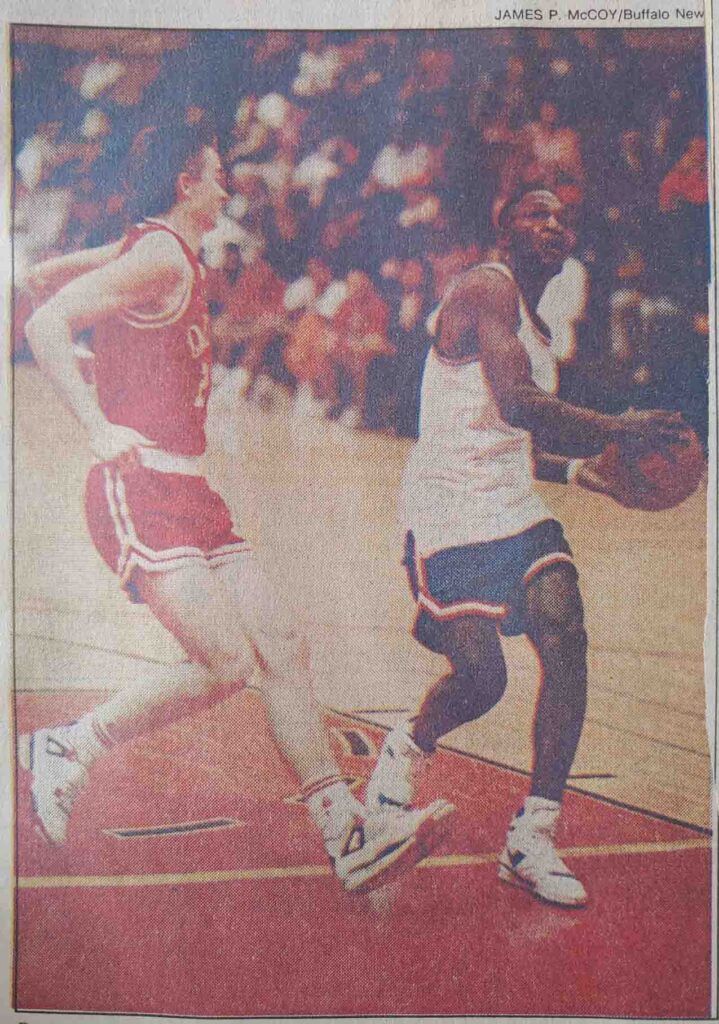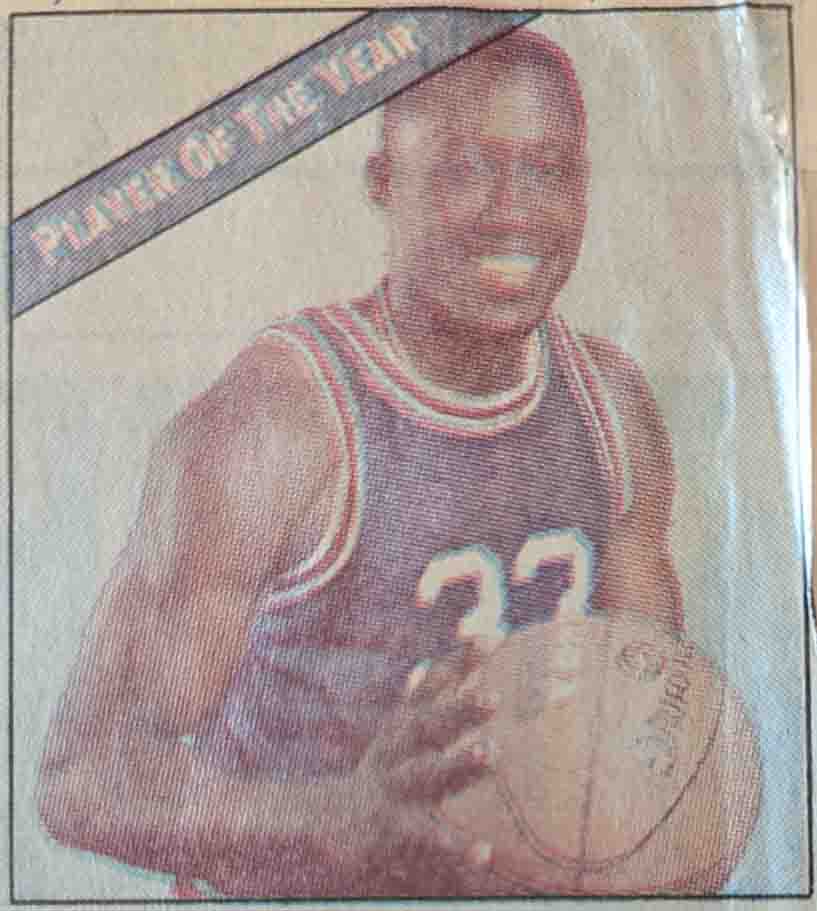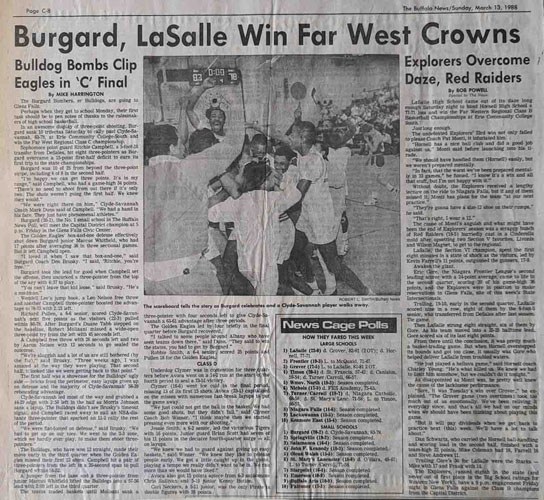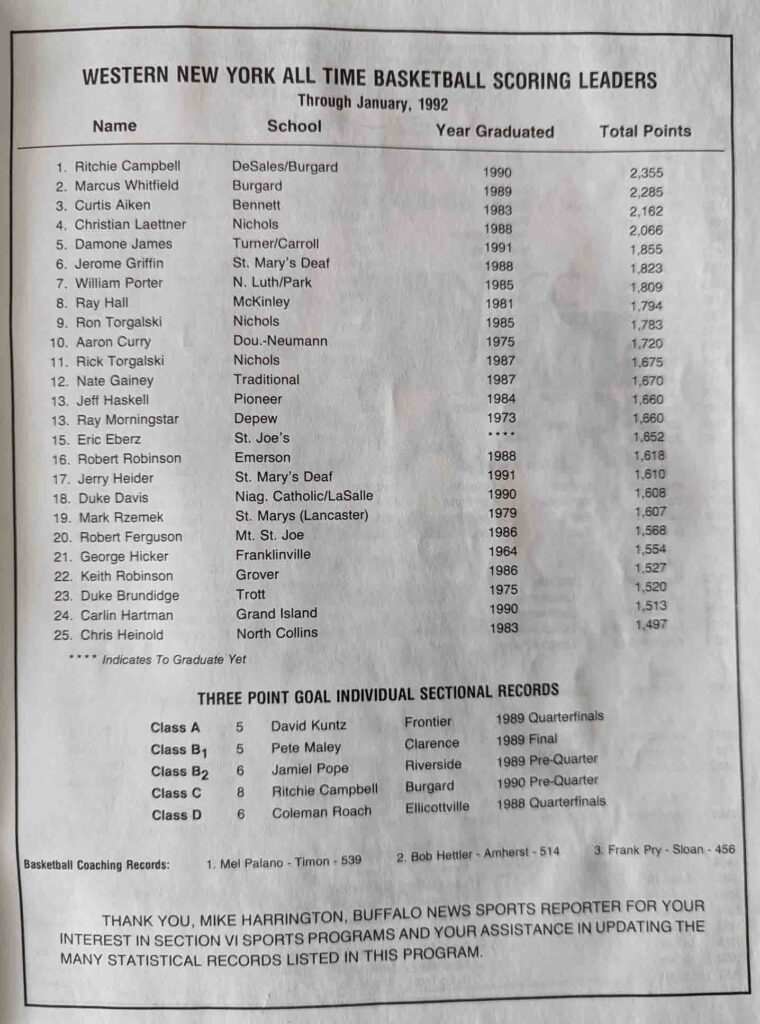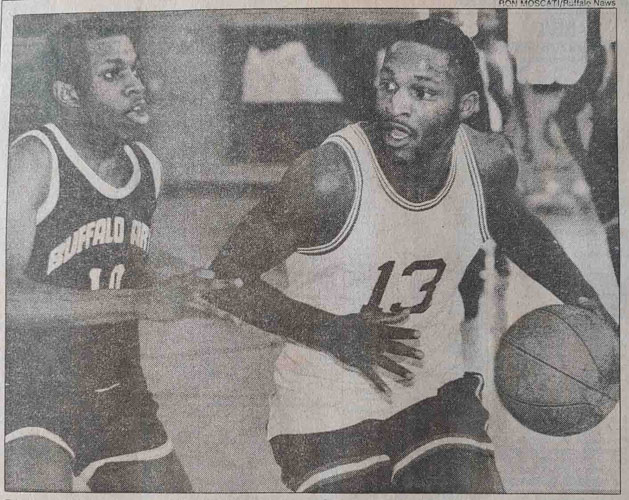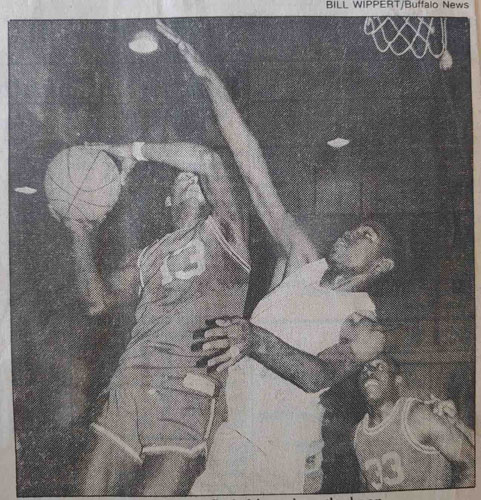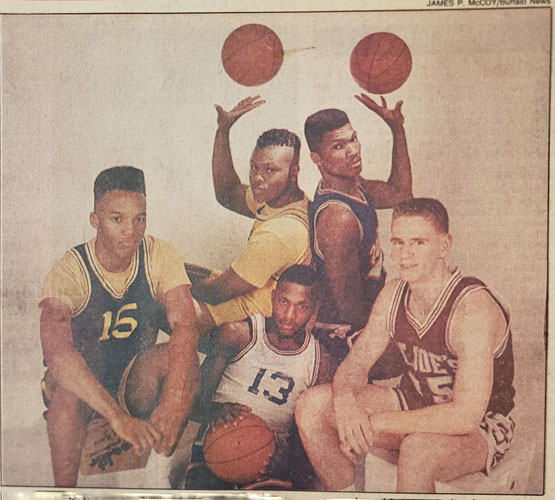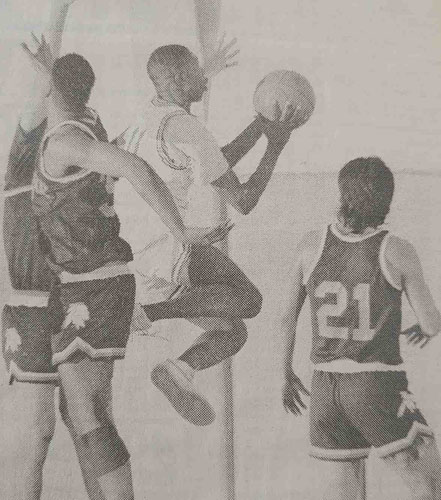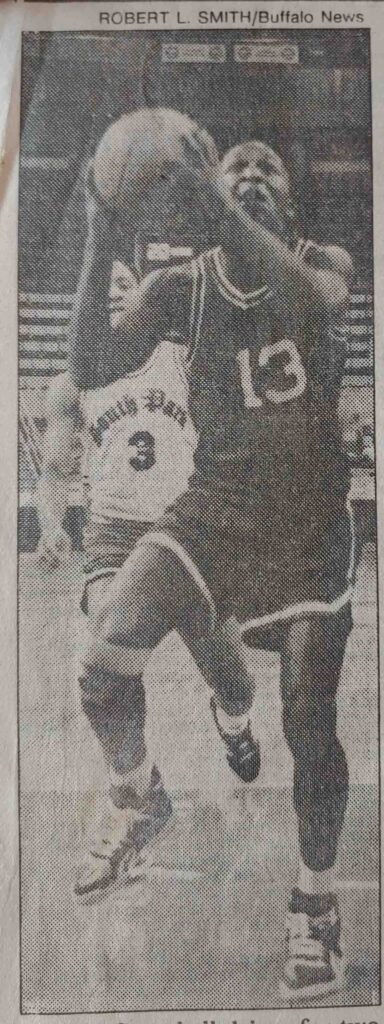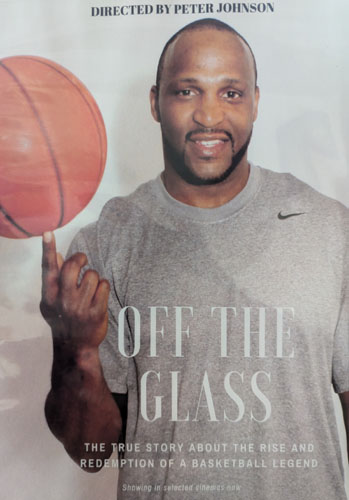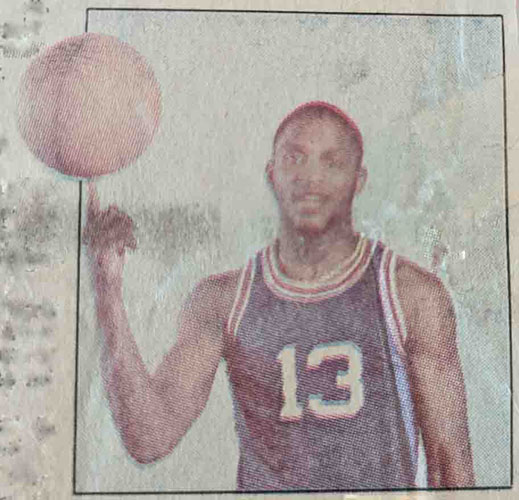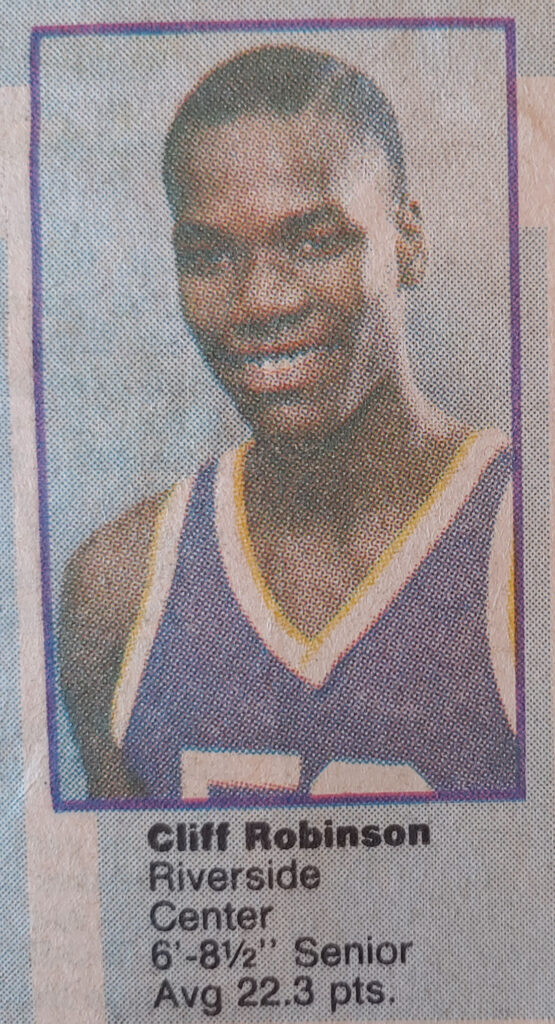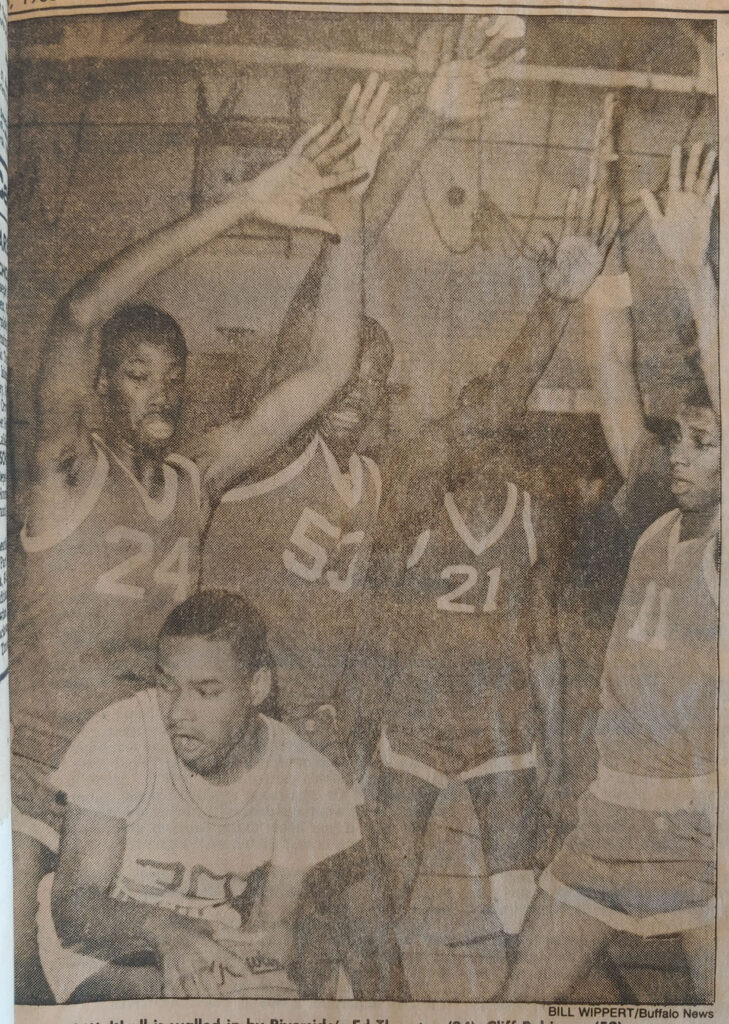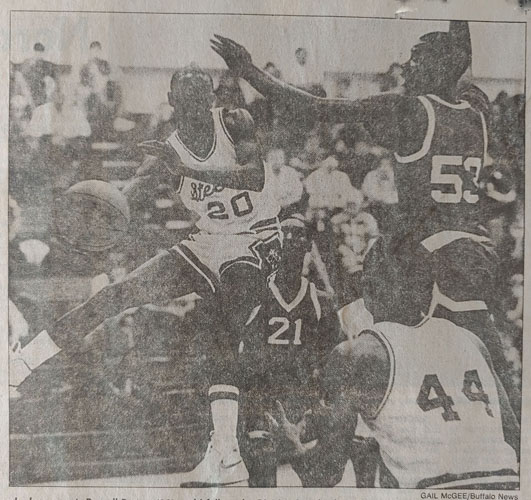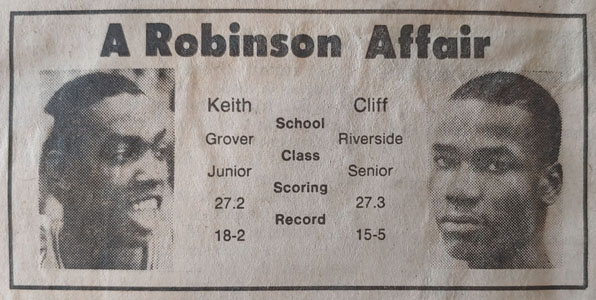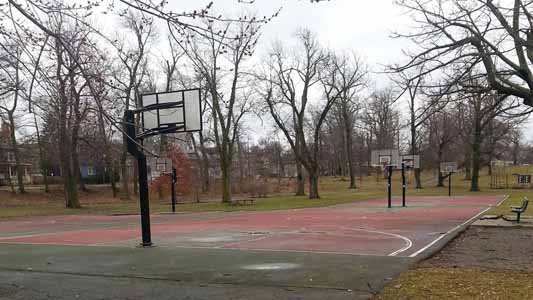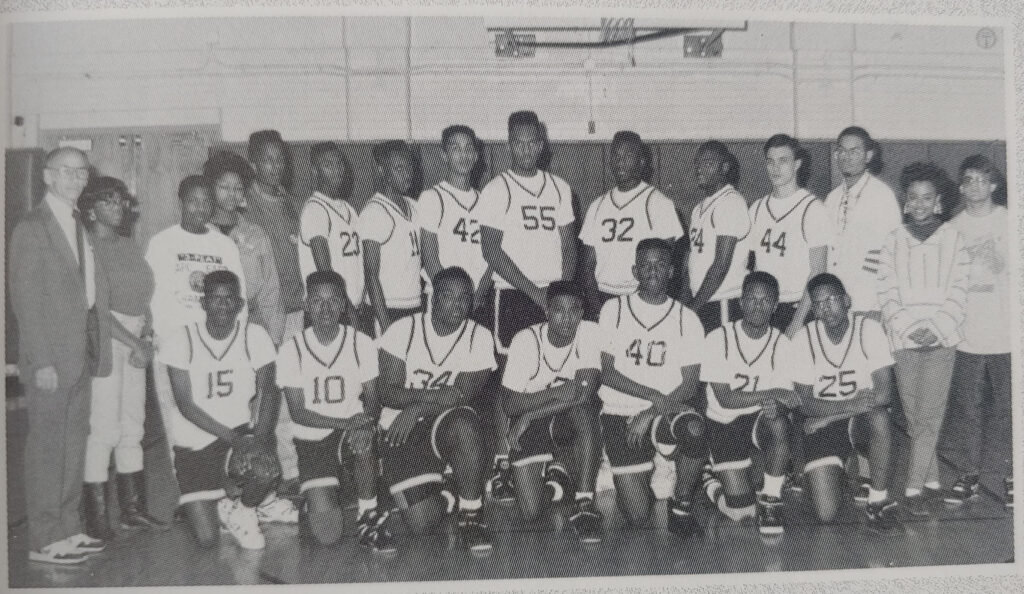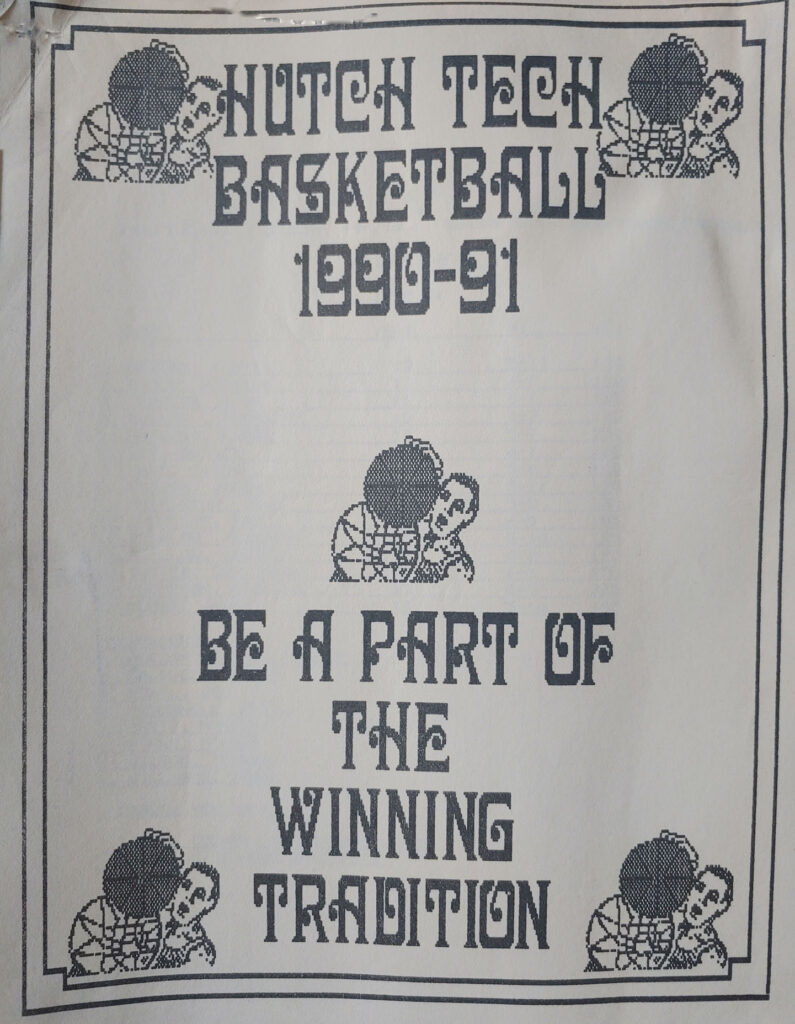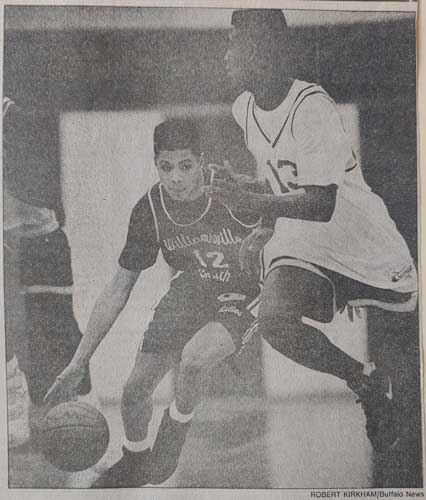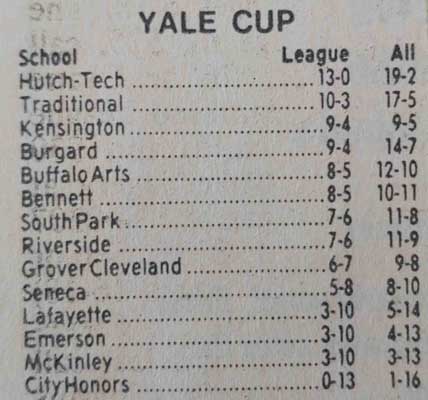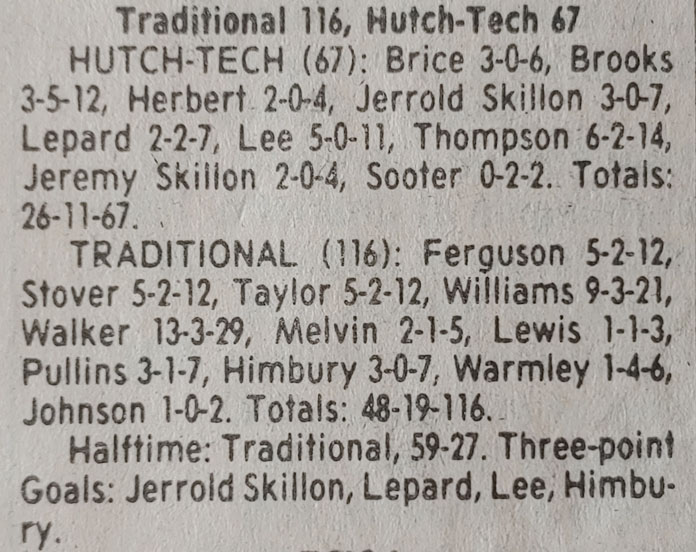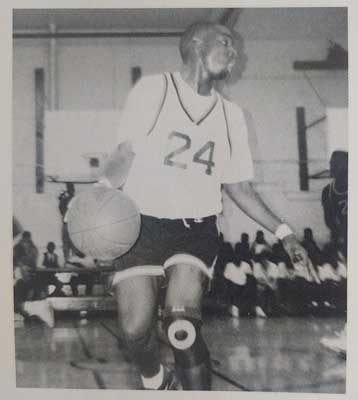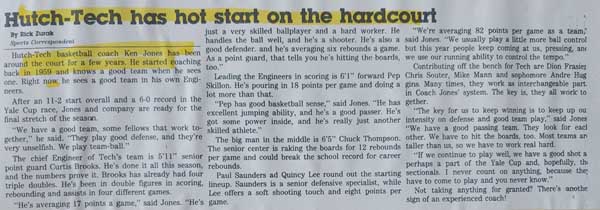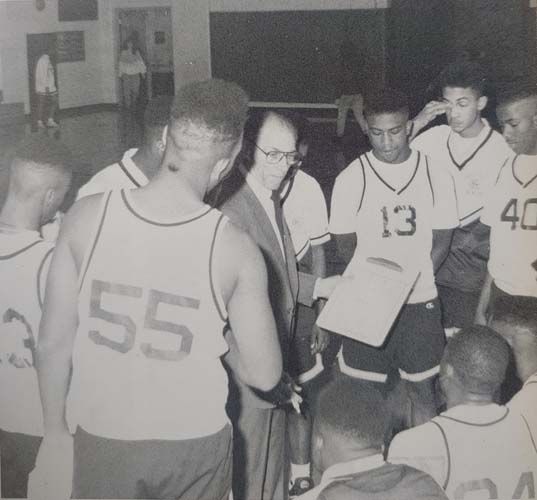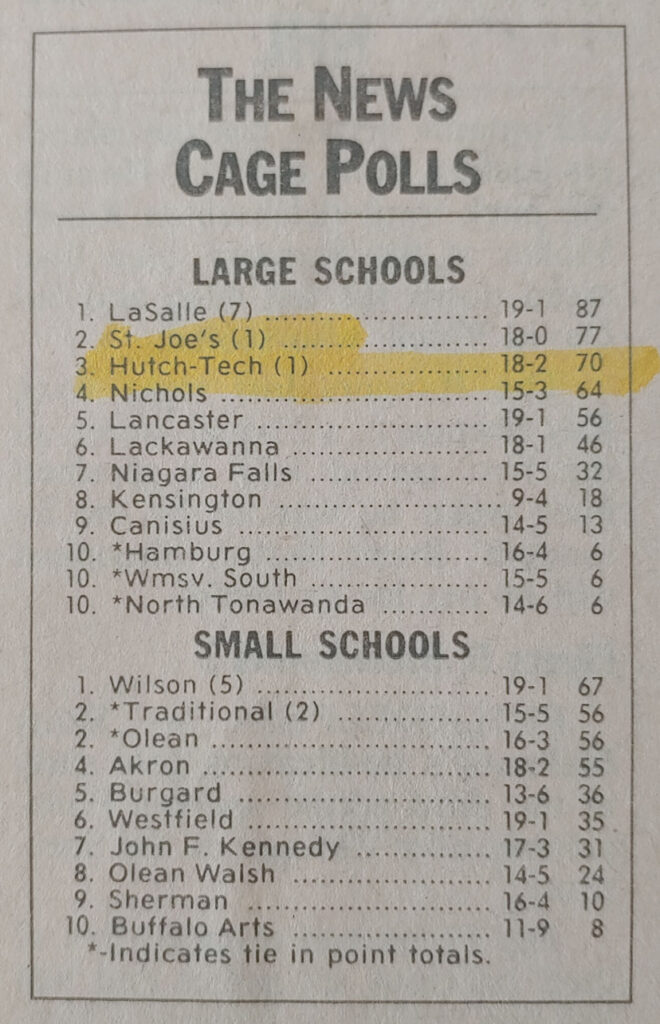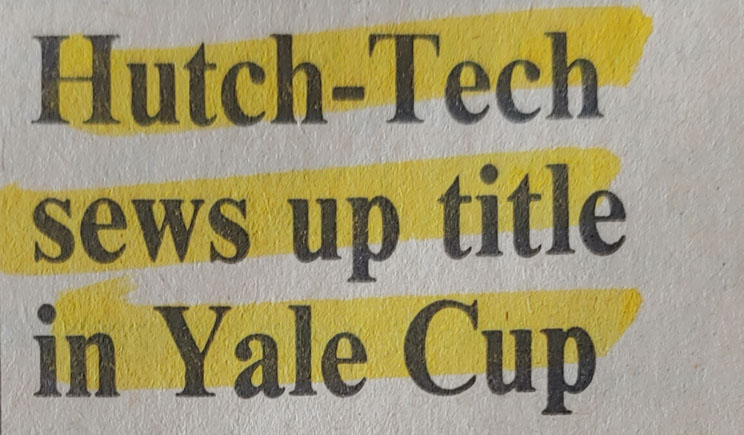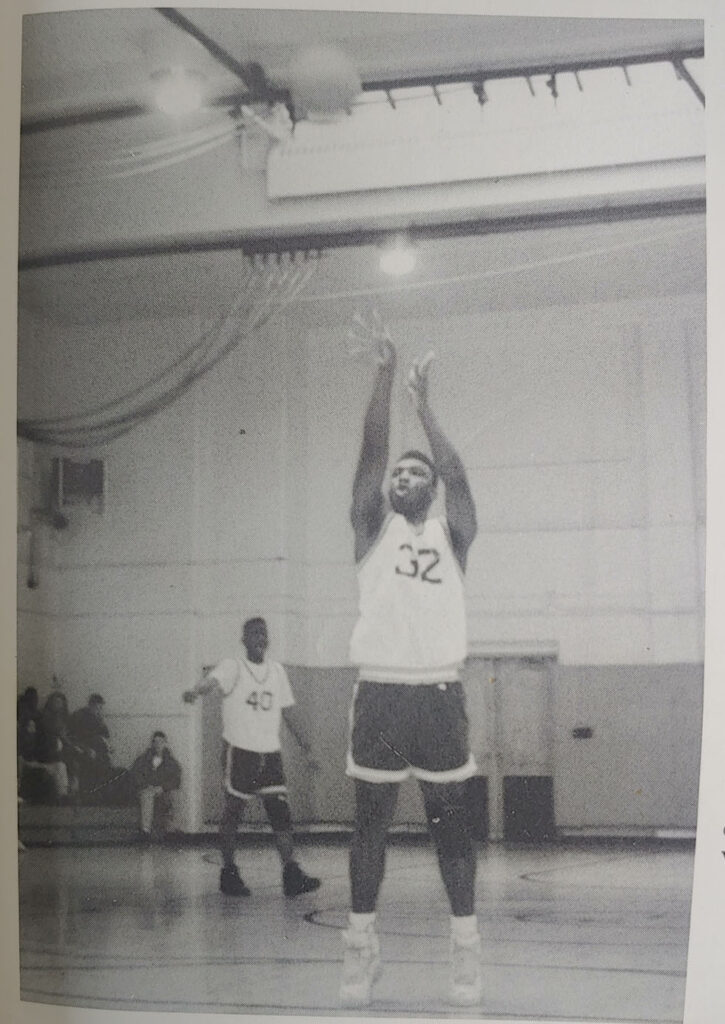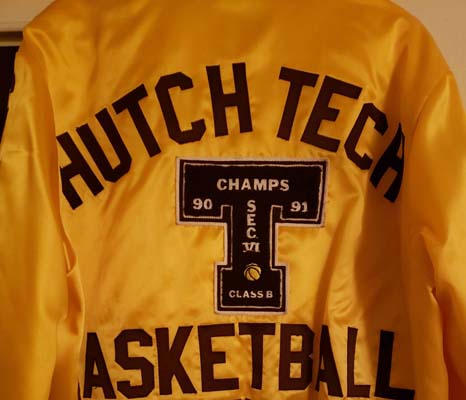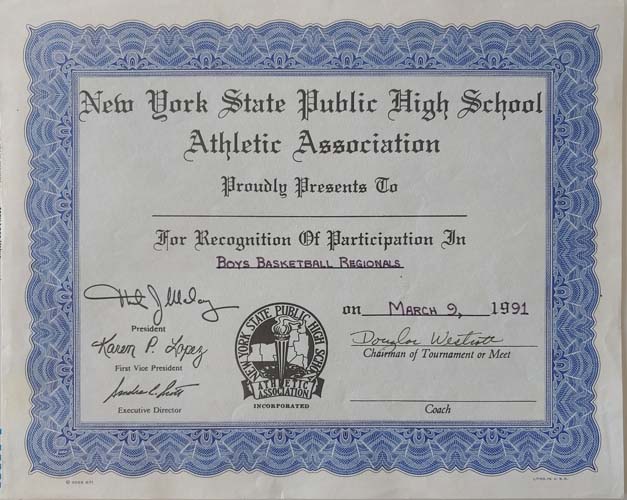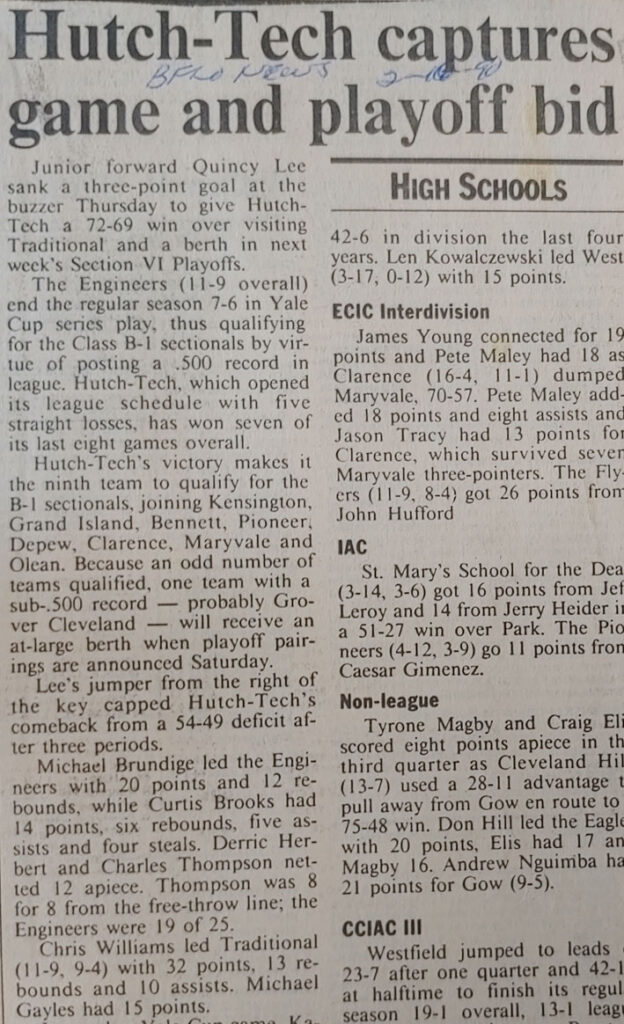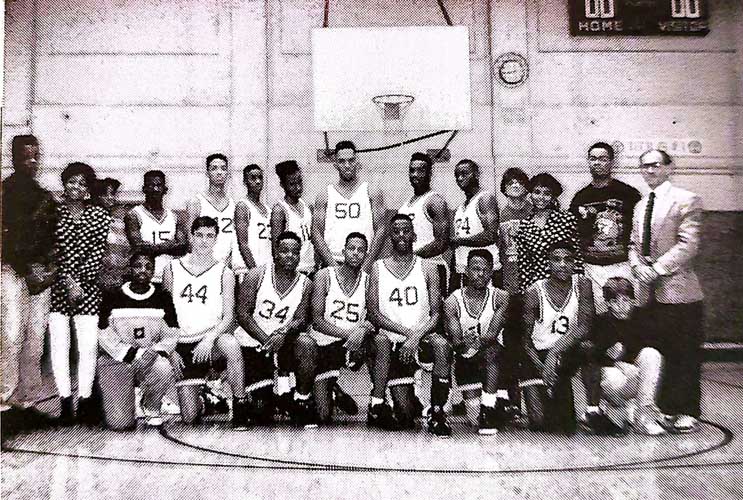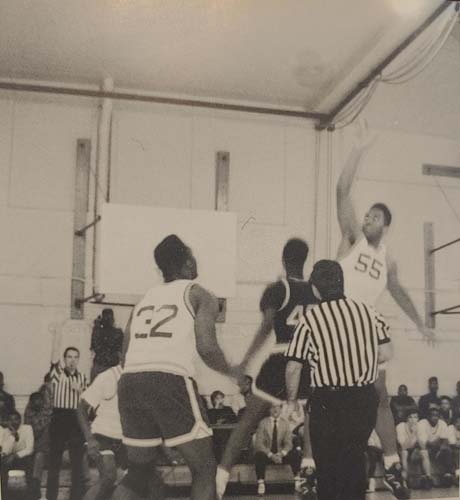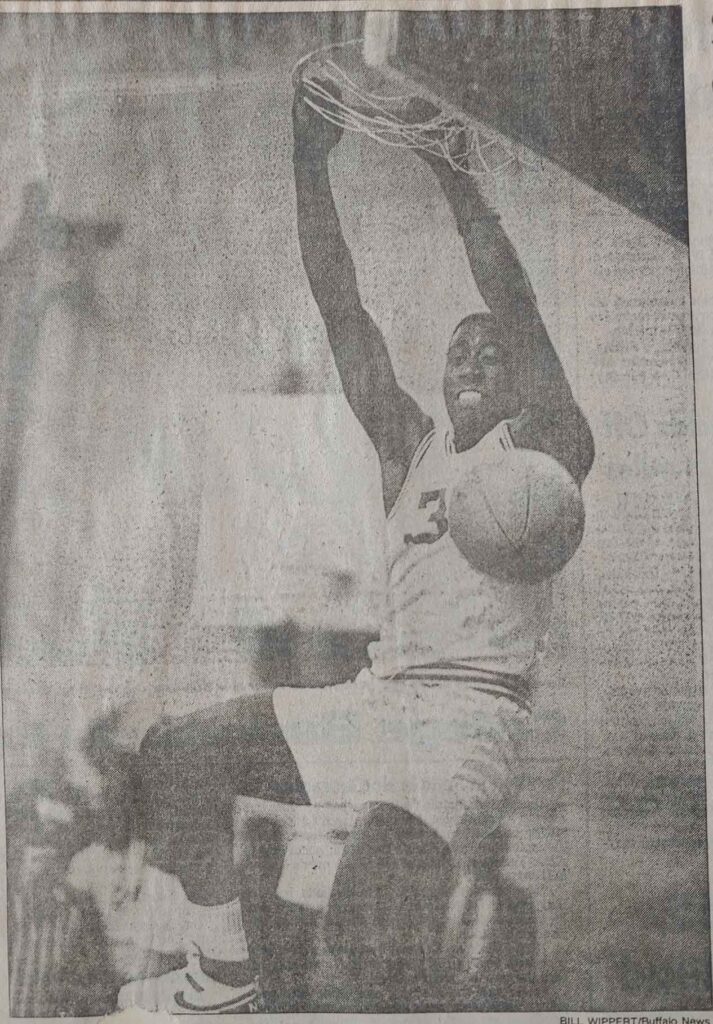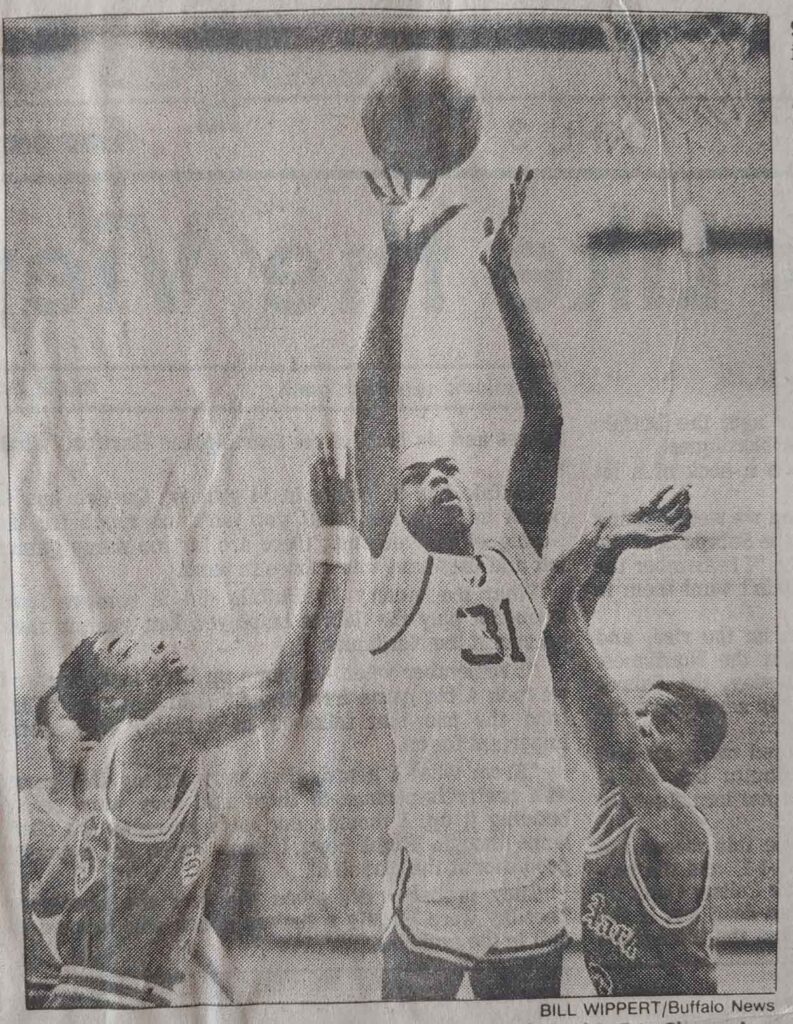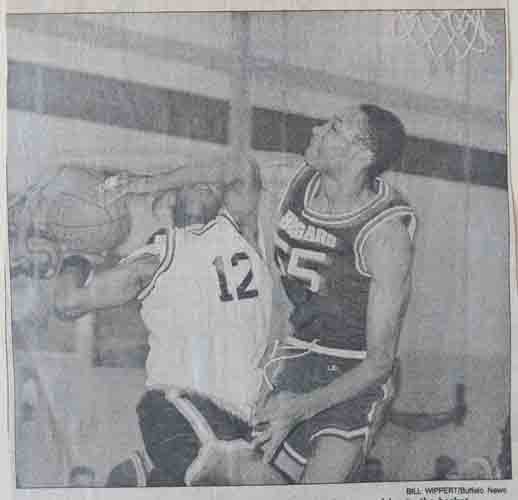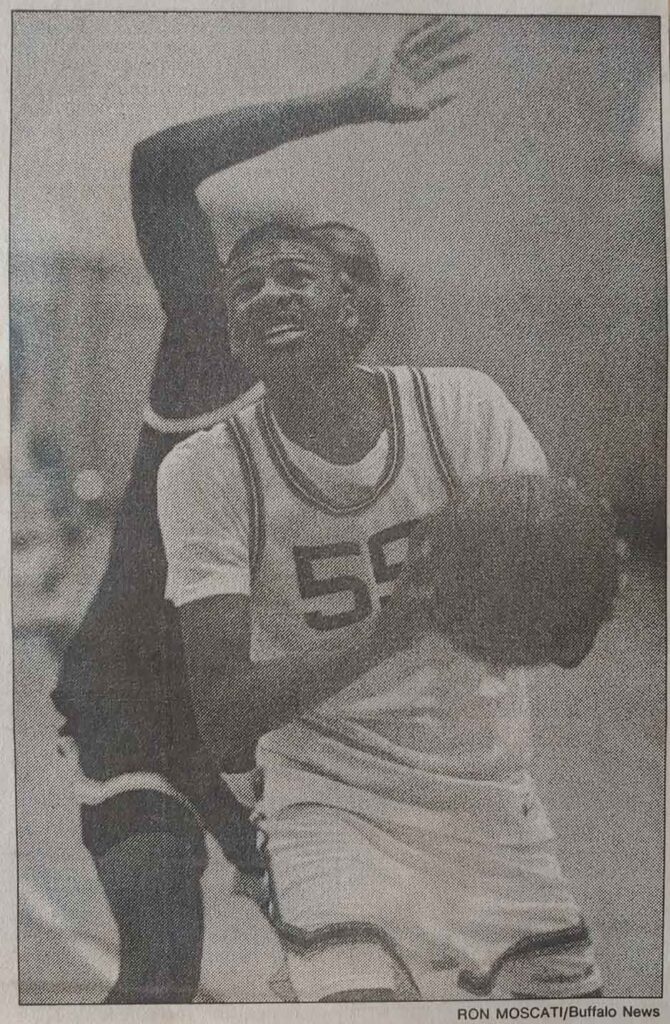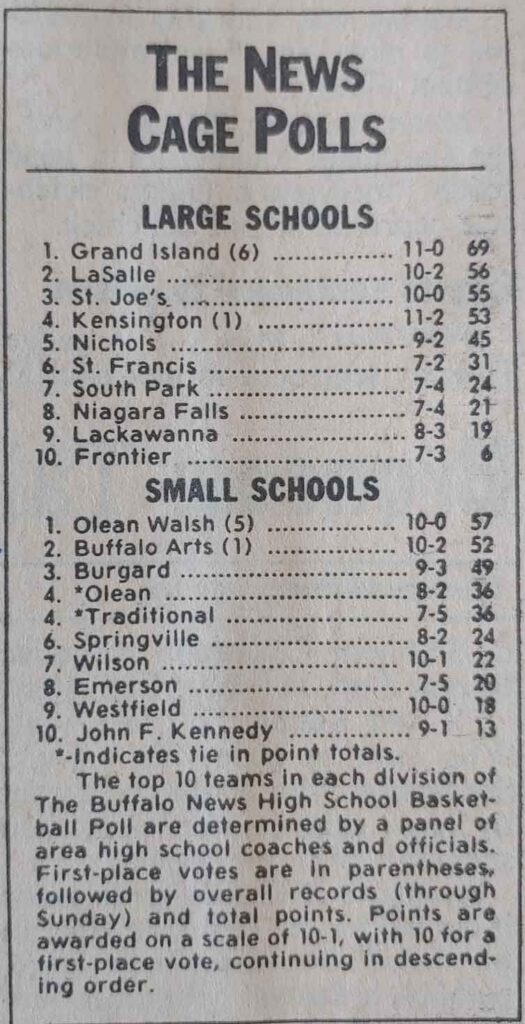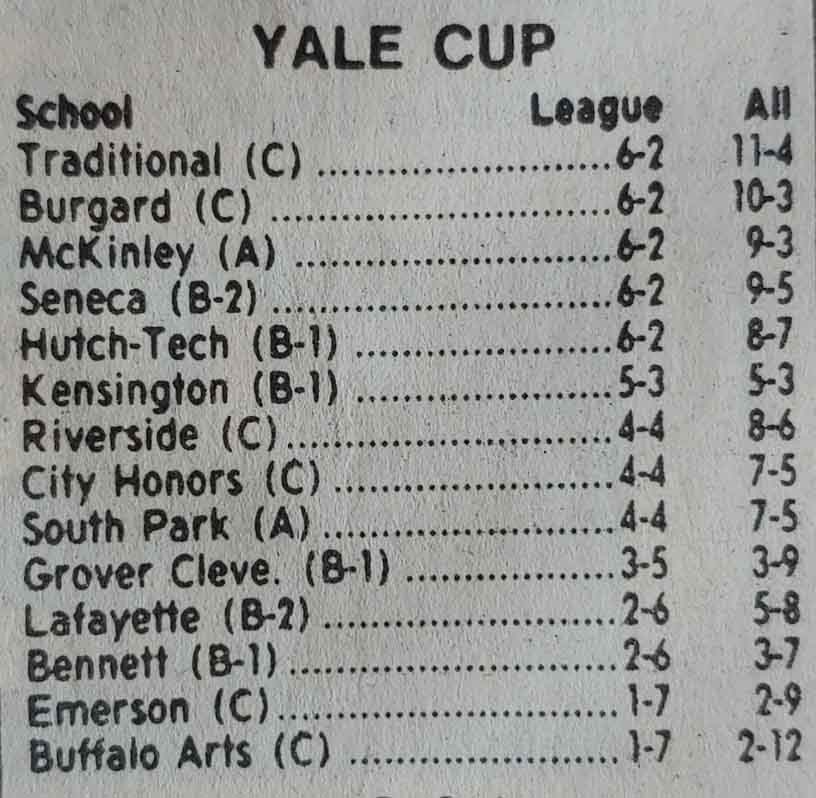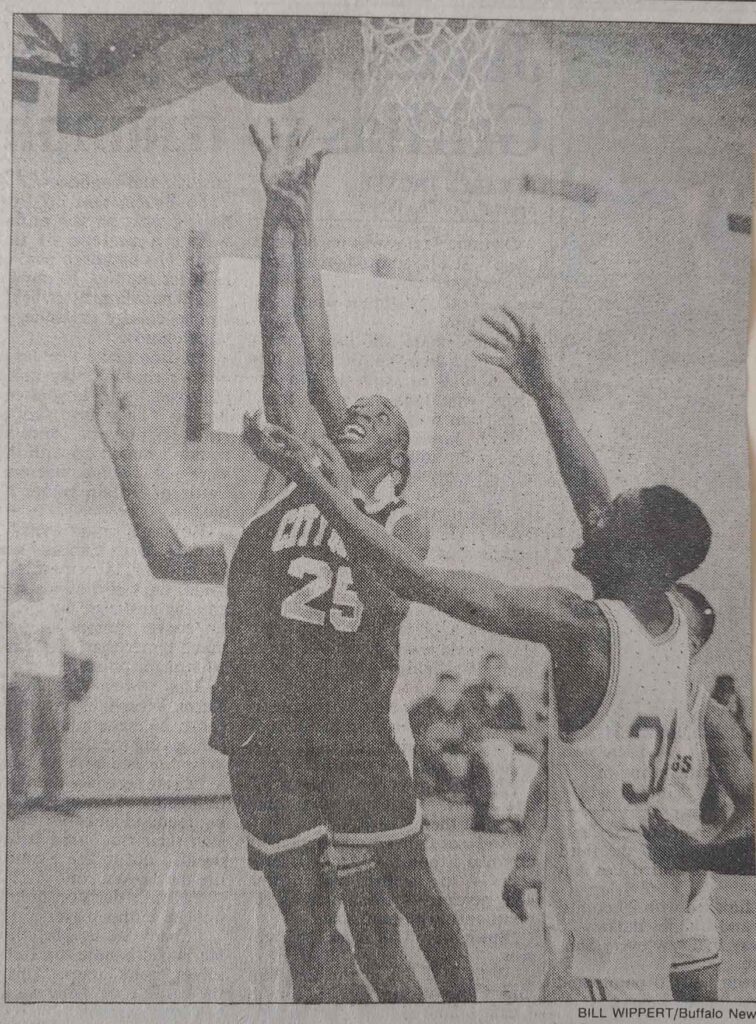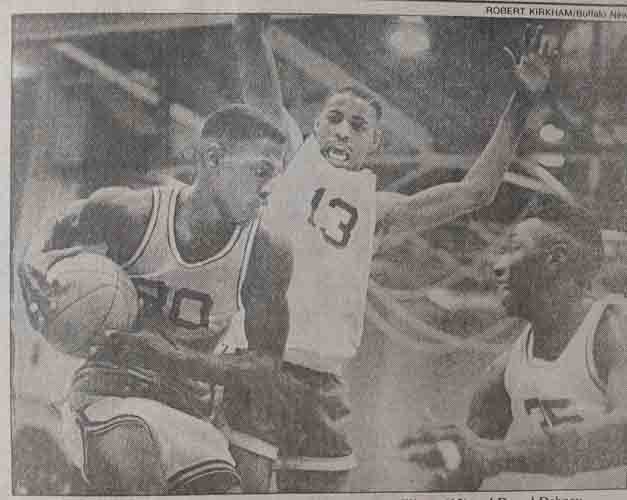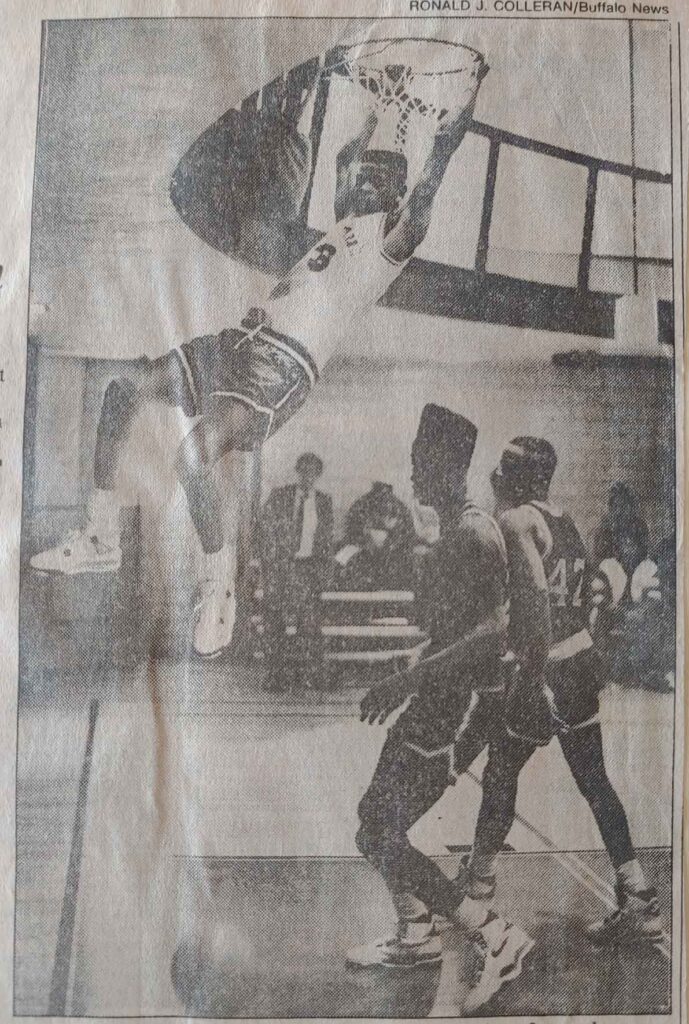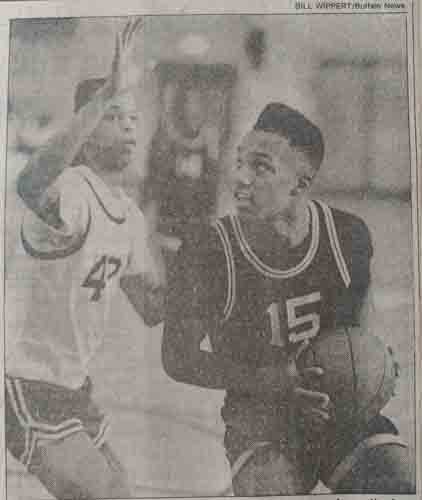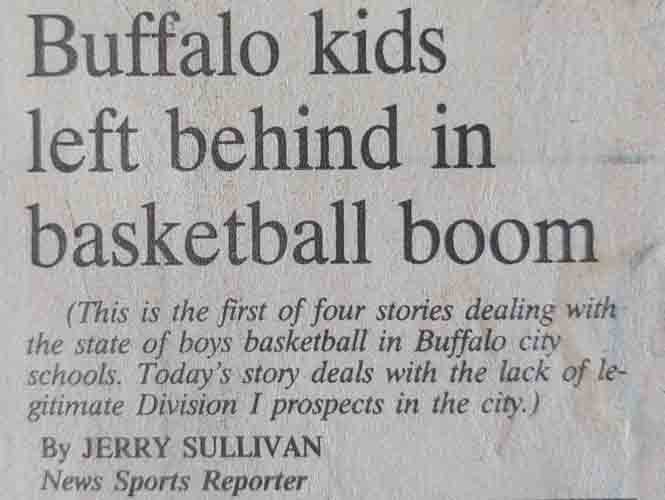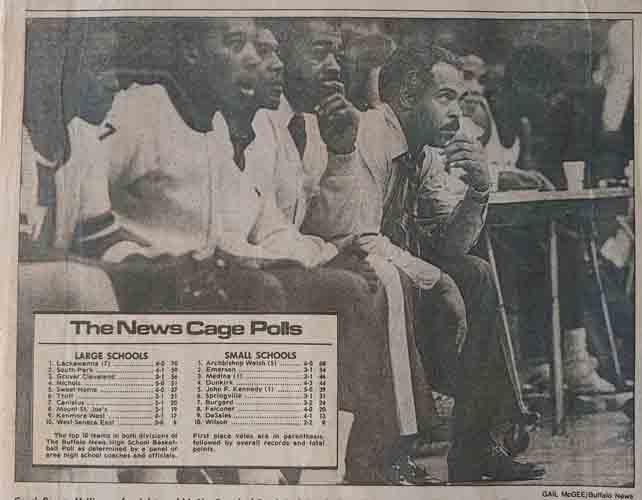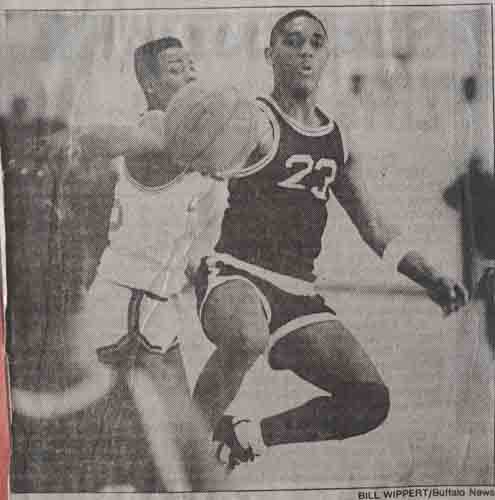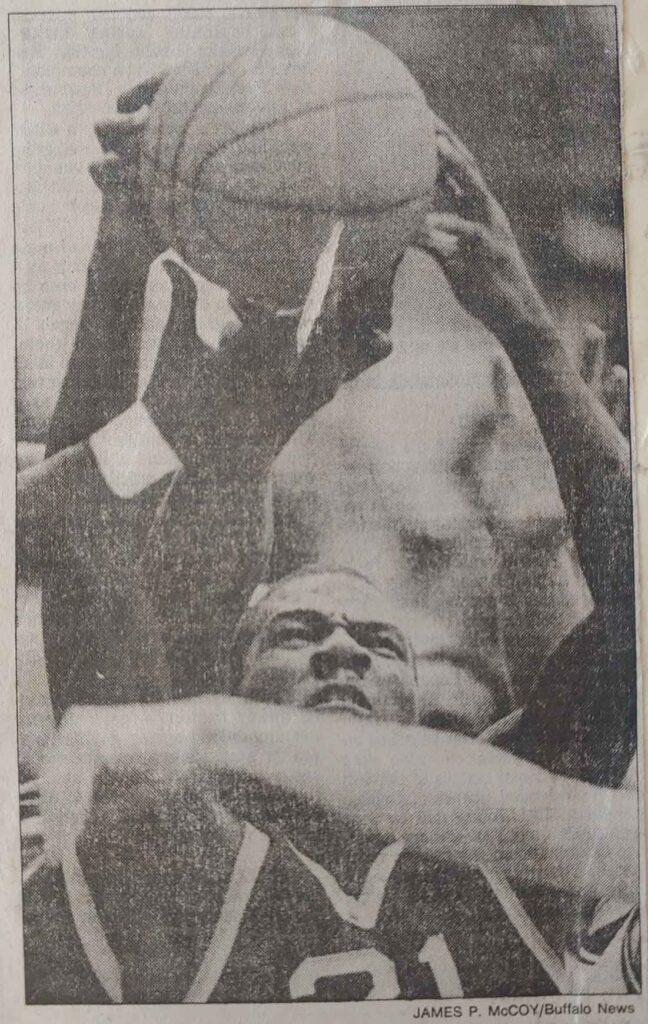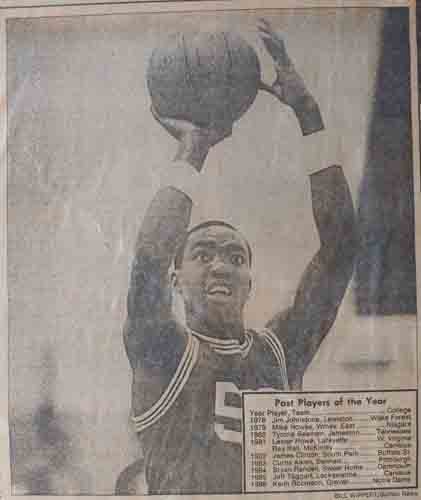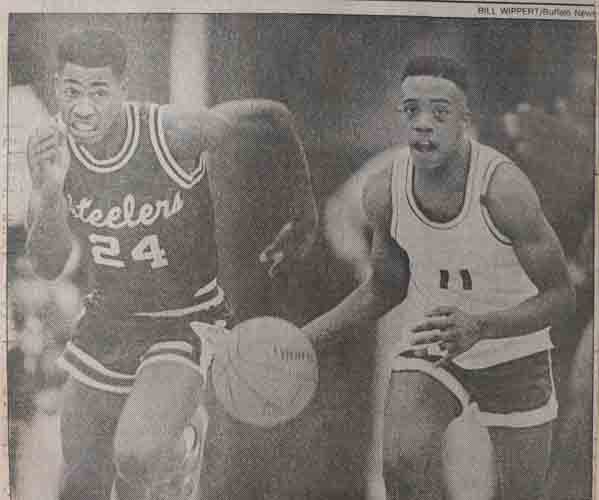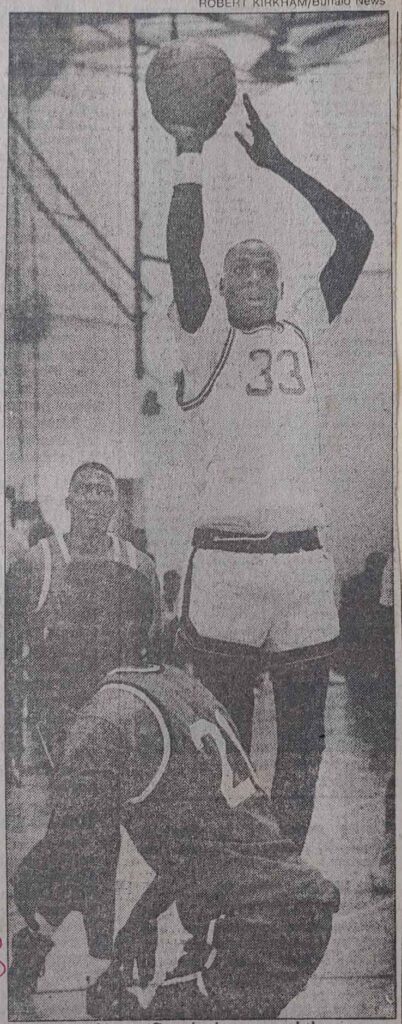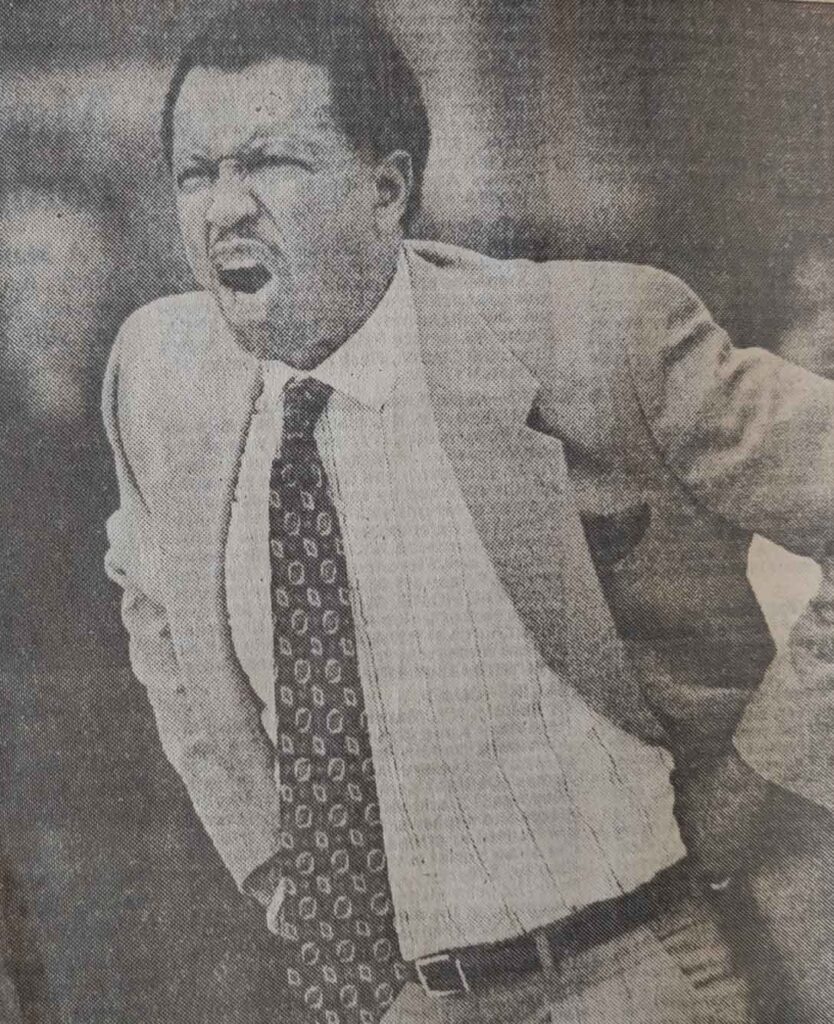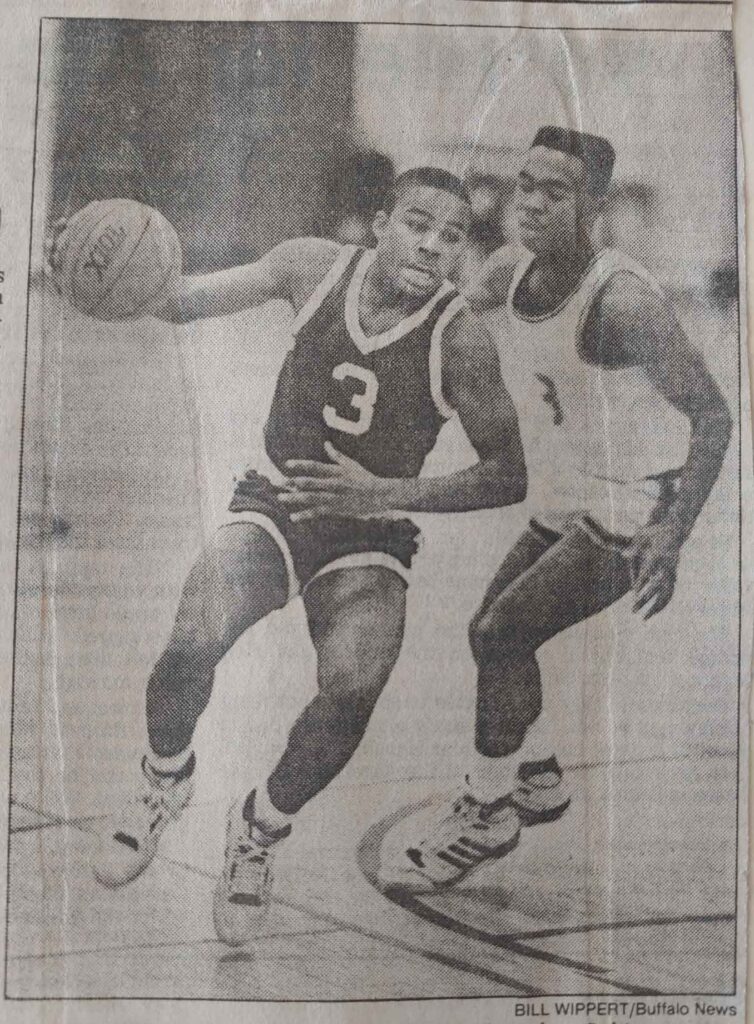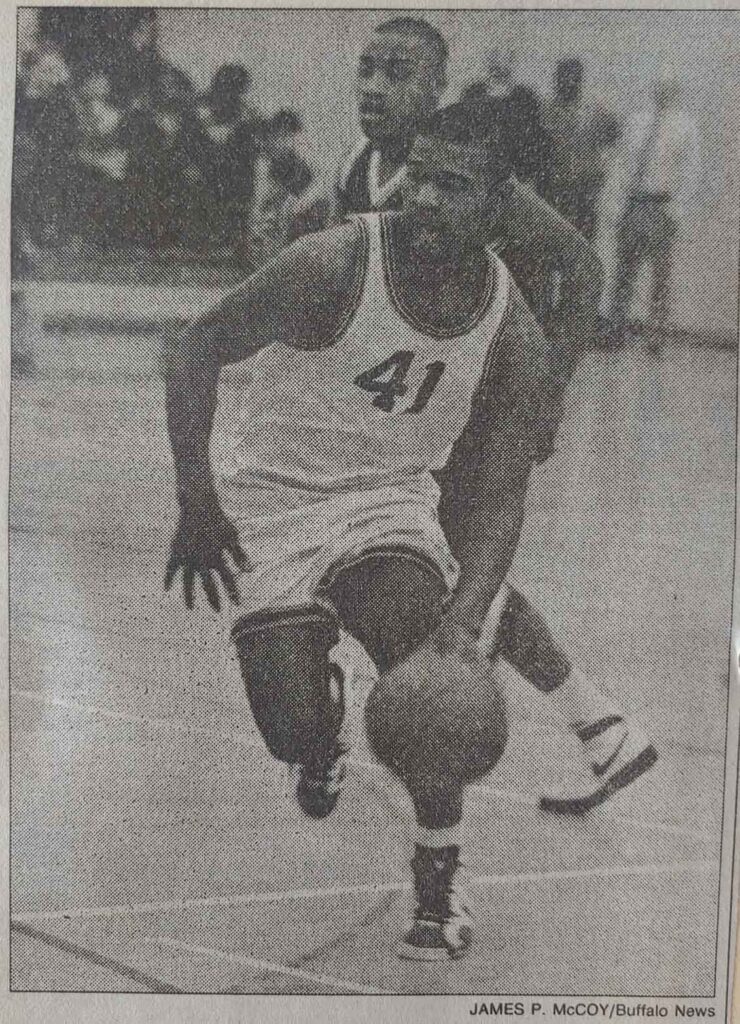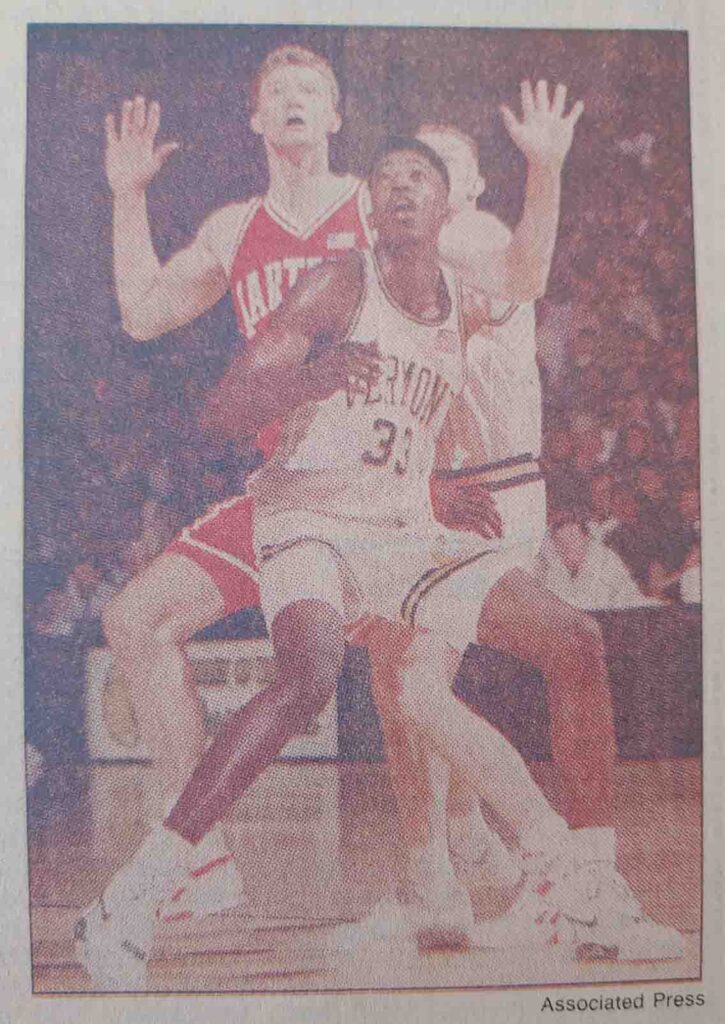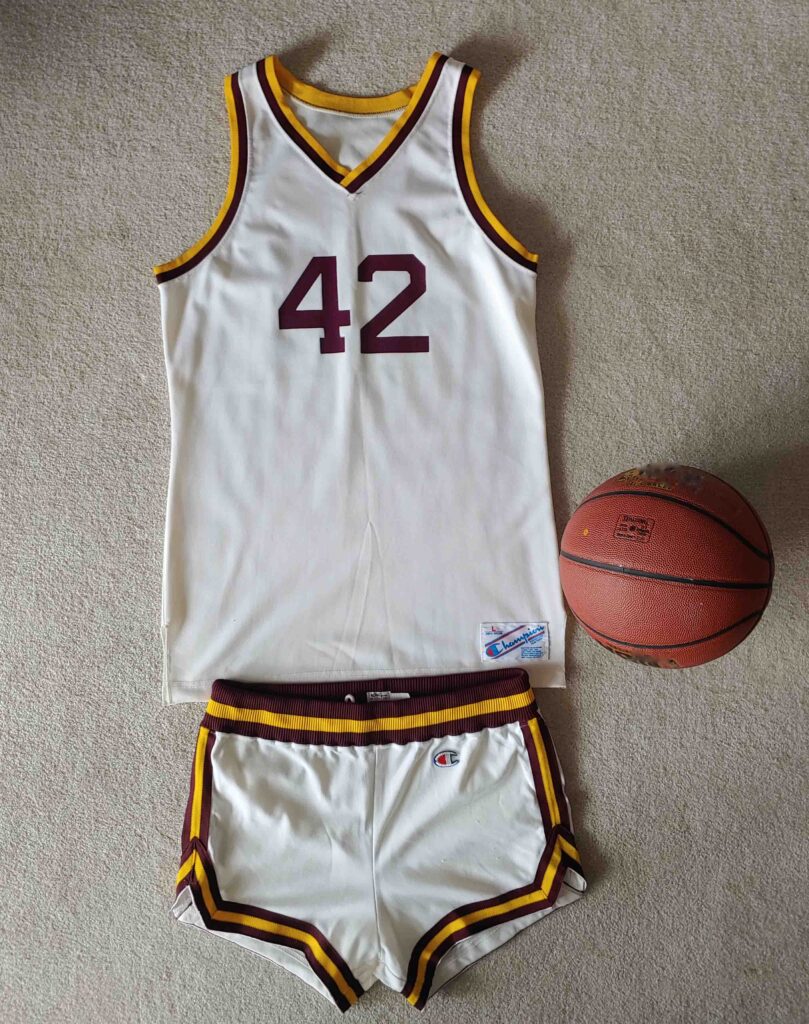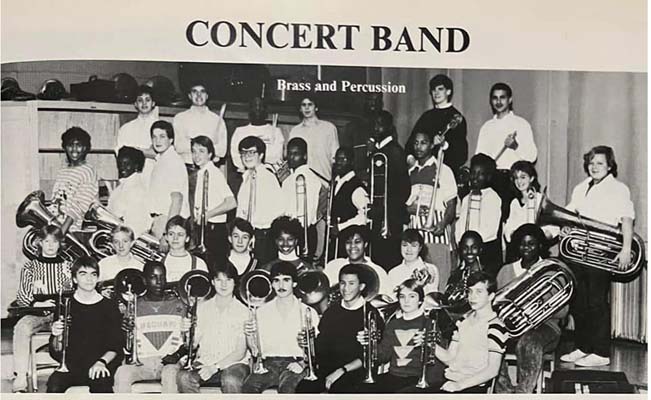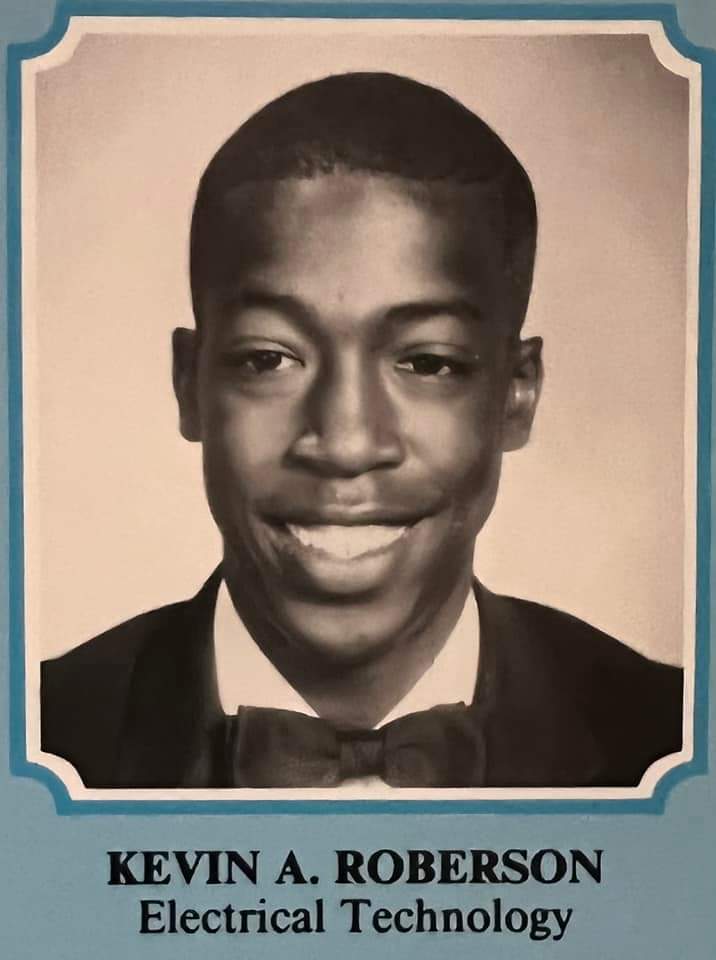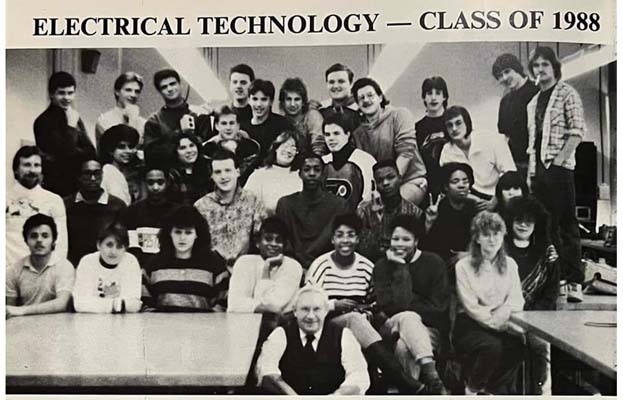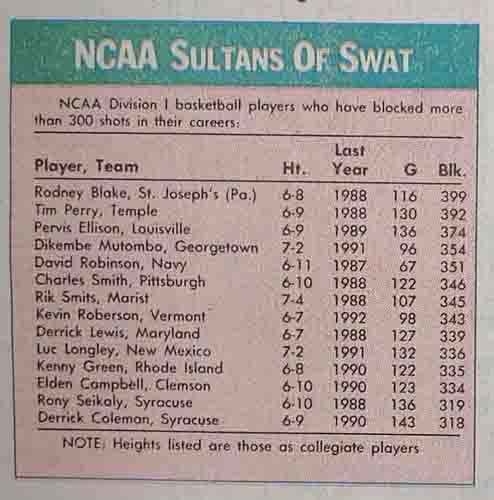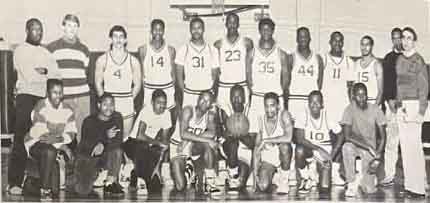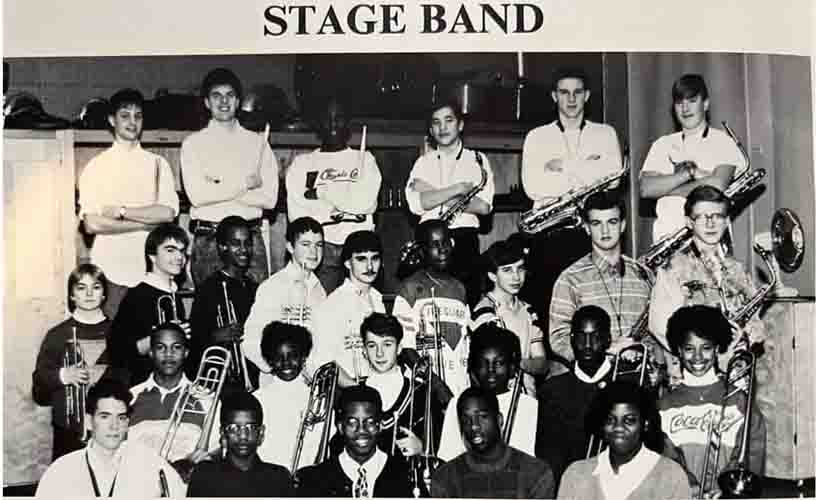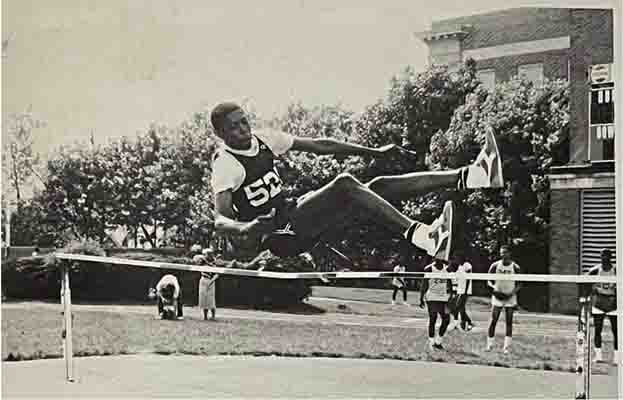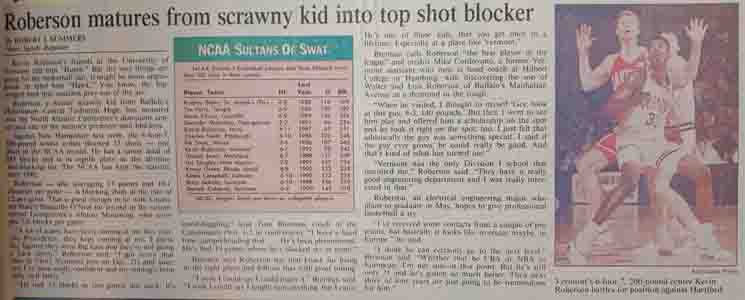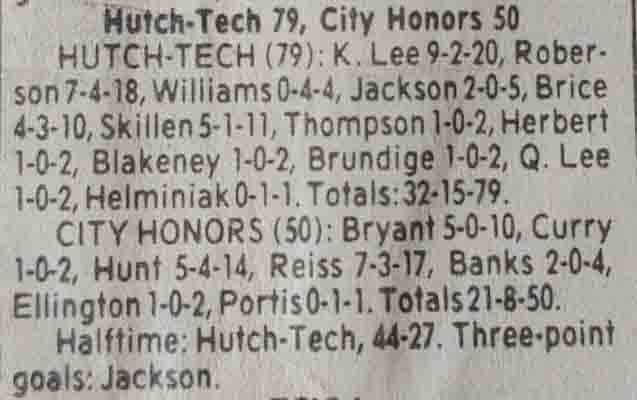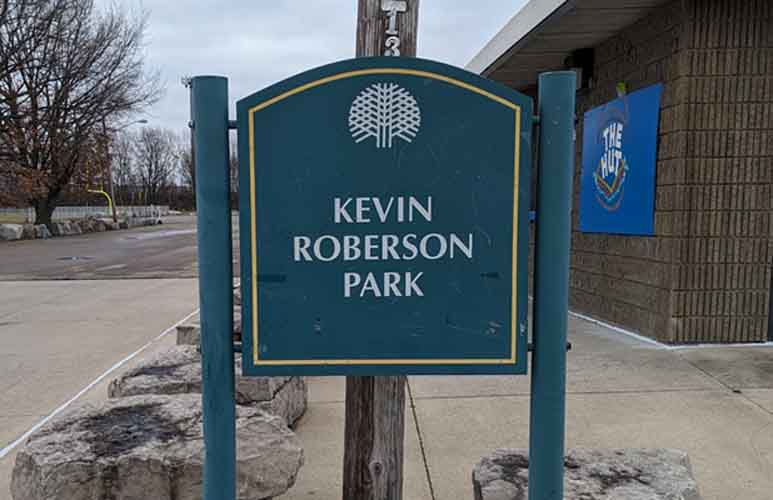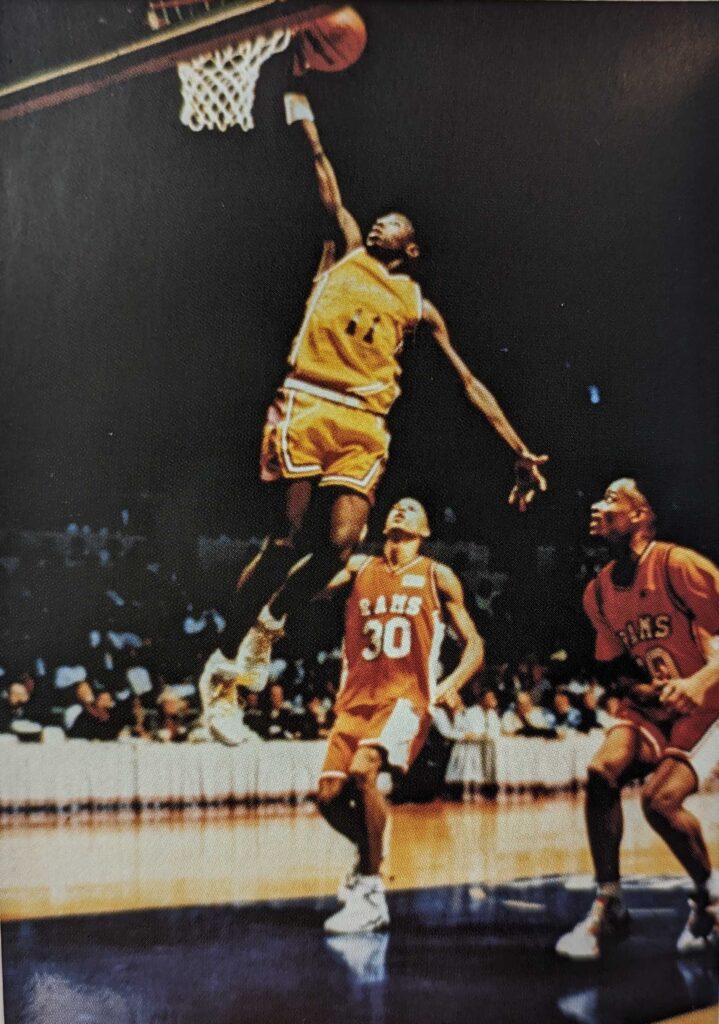
A Quick Plug for My Book
Hello. Thank you for clicking on this link, and I hope you enjoy this essay. Writing a book was the genesis of my blogging and becoming a video content creator. I have published part one of my book project entitled, The Engineers: A Western New York Basketball Story. It is currently available on Amazon in eBook, hardcover, and paperback formats. Shortly I will be selling signed hardcover and paperback copies on my online store entitled Big Words Authors. You can place an order now if you want a signed copy. There is also a page discussing the book. Please consider visiting it to learn more about the project and see promotional content I’ve created surrounding the project. And now on to our feature presentation.
A Quick Note to the Stars of Hoop Dreams
Before starting this essay, I want to make a declaration to Arthur Agee and William Gates. I would love to interview the two of you if you read my essays reflecting on Hoop Dreams. I have my own sports YouTube channel entitled, Big Discussion76 Sports. You are both royalty as far as I am concerned and talking to you would be a dream come true for me personally.
Hoop Dreams: Arthur Agee and William Gates
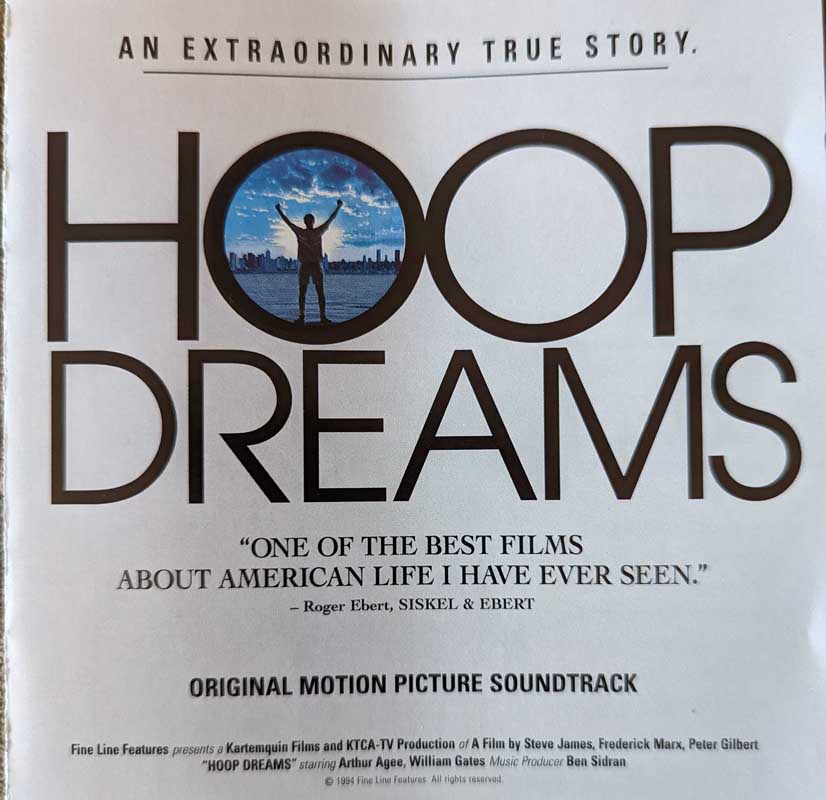
This piece is another promotional essay for my two-part book project entitled, The Engineers: A Western New York Basketball Story. Long before writing my story, I fell in love with the documentary Hoop Dreams produced by Steve James, Peter Gilbert, and Frederick Marx. Hoop Dreams follows the basketball dreams of Arthur Agee and William Gates throughout high school into college. The two youths grew up in the West Garfield Park and Cabrini Green neighborhoods in Chicago, Illinois, respectively.
The documentary inspired me, and there are similarities between their stories and that which I tell in my own project. Arthur and William came much, much closer to the National Basketball Association (NBA) than I ever did, admittedly. I am thus, in no way saying that I was at their level talent-wise. I crafted this piece simply as a fan. Their stories touched me as there were some common themes between us.
There were several subthemes to Hoop Dreams. My previous piece focused on the Gates brothers. It discussed Curtis Gates’ impact on William’s basketball journey. This piece will revisit Arthur Agee’s up and down basketball journey and its significance. Arthur’s story was one of perseverance with unexpected highs and lows and redemption at the end.
As described in my essay about the Gates brothers, I purchased the special deluxe edition of Hoop Dreams. One of the powerful bonus features in it is Arthur and William’s voiceover commentaries. You can also listen to the commentary of the producers.
Optimistically Starting His Basketball Journey at St. Joseph’s of Westchester

At the start of Hoop Dreams we see that young Arthur Agee, Jr. grows up with both of his parents, Sheila and Arthur Agee, Sr. His father is referred to as ‘Bo’ throughout the movie. Arthur is referred to ‘Man’ by the family, a nickname he received as a toddler as he was ‘Daddy’s Man’.
“He has the quickest first step. I will bet you a steak dinner that we will be hearing from him in a couple of years.” Earl Smith discovers Arthur early in Hoop Dreams while ‘beating the bushes’. He is a talent scout for private schools like St. Joseph’s of Westchester (St. Joe’s), where No. 11, Isiah Thomas, played high school basketball. Isiah became a star at Indiana University and then in the NBA for the Detroit Pistons. Beating the bushes was simply scouting talent around the city from certain high schools.
Coach Pingatore and the St. Joe’s Boys’ Basketball Program
“Basketball has to be second to your academics. If you do not get your grades, then you are not going to play. If you work hard with your grades and you work hard with basketball, then I will be able to help you as far as going to college.” The studious looking Coach Gene Pingatore talks with Arthur and his family in a key early scene. He discusses being a student athlete at St. Joe’s. “I cannot guarantee where you are going to go or if you will be a star. But I guarantee that I will help you get into the school that will be best for you!”
“I am making a commitment to you, if you make the commitment to be a part of this kind of program,” Coach Pingatore continues as the Agee family looks on. Earl Smith took them to the school for an introductory visit and a basketball clinic. While there Arthur meets his prospective future varsity basketball coach and ponders the next four years of his life and beyond. ‘Coach Ping’ describes the culture and expectations of the St. Joe’s boys basketball program. He further seeks to develop an early trust with the Agee family.
Arthur Navigates St. Joe’s
“It was strange for me going to a far out school. I saw a rug, flowers, and clean hallways – things I did not see at an ordinary school. I was excited about seeing something different.” Arthur enrolls at St. Joe’s, though the exact terms are not revealed in the film. He makes the hour long commute every day, sometimes in the harsh winter weather conditions. It is like going to new world for him.
Arthur’s talent and abilities are evident as he leads the St. Joe’s freshman team to a winning record. We see the quick first step Earl Smith described in a clip of him hitting the game winner for the freshman team. While Arthur excels on the basketball court, he struggles a little bit academically and indulges in mischief at times. These were not unusual for young men at that age, speaking from personal experience. In general, his prospects at St. Joe’s are positive going forward.
“I had just never been around a lot of white people. It was different because at a black school I could associate with people who talked the way I talked,” Arthur says describing the environment and culture at St. Joe’s. “It is a little hard, but I can adjust to it.” Though it was not discussed as much, William Gates had to make similar adjustments.
A St. Joe’s Legend Shows Up
Illustrated by Arturo Torres
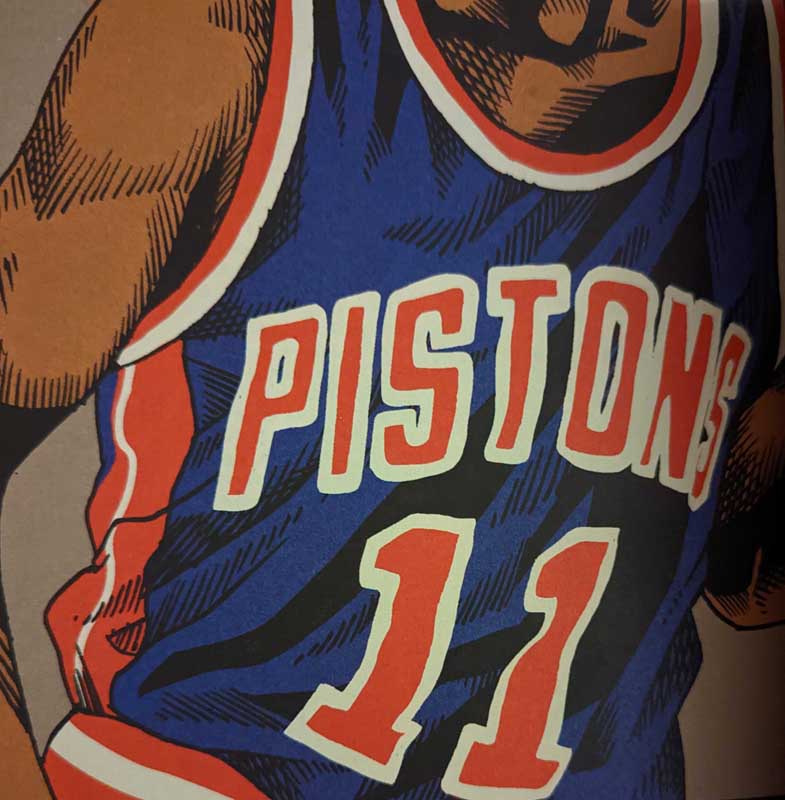
“If he is there, I will be shocked,” Arthur says, going to the basketball clinic the day of his initial visit to St. Joe’s. A producer asks him about the prospect of seeing Isiah Thomas in person. His face lights up at the prospect of meeting the Chicago basketball legend.
“It was like a million guys were trying to be better than the other one. But to me, I was better than all of them, except for Isiah!” Arthur describes the atmosphere of the St. Joe’s boys basketball clinic. The producers show the St. Joe’s gym full of boys going through basketball drills and receiving instruction as he speaks. The scene captures the innocence, newness, and structure of learning how to play organized basketball versus street basketball.
“In every neighborhood there is a guy who can really play and shoot the lights out every time down the court.” Isiah Thomas addresses the young basketball players in the stands after being introduced by Coach Pingatore. He wears his Detroit Pistons practice gear. He acts out making three baskets with a swooshing noise. “Then the guy goes to St. Joseph’s High School and the guy gets cut. They say, ‘Tom was real good. Why did he get cut?’ See, Tom did not learn the fundamentals of team basketball, which is what you are learning how to play.”
Arthur Looked Up to Isiah Thomas
“He told my Daddy that he knew I could play, so he had to play me hard,” the young Arthur says. The footage shows him slowly walking onto the court to play one on one with Isiah Thomas grinning in disbelief. He guards the Detroit Pistons star over one of the riveting horn-led instrumentals of the documentary. Bo is shown laughing and enjoying the scene in the stands.
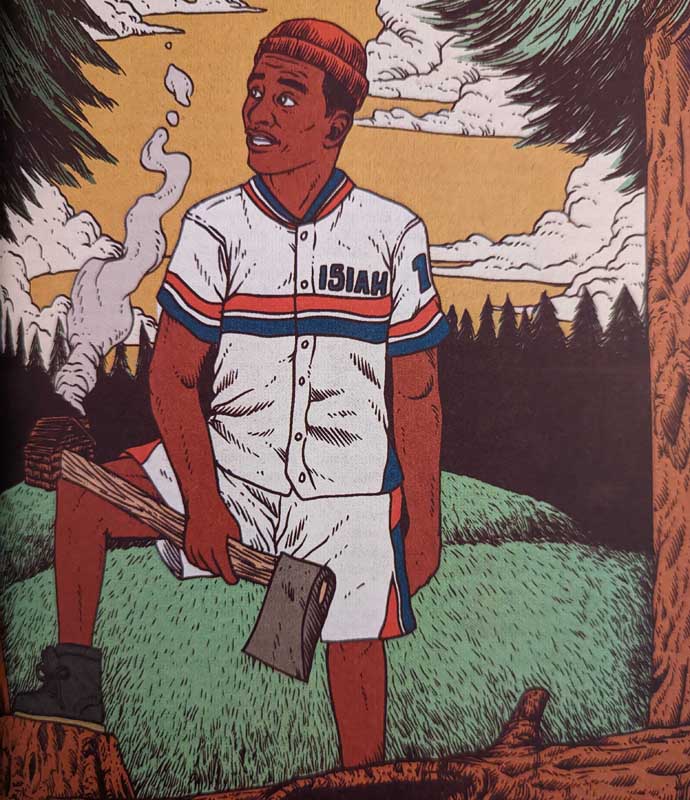
Illustrated by Arturo Torres
“I was in a daze just looking at him – looking at the logo on his shorts. This is my idol right here! I did not know that I was going to play him though. Looking at him, I just wanted to hit him on the wrist and just swap at him,” Arthur says in his commentary with William Gates.
“I could not believe it. I was just so geeked. Anything he did like a pump fake, I just went right for it. I was turning around smiling. If that had been anyone else, I would have fouled them,” Arthur says. “He might have made it, but I would have fouled him. I did not even touch Isiah Thomas!”
Team Michael or Team Isiah? Chicago’s Two Basketball Heroes and Rivals
“I drew on these with my name, ‘Tuss’,” Arthur says part way through Hoop Dreams. The sequence takes place in his West Garfield Park room. He holds a pair of sneakers up to the camera showing the name TUSS inscribed in red letters. This was a common practice for inner-city kids at the time. “I heard his nickname used to be Tuss, so I just started calling myself Tuss!” The comments are played as a black and white photo of Isiah is shown giving his signature grin at a Dominique Wilkins basketball classic.
In Arthur’s room you can see paraphernalia of both Isiah Thomas and the Chicago Bulls’ No. 23, Michael Jordan. While Isiah was a homegrown Chicago basketball legend, his position as its favorite basketball son was arguably usurped by Michael. Their rivalry has been covered extensively in basketball lore. Many of the Chicago natives were likewise torn between the two who became bitter basketball rivals at one point.
“Arthur was always more into Isiah Thomas than I was. I was always into Michael Jordan,” William Gates admits during his commentary. While directly compared to Isiah throughout the film, he was more of Michael Jordan fan.
“When I was playing ball back in the neighborhood, they said if you made a nice pass, you were Isiah Thomas. If you made a nice move, you were Michael Jordan,” William Gates continued. “We lived more in the fantasy of the game than the actual reality.”
Arthur and William came of age during what many called the Golden Age of the NBA. It was the era where Michael Jordan, Isiah Thomas and other stars played the game with an artistry and passion unique to that time. Magic Johnson and Larry Bird spearheaded it, and it caused kids everywhere to dream, realistically or not.
Challenges Off the Basketball Court, Economics and Their Ripple Effect
“I worked for Sarah Lee and got laid off. I worked for Scholars Meat Packing and got laid off. You know. You look around your house and you see your food getting low. Your bills are due here and your bills are due there,” Bo Agee states in front of the Agee home, looking concerned and tired.
St. Joe’s increased its tuition in Arthur’s sophomore year coinciding with Bo getting laid off from several jobs. Arthur’s family paid half of his tuition out of pocket, which was affected by Bo’s loss of employment. The result was Arthur having to leave St. Joe’s and enroll at Marshall Metro High School, a public inner-city school, and a different world.
Several scenes later, Arthur plays pickup basketball at a neighborhood court with his peers. He wears a red Push Excel replica jersey from the famous Chicago professional charity exhibition game. Arthur puts the ball behind his back and scores from the top of the key before confidently trotting up the court. He also developed the ability to play above the rim and dunks the ball off one foot in stride.
“You have got old legs, Dad!” In this riveting scene Bo shows up with his shirt off, dressed in sweatpants and is visibly not himself. He tries dunking the ball like Arthur and his friends and misses. Afterwards, he participates in a drug purchase in the far corner of the court. I debated noting this scene out of respect for the Agee family. It showed, however, Arthur’s growth as a player and some of the adversities he faced during that stretch.
Arthur’s Altered Trajectory
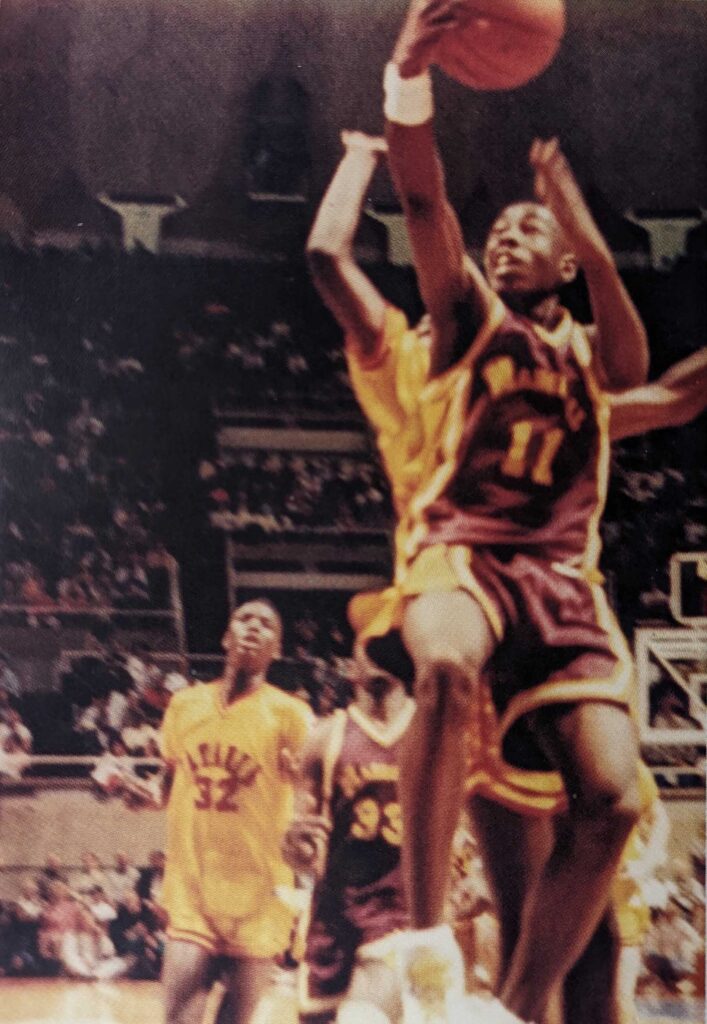
“If I had known all of this was going to happen, Arthur would never have gone to St. Joe’s,” Arthur’s mother, Sheila, says distraught over what happened to Arthur. “Arthur’s tuition was supposed to have been paid for. His books were supposed to have been paid for and none of that happened!”
After his bills not being paid, Arthur had to sit out of school for weeks at a time before finally transferring. The Agee’s experience was not uncommon as many families over the years had to pull their children out of private schools due to economics. I saw similar things in Buffalo. One player I interviewed for my book project, The Engineers, experienced the same thing; Dennis Wilson of Turner/Carroll, and Riverside High Schools in Buffalo.
“I thought Pingatore and them would help me out. I guess he thought I was not going to be that big of a ball player. So why would he just waste money on me staying there?” A despondent Arthur discusses his treatment by St. Joe’s after enrolling at Marshall. He wears Dwayne Wayne-style glasses and a Dominique Wilkins-era Atlanta Hawks jersey. “Or he just thought I was not going to grow. He kept asking me, ‘When are you going to grow?’ I said I don’t know.”
“If he was going out there playing like they had predicted him to play, he would not be at Marshall! Economics would not have had anything to do with him not being at St. Joe’s,” Arthur’s new Coach, Luther Bedford, an older black man, authoritatively states in his base-filled grandfatherly voice.
“Somebody would have made some kind of arrangement and the kid would have still been there,” Coach Bedford continues. “He was not making it like they thought he was going to make it on the basketball court, so he is not there. It is as simple as that, and it does not take no brilliant person to figure that out!”
From St. Joe’s to Marshall and Navigating Academics and Basketball
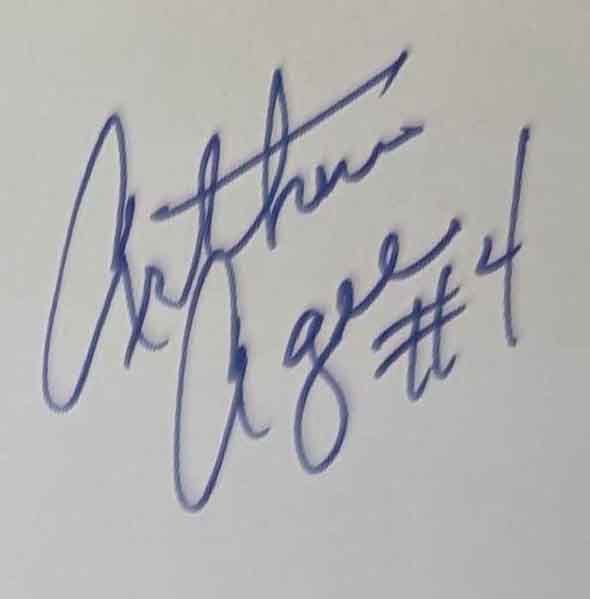
“Here you have a youngster caught in the middle of two separate school systems. Had he stayed at St. Joseph’s, he would have been able to receive credit for that first semester. It does not seem fair, but that is the system,” says Marjorie Heard, a guidance counselor at Marshall discussing the turmoil created by Arthur’s transfer.
Like a lot of kids, Arthur had to make the transition from St. Joe’s to Marshall. One could argue that his greater adjustment was going out to St. Joe’s initially. Marshall was closer to home, and he had more in common with his classmates there culturally. You can visibly see how different the environments were when the producers follow Arthur around the hallways of Marshall.
Regardless, his love for the great game of basketball continued in the maroon and gold. He continued pursuing his basketball dream at Marshall joining the junior varsity team in his sophomore year wearing the No. 11 in honor of Isiah Thomas. He then earned a roster spot on Coach Bedford’s varsity team during his junior year where the team was marginally successful.
Being a Leader and Navigating Life Off the Basketball Court
Another sub thread that resonated with me from Hoop Dreams was Arthur’s friendship with his buddy Shannon. Shannon moves in with the Agee family due to problems in his home in a short mention in the documentary. They are kindred spirits and inseparable. There are scenes of them sneaker shopping, working at Pizza Hut and of course, playing basketball. They were once teammates at Marshall. Coach Bedford notes that, “Arthur was the lesser of the two evils,” in terms of personality and needing discipline. In a scene during Arthur’s junior year, Shannon is in fact seen in the stands dancing during a game.
“I told Shannon to stop doing that stuff!” The producers capture Arthur lamenting Shannon’s involvement in the drug game towards the end of Hoop Dreams. Arthur eventually distanced himself from his friend for getting involved in the same thing that plagued his father, Bo. The sequence resonated with me because my best friend in Buffalo and I started off playing basketball together. He subsequently went into the streets, forsaking school, and the game. I kept playing basketball like Arthur who showed leadership by staying on his path.
Arthur’s Return to St. Joe’s and Wondering What If?
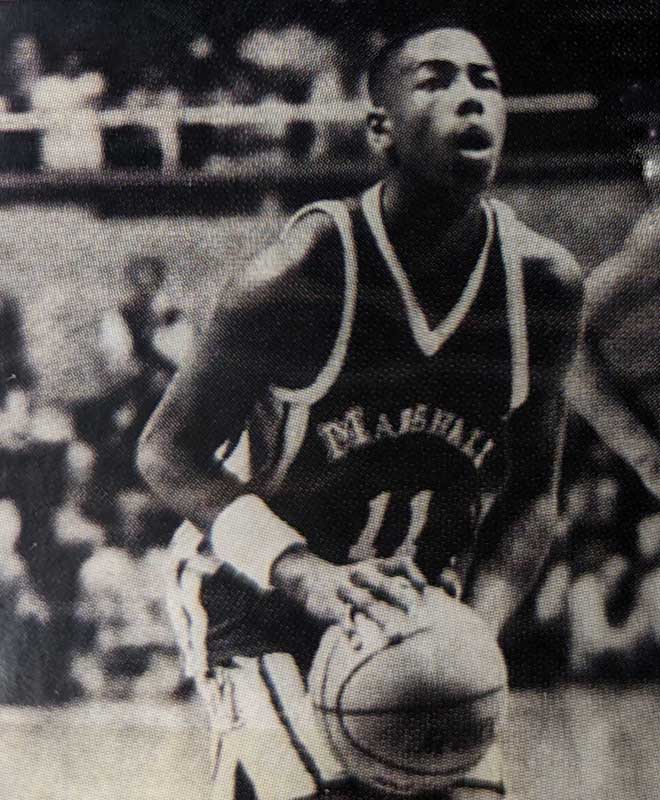
“I am going to watch a playoff game out at St. Joe’s later. Would you like to come?” Late in Hoop Dreams, Big Earl Smith comes to one of Arthur’s games as a senior at Marshall. He was the scout who took Arthur and his family to St. Joe’s in Arthur’s eighth-grade year. He asks Arthur about going to St. Joe’s to see a sectional game. Arthur agrees after pondering it momentarily.
“I am at Marshall. Our next game is against Crane!” Wearing his gold Marshall Hoop Squad jacket, Arthur walks through the halls of St. Joe’s before the St. Joe’s-Nazareth game. He runs into former classmates and teachers who are all surprised and excited to see him. Everyone is excited to see him, and some teachers do not recognize him because he has grown in stature and matured.
Arthur passes by trophy cases full of pictures and commemorations of William Gates’ successes as a Charger. Along with Arthur, watching the scene you wonder about what could have been had he stayed at St. Joe’s. You wonder how dangerous St. Joe’s could have been with Arthur and William teamed up in the same back court. Arthur had in fact grown and matured as the St. Joe’s coaches had asked about earlier in the documentary. He also became a force to be reckoned with on the court as predicted by Earl Smith.
We Could Have Used You Arthur!
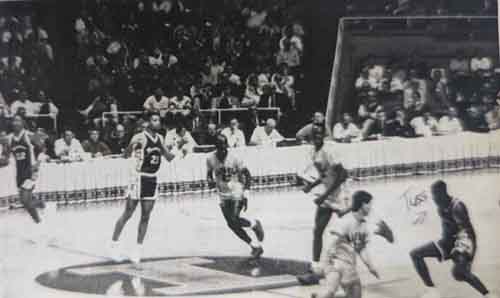
Arthur and Earl Smith watch William’s final game against Nazareth. The game ends in heartbreaking fashion as William misses the game tying-shot in the closing seconds. Coach Pingatore benched him early in the game for arriving late. The loss ends William Gates’ own bittersweet high school basketball career. To read more about this see my William Gates essay.
“Man, I did not think I would go out like this!” Arthur comforts an emotional William after the game who is processing the early ending to his senior season. Though not well covered throughout the movie, Arthur and William knew each other well.
“I am striving for the same things,” Arthur says as his Marshall Commandos are still alive.
“I love you, boy,” William says as the two embrace and part ways.
“We missed you, Arthur! We could have used you! I talked with Coach Bedford, and I will be watching you!” Coach Pingatore lauds Arthur while sipping on a soda immediately after St. Joe’s end of season loss. As you watch that scene, you wonder what Arthur is thinking when Coach Pingatore utters those words. You wonder about his sincerity. You further wonder if he felt regret about not doing more to keep Arthur at St. Joe’s. Finally, you wonder if coaches look back at their decisions regarding players and if they sometimes regret them.
Arthur and the Commandos’ Journey Downstate
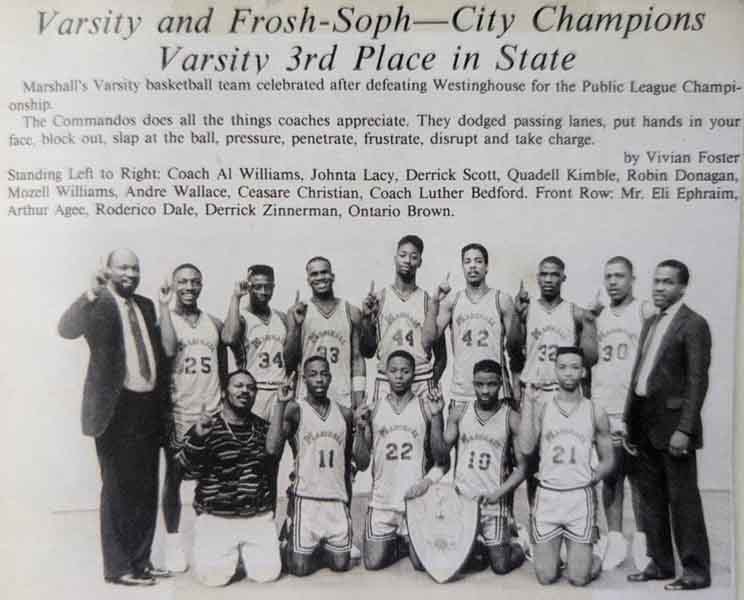
“What’s up man? I told you on the phone what I was going to do!” Shortly after defeating Westinghouse in the Chicago public school championship, the producers show Arthur running over to William in the stands of the Chicago Amphitheater. Dressed in his Chicago Bulls jacket, William came out to see the game with his girlfriend and now wife, Catherine.
“I always dreamed of me and William taking them downstate together. When I was at St. Joe’s maybe we could have gone down state and maybe not. But we did when I was at Marshall.” Marshall defeats Batavia at the state semifinal and Arthur’s voice is heard over footage of their unlikely comeback victory. He discusses once dreaming of him and William doing it together. William watches the game at home as Arthur and his teammates come within one game of winning the whole thing.
In both Arthur and William’s commentary, they acknowledge that their high school basketball careers went in opposite directions. While William and St. Joe’s failed to go downstate, Arthur, Coach Bedford, and the Marshall Commandos embarked on a ‘Cinderella run’. They finished with a strong league record defeating King Preparatory High School enroute to winning the city championship.
All the hardcore basketball fans who have watched Hoop Dreams know that King had a player that season named Rashard Griffith who went on to play in the Big Ten at the University of Wisconsin. Likewise, defeating them was no minor undertaking. In the state tournament they defeated Batavia, led by Lamarr Justice, before falling to Peoria-Manual that led by guard, Howard Nathan. They did not walk away with the championship, but they did experience going downstate. The state tournament is something all high school players covet. In any locale and municipality, going to the state championship is a very big deal, and the experience of a lifetime.
Arthur’s Academics Catching Up
“I do not think anybody in their right mind is crazy about school. Do you think if the President offered to cancel school, that students would protest?” In a comical early scene, Arthur laments about having to do schoolwork. Like a lot of kids he does not understand the importance of academics for life and for his hoop dream.
“I really wish he could have stayed here,” Sheila Agee tells Michael O’Brien, St. Joe’s Director of Finance. Arthur graduating from Marshall required release of his academic transcripts from St. Joe’s for which there was an outstanding balance. Not having the transcripts set him back academically causing him to graduate in the late summer. He went on to play his first two years at Mineral Area Junior College.
Arthur matured physically and had developed the skills to play Division I basketball by his senior season. There was only one problem though. It was a problem that has stifled many talented basketball players over the years, his grades. As described throughout the documentary, he had to figure out how to excel academically, something I can relate to at that age. It was also something I did not figure out until college.
Continuing to Chase the Dream
“When I was young, when I was little, all I used to think about was the NBA. I can go. I can go. If I get into a good college, I can go. But if I do not, I am not going to be a drug dealer crying about it, sticking up gas stations or nothing like that. I will probably go into comedy or architecture,” Arthur says at Mineral Area Junior College. I cannot say that I will, and I cannot say that I will not (experience the difficulties of my father).”
At the conclusion of the documentary, like William, Arthur realizes the realities of his basketball dream speaking with a more somber tone. The producers then show footage of Arthur at Arkansas State University, shooting free throws. The riveting clarinet solo track used throughout the movie is playing. He was projected to be a major contributor on that team.
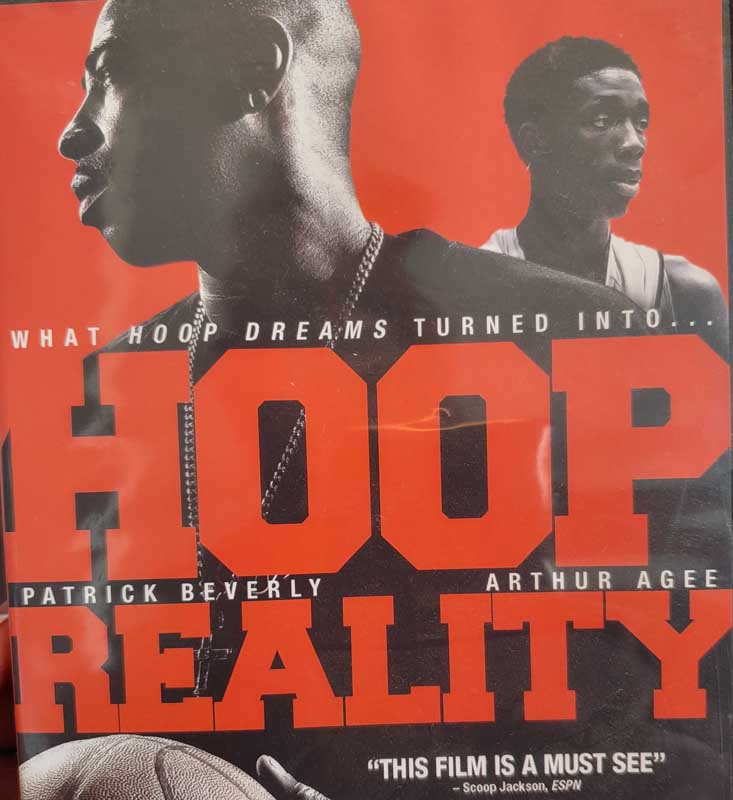
There was a sequel to Hoop Dreams, Hoop Reality. It captured Arthur’s journey post Arkansas State and chronicled the journey of a newer Marshall Commando, NBA player Patrick Beverly. Patrick also led Marshall downstate as a senior. Arthur describes his continued pursuit of the NBA after graduating from Arkansas State at the start of Hoop Reality. He decided to retire after playing in the CBA for several years. He devoted the rest of his life to his business endeavors which included being a motivational speaker and developing his own clothing lines.
Arthur Agee, Jr. Remembers Arthur Agee, Sr.
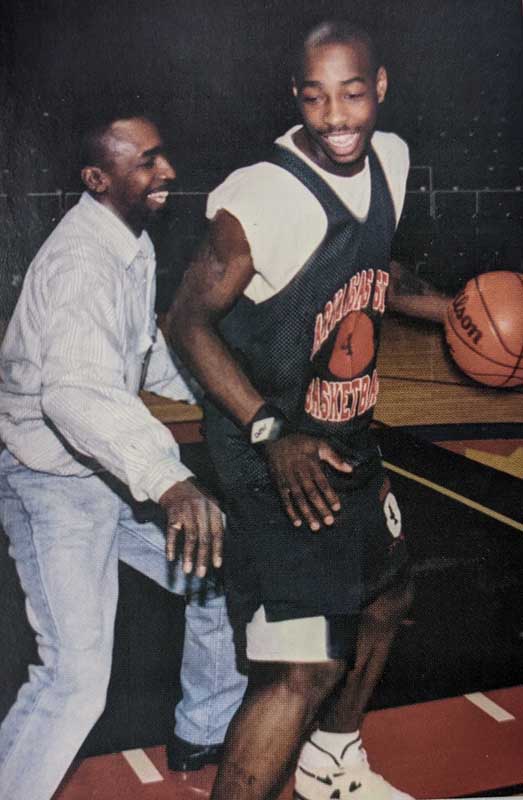
“You want to see it rain? LET IT RAIN!” In Hoop Dreams, shortly after the Marshall Commandos lose the state tournament, Arthur and Bo play one on one. They are shirtless and their family and friends look on. It was the perfect follow up segment to the earlier footage of Arthur and Bo in the same park during his eighth-grade year. Bo uttered the same words, “Make it RAIN!”
“You want to see it rain? LET IT RAIN! This is what Howard Nathan did to you!” Arthur is now a Division I prospect. He is likewise more than a match for Bo who jokingly taunts him about raining baskets out of the sky.
“And this what I did to him,” Arthur confidently says hitting the game winning jump shot. Bo takes it in stride and jokes with Sheila and the other onlookers. The scene shows that their family had recovered from the tumultuous period following Bo’s struggles. They had come full circle.
In Hoop Reality we learn that Bo grew closer to God. He started a ministry and a church. We see the seeds for this in Hoop Dreams when he returns to the family. In one scene they all attend church together. It was in that stretch where Arthur had to learn to trust his father again. In Hoop Reality we also learn that Bo had a business himself selling sports apparel and sneakers out of the family’s garage. He died one fateful night during a potential sale and robbery. They recovered from everything the family had gone through. In my opinion that was the significance of Arthur opting to share that part of their lives. They had come full circle, which I think was important to share with audiences.
Important Themes from Hoop Dreams, Sports and Life
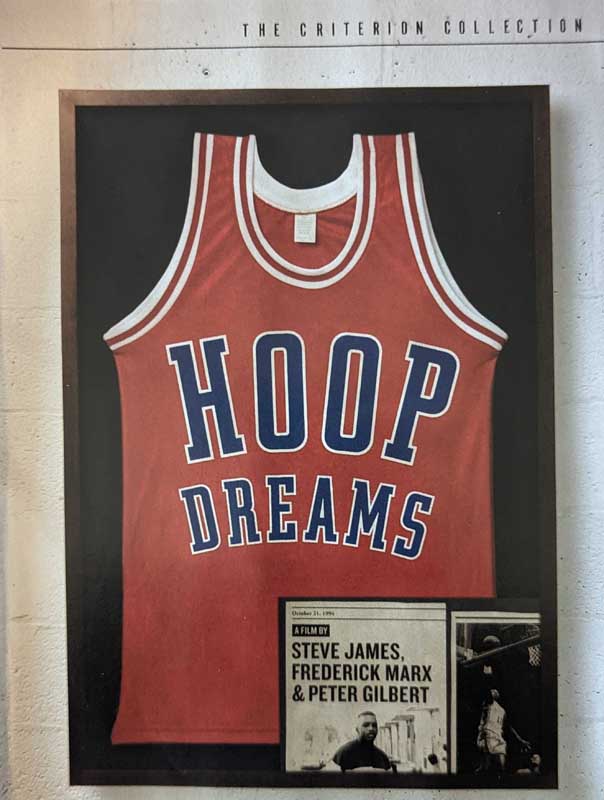
“When I heard that you were coming to St. Joe’s I felt like I was not going to be the Lone Ranger,” William jokingly notes in their co-commentary of the film. Arthur further speculates that William needed Arthur there for support. William notes that basketball was Arthur’s refuge during that tumultuous time in his life.
As described, had Arthur stayed at St. Joe’s, he and William would have teamed up. The two would have been a formidable pair. The operative words here are, would have. These two powerful words often come up in most sports (and life) conversations. The Larry Bird-led Boston Celtics’ dynasty would have continued had Len Bias not died. The Phoenix Suns would have defeated the Chicago Bulls in the 1993 NBA Finals had Cedric Ceballos not gotten hurt. The Buffalo Bills would have won Super Bowl XXV had their offensive staff adjusted earlier to the New York Giants’ defense. My basketball career would have turned out much differently were it not for my junior year injury.
The latter would have is true for countless athletes who faced adversities and injuries that deterred their sports dreams. The reality is that we never know how things would have turned out had things gone differently in key situations. This is one of the most intriguing things about sports and this is something that touched me about Hoop Dreams. It is also a key theme in my own book project, The Engineers: A Western New York Basketball Story.
Hoop Dreams’ Biggest Lesson
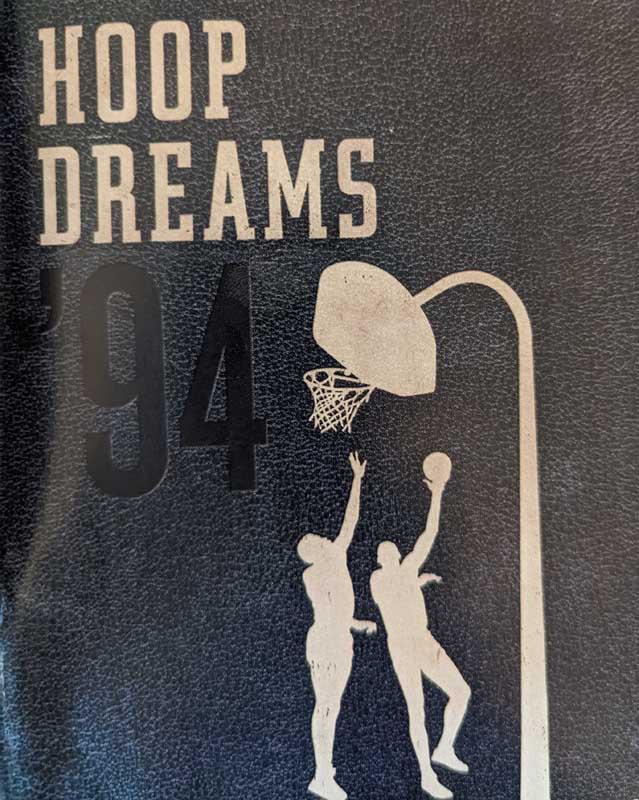
There is another common theme which you can observe in Arthur and William’s journey as it relates to his knee injury at St. Joe’s. You may have your dream, but there are also circumstances in life that are out of your control. Likewise, when adversities occur the only thing you can do is focus on the things you can control. What happened to Arthur was a perfect example of what can happen to young people in the early chapters of life.
Your life circumstances are often out of your hands. This is one of the most valuable lessons that sports can teach us. This is also why Hoop Dreams touched me the way that it did. It continues to be one of my favorite documentaries/movies to date. I highly recommend it if you have not watched it.
Arthur and William are both on YouTube right now, by the way. They have their own YouTube channel entitled, the Hoop Dreams Podcast. There they discuss basketball, other sports-related topics and life. They are also on Twitter, and I follow them there. Arthur (@tusshoopdreams) regularly tweets about Hoop Dreams. He also tweets about the clothing and paraphernalia he has created to continue his brand. Finally, he continues to encourage others to pursue their dreams.
Closing Thoughts
Thank you for reading this piece. Hoop Dreams is a three-hour documentary. I wrote this fan essay touching upon certain aspects of it and not reproduce every detail. I highly recommend watching it in its entirety yourself, especially if anything I said here resonated with you. The images in this piece are from the booklet accompanying my Hoop Dreams DVD and soundtrack. The cartoon illustrations of Isiah Thomas come from the book BASKETBALL (AND OTHER THINGS). Arturo Torres is the illustrator.
More promotional/teaser pieces for The Engineers: A Western New York Basketball Story are on the way, both via print and video as I journey through the final steps of completing the book. There is a page here on Big Words Authors for the purpose of giving a background of the book and grouping all the promotional pieces, such as this in one, for interested readers.
On my first blogging platform, the Big Words Blog Site, there are interviews of some of the most accomplished Section VI players from my era including: Jason Rowe, Tim Winn, Carlos Bradberry and Damien Foster. I also interviewed legendary LaSalle Head Basketball Coach, Pat Monti. Finally, there are several other basketball-related essays connected to my book project. If you liked this piece, please share it on your social media and leave a comment beneath this piece.
The Big Words LLC Newsletter
For the next phase of my writing journey, I’m starting a monthly newsletter for my writing and video content creation company, the Big Words LLC. In it, I plan to share inspirational words, pieces from this blog and my first blog, and select videos from my four YouTube channels. Finally, I will share updates for my book project The Engineers: A Western New York Basketball Story. I will protect your personal information and privacy. Click this link and register using the sign-up button at the bottom of the announcement. If there is some issue signing up using the link provided, you can also email me at bwllcnl@gmail.com . Yours in good sports. Best Regards.
